Your behind-the-scenes look into Israeli Wine Direct and the re-emerging Israeli wine scene!
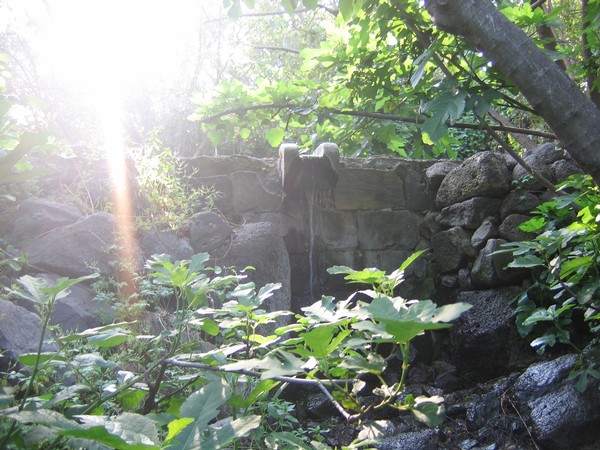
From a spring shaded by fig trees and ancient olives, through landscapes marked by a Byzantine mound, to fruit-laden trees and grazing sheep – this is the heart of the Golan Heights. Here, on its sloping hills, a special vineyard flourishes, nurtured by the land's natural gifts, with a small boutique family winery close by.
This winery is the culmination of a journey for a family deeply connected to this place since 1975, their lives interwoven with raising sheep, pressing olive oil, and baking breads. The dream of a winery, a sanctuary within this beauty, took root during evening walks collecting sheep amidst vibrant raspberry bushes, its spirit then shaped by the family's explorations around the world.
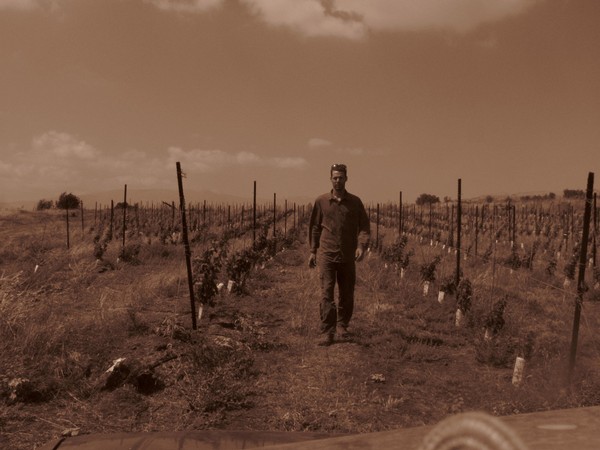
Founded in 2004 by Yotam ben Zvi, Ein Teina Winery emerged from a period of passionate experimentation. For several seasons, Yotam explored vintages with the renowned nearby Golan Heights Winery, gaining invaluable familiarity with numerous vineyard plots across the Golan and Upper Galilee. The winery's name itself, Ein Teina, meaning "Fig Spring" in Hebrew, honors the adjacent spring and creek. Through this hands-on experience, Yotam honed his processing techniques, adapted to ever-changing conditions, and cultivated the expertise and insights necessary to craft high-quality wines.
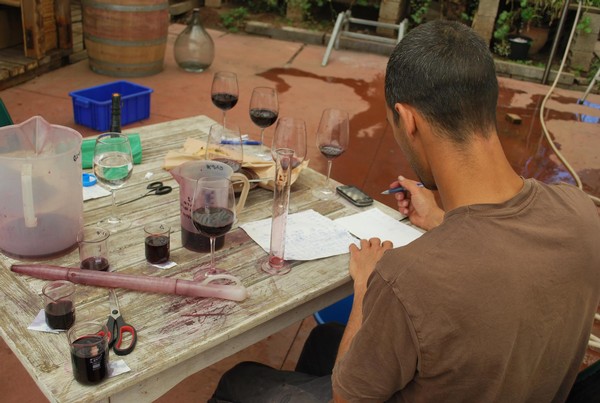
From a modest first harvest of 900 bottles in 2004, Ein Teina's dedication to exceptional wines saw production grow to 4000 bottles by 2009, and continues to expand today. Their hand-picked grapes come from carefully selected rows within the Golan's and Upper Galilee's finest vineyards. Embracing the uniqueness of each growing season, every vintage offers its own distinct blend.
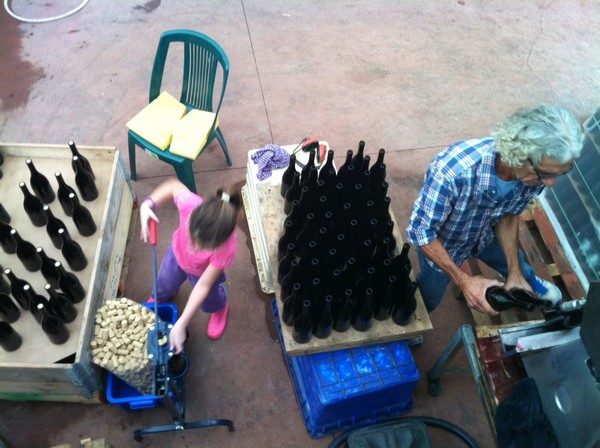
The spirit of family truly permeates Ein Teina. Even the youngest members are learning the rhythms of the vineyard and the cellar, ensuring a legacy of winemaking for generations to come. A testament to their bond, all generations, from the most senior to the youngest, can be found working together in the vineyards and winery.
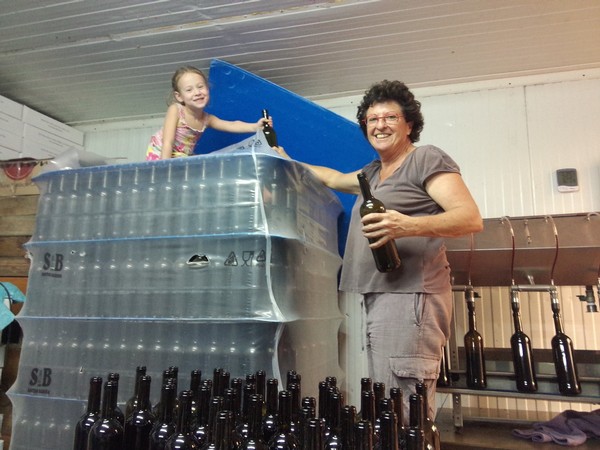
The location of the winery, the Golan Heights, a volcanic plateau in the north of Israel, possesses exceptional winemaking potential. Its high elevation, rich volcanic soil, and black basalt stone are considered ideal for cultivating grapes capable of producing high-quality wines.
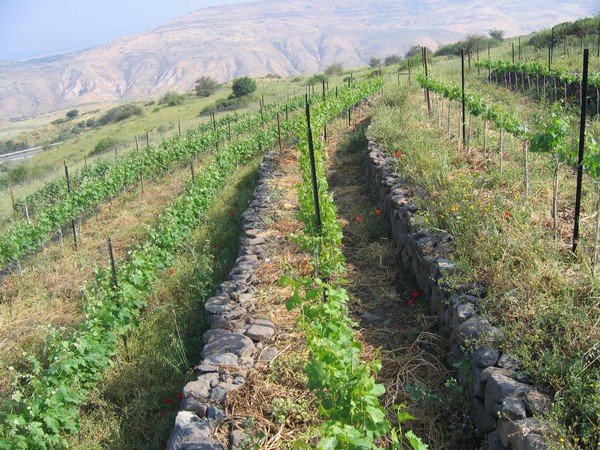
This unique terroir, characterized by significant temperature variations between seasons and elevations stretching from 1,300 to nearly 4,000 feet, allows a remarkable array of grape varieties to flourish. Here, classic Bordeaux grapes like Cabernet Sauvignon and Merlot thrive alongside Rhône stars like Syrah and Roussanne.
It is within this distinguished region that the Ein Teina boutique winery experience truly begins. Yotam ben Zvi's deep roots and knowledge of the Golan's viticultural landscape were developed through his early work with a large local winery before establishing his own.
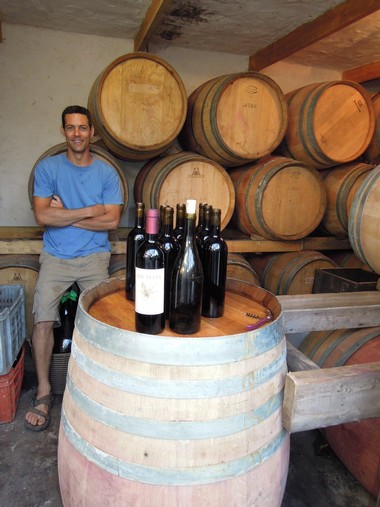
Ein Teina meticulously selects the finest of each varietal to ensure each bottle of their wines on your table will be a delight. This dedication results in their magnificent red blends, expertly balanced from Cabernet Sauvignon, Syrah, Merlot, and Petit Verdot. Moreover, Ein Teina boldly crafts exceptional single-varietal wines, including their intensely flavorful Cabernet Sauvignon and a truly groundbreaking pure, unblended Roussanne – a testament to their commitment, as this challenging grape is rarely presented on its own.
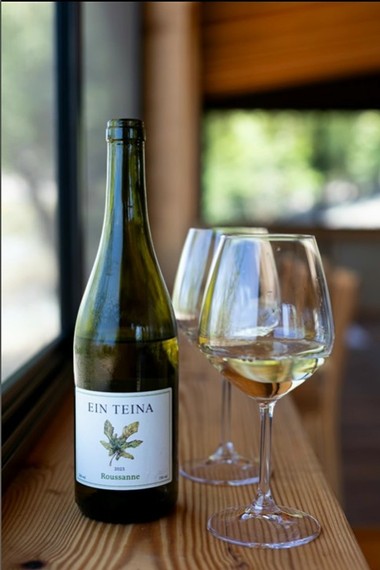
Their Roussanne truly deserves special mention. Just a year ago, we introduced its very first batch to the U.S. market, making it a rare find for American palates. What makes it even more exceptional is that this is a pure, unblended Roussanne – a true rarity in the wine world. Roussanne grapes are notoriously challenging to cultivate and are often used in blends to add complexity. However, Ein Teina takes a bold approach, proudly showcasing this unique varietal on its own.
Here's the magic: to achieve its perfect balance, the winemaker employed a fascinating technique, utilizing two harvests of the same Roussanne grapes. The first harvest yielded grapes with lower sugar levels, crucial for the wine's bright acidity and structure. Two weeks later, a second harvest brought riper grapes bursting with varietal character and intense aromas. The result is a perfectly balanced profile, featuring refreshing acidity alongside a touch of ripeness, achieving maturity without overwhelming tropical characteristics.
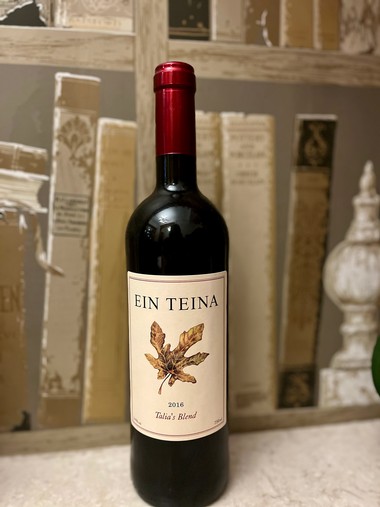
Another magnificent wine is Talia’s blend, named after a woman who created it. Indeed, all members of the ben Zvi family invest their unique talents in crafting these beautiful wines, a true collaborative effort. A testament to the winemaker's artistry, particularly a woman's touch, Ein Teina Talia’s Blend embodies both elegance and power. Imagine a symphony of ripe fruit flavors – dark berries, blackberries, even a hint of licorice – accented by a touch of spice. The wine's full body is supported by fine tannins, leading to a smooth, lingering finish. French oak aging adds subtle whispers of vanilla and toasty warmth.
A shipment of Talia's Blend, heading to NYC!
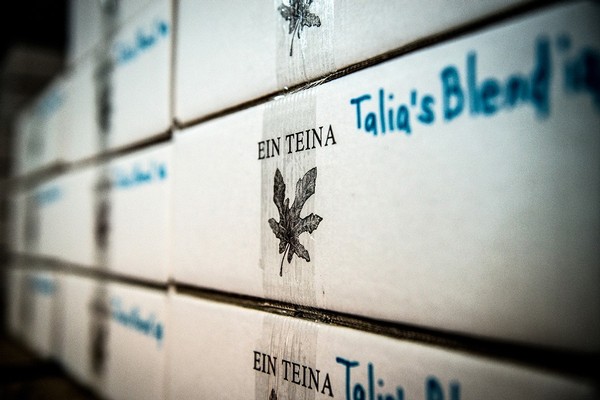
These are just a few of Ein Teina’s spectacular wines, each of which invites you to discover the artistry of this family-run estate.
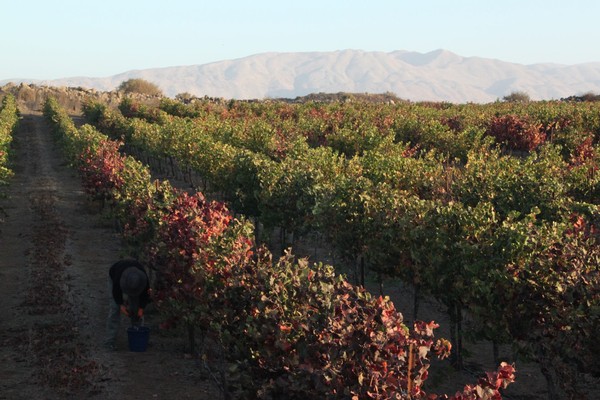
Israel's climate, though in the Middle East, is distinctly Mediterranean, heavily influenced by the winds, winter rains, and humidity carried by the proximity of the Mediterranean Sea. These winds play a crucial role in Ein Teina's vineyards, providing vital ventilation and a cooling effect that moderates temperatures and reduces humidity during the long, hot, dry summers and short, cool, rainy winters.
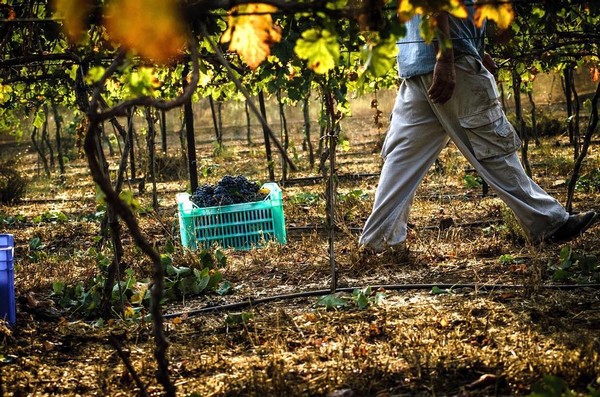
The higher elevations of the Golan Heights, where Ein Teina's vineyards are situated in the Southern Golan (with its tufa and basalt soils) and the Upper Galilee (with its volcanic, gravel, and terra rossa soils), benefit from cooler temperatures and a longer growing season. At times during winter, these elevated vineyards are covered in snow. These temperature fluctuations throughout the year are crucial for the vine's cycle and the eventual complexity of the grapes.
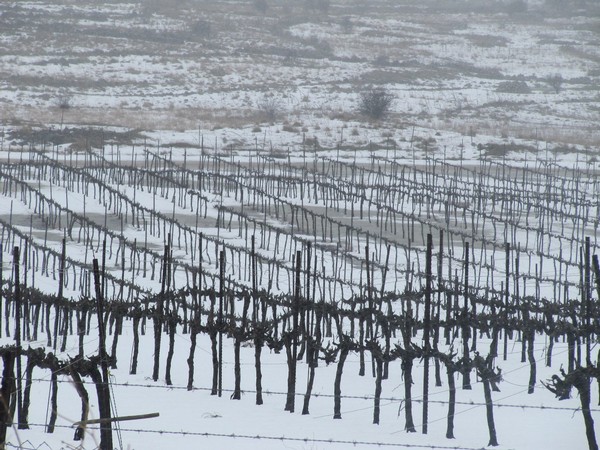
The family's dedication to the land extends to their meticulous harvest practices. Beginning typically in July and extending through October, grapes are hand-picked from specific rows within their carefully selected vineyard blocks, ensuring only the finest fruit is chosen – a task often involving all family members working side-by-side.
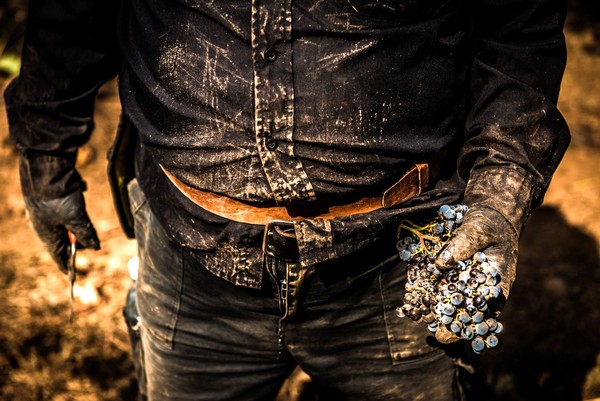
Each vintage is unique, with each year's blend determined by the circumstances of each plot. Therefore, the wine differs from year to year. Yet, Ein Teina's style remains consistent: balanced and approachable wines with a signature concentration of fruit from the basalt soils.
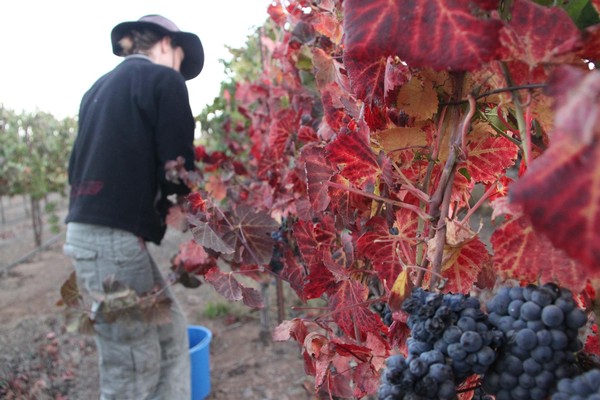
The region faces ongoing challenges with water scarcity during the hot season, requiring careful drip feed irrigation, and fluctuating temperatures. Ein Teina's skillful approach to canopy management showcases a deep understanding of how to protect their precious fruit from the intense Israeli sun. This critical practice involves strategically managing the vine's leaves and shoots to provide optimal shade and ventilation, preventing overexposure that can damage the grapes and impact their quality.
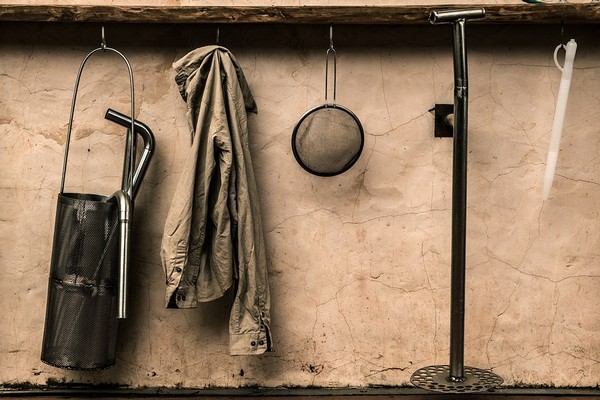
Reinventing Israeli winemaking in the 21st century in this unique and demanding region requires immense hard work, but the resulting wines are undoubtedly worth the effort.
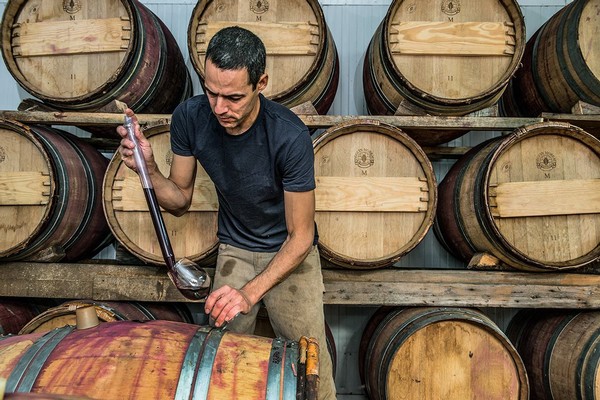
Ein Teina may not be the biggest winery in the region, and their reputation often spreads through word of mouth rather than traditional advertising, but the wines of the ben Zvi family possess a heart and soul born from their deep connection to the land and their passionate dedication. From hand-picked grapes to the final cork, each meticulously produced bottle captures the unique character of the land and the winemakers' spirit, presenting the very essence of their terroir and its people.
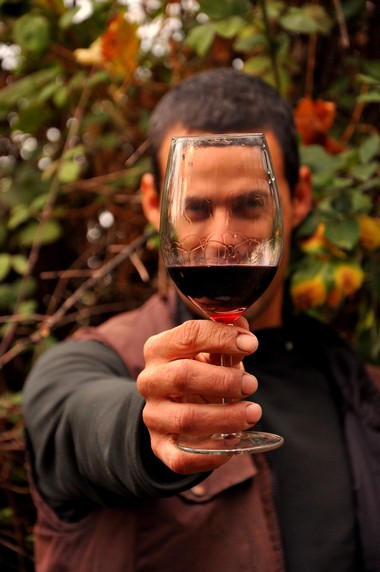
Somek, a boutique family winery in the heart of Zichron Ya'akov on Israel's Mediterranean coast, crafts exceptional wines using only grapes from its family vineyards, cultivated since 1882 when this historic region was chosen by Baron Rothschild as an ideal location for viticulture.
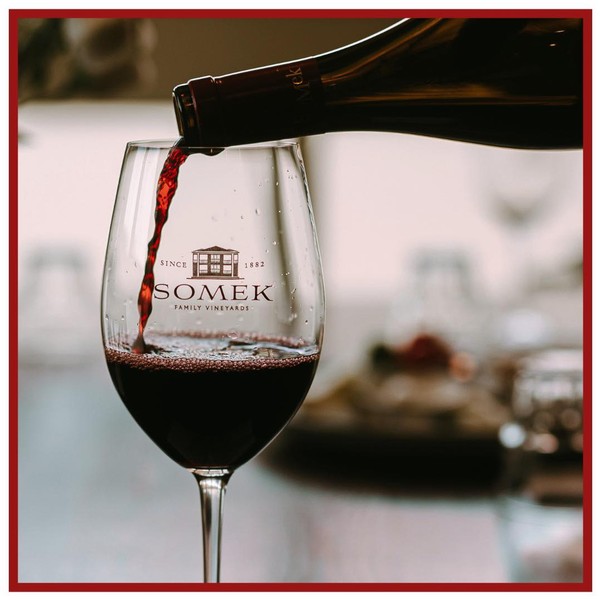
Barak Dahan represents five generations of wine grape growers in the Zichron Yaakov region. His family's story began in 1882, when his great-great-grandfather arrived from Romania with 51 other families to establish the farming village of Zamirin. Initially, their agricultural efforts faltered. However, Baron Edmond de Rothschild stepped in, determined to support their settlement in the Land of Israel. Recognizing the potential, Rothschild built a winery to provide the settlers with a sustainable livelihood. As the owner of the prestigious Chateau Lafite, he envisioned the new winery producing world-class wines, particularly for Jewish communities worldwide. In fact, he invested more in the Zichron Yaakov cellars than in Chateau Lafite itself.
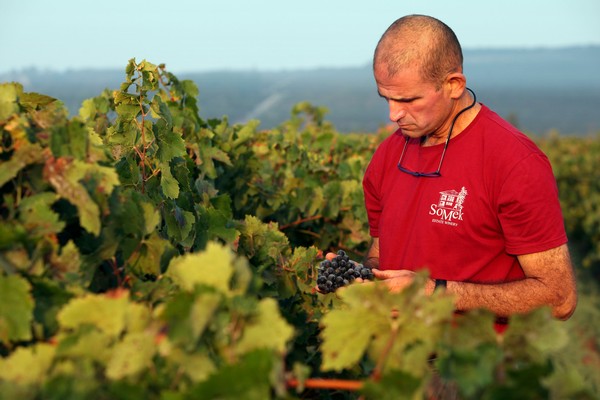
For generations, Barak's ancestors cultivated grapes for Carmel Winery, a testament to Rothschild's enduring vision. While Rothschild's initial goal of instant global acclaim eluded him, Carmel Winery has, over 120 years, earned international recognition. Today, Israel flourishes with over 250 wineries, the five largest producing 90% of the nation's wine. Yet, beyond these industry giants, a vibrant tapestry of small, family-run wineries crafts exquisite, limited-edition wines. Among them is Somek Winery, established by Barak and his wife Hila.
We invite American wine enthusiasts to embark on a journey of discovery through these hidden gems of Israeli winemaking. Each bottle is a story of passion and resilience, a testament to vintners reclaiming their heritage. With unwavering spirit, they transform their vineyards into sources of extraordinary wines, ripe for discovery.
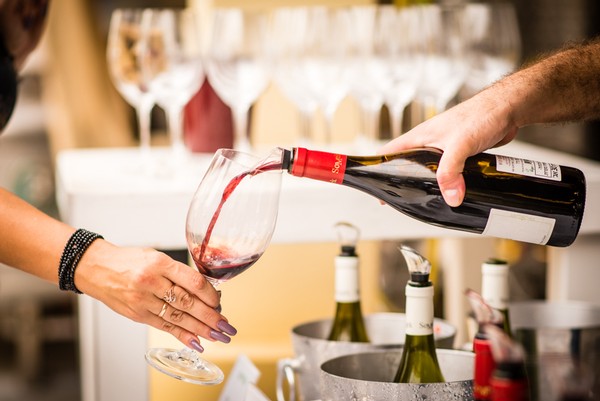
In 2003, Barak and Hila Dahan, driven by a shared vision, established Somek Winery, a testament to their dedication to crafting wines of exceptional quality from their family's vineyards. Barak, a fifth-generation vintner in Zichron Ya'akov, embodies the deep-rooted traditions of his family. His intimate knowledge of each vine and his commitment to time-honored manual techniques yield grapes of remarkable character. Hila, with a Master's degree in Oenology from the University of Adelaide, brings a scientific and global perspective to their craft. Located in Bikat Hanadiv, a valley named in honor of Baron Rothschild, Somek Winery utilizes only the finest grapes for its wines, ensuring every bottle leaving their cellars is a true masterpiece.

The synergy between Barak and Hila is the heart of Somek Winery. They blend generations of local expertise with modern winemaking artistry. Their collaborative spirit, driven by unwavering professionalism and a shared passion, ensures each wine truly embodies the unique terroir of Bikat Hanadiv. Somek's dedication to meticulous vineyard care allows their grapes to reach their full potential, capturing the very essence of the land. In the sun-drenched foothills of Zichron Ya'akov, where the fresh Mediterranean breeze whispers through the vines, their vineyards benefit from a legacy of profound care. This deep understanding of the terroir, coupled with precise pruning, thinning, and controlled irrigation, yields low quantities of grapes, but grapes of extraordinary quality.
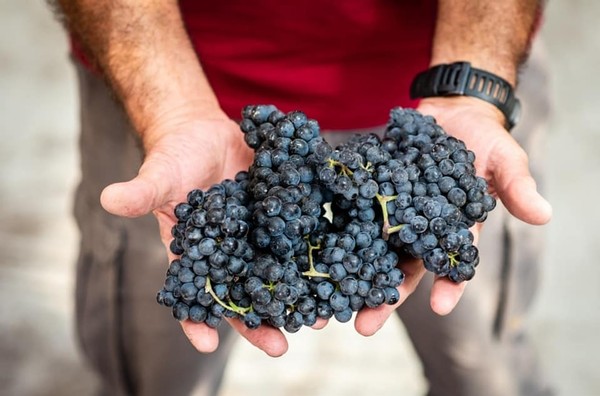
As a small family estate, Somek Winery operates with a deep respect for 'Old World' winemaking traditions. Committed to producing exceptional estate wines, they exclusively use grapes cultivated in their family's Bika'at Hanadiv vineyards, a legacy tracing back to 1882. To preserve the purest color and flavor, Somek employs a traditional basket press, along with buckets and gravity-flow techniques, eschewing the use of pumps. This dedication to time-honored methods, honed over a decade, results in Somek crafting some of Israel's finest wines. Each bottle represents the culmination of a labor-intensive, yet joyful process, where natural elements—grapes, sun, soil, wind, and rain—are meticulously guided by hand and a pure love of wine.
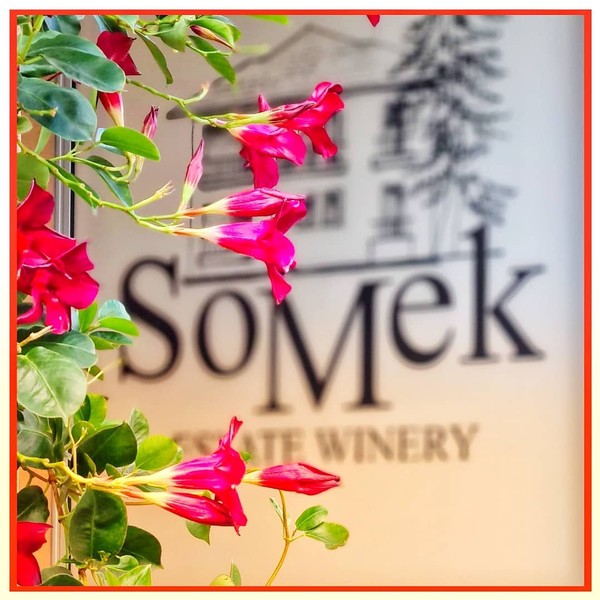
Here's a glimpse into some of their magnificent wines.
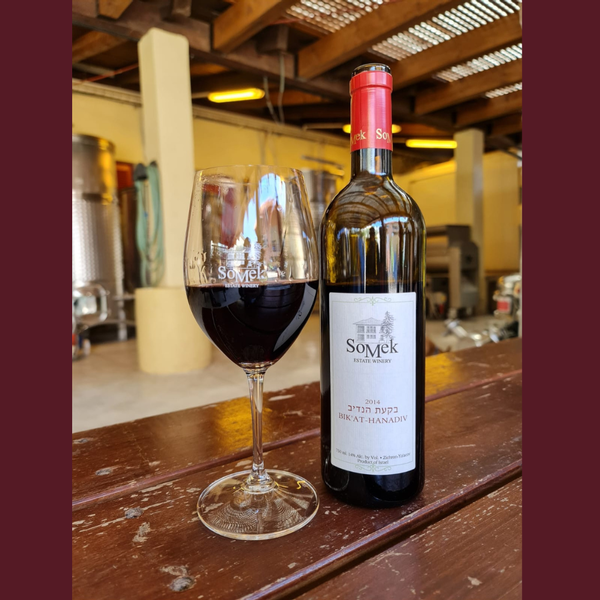
Somek Bikat Hanadiv
This flagship wine from the Somek winery takes its name from the vineyards in the Nadiv Valley, near Zichron Yaakov — a region Baron Rothschild identified in the late 19th century as ideal for viticulture.
From hand-harvested grapes, a masterful blend of Cabernet Sauvignon, Merlot, Cabernet Franc, and Petit Verdot is crafted to create Bikat Hanadiv. The wine is then aged in French oak for 24 months, followed by 24 months of bottle aging.
Deep ruby in color, this full-bodied wine offers complex aromas of plum, dark chocolate, espresso, licorice, and spice. Rich, complex, and elegant, it's the perfect complement to aged cheeses, slow-cooked stews, and celebratory meals.
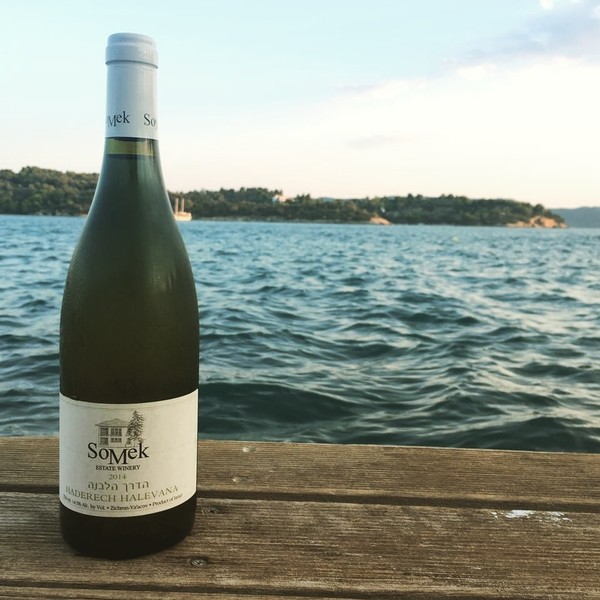
Somek White Road
Somek White Road, Or Haderech Halevana in Hebrew, takes its name from the ancient Roman road that graces Israel's Mediterranean coast. This harmonious blend of Roussanne, Viognier, and Chenin Blanc offers a brilliant pale color that invites exploration.
Well-rounded and structured on the palate, White Road presents a vivacious interplay of blossoming orchard and delicate almond notes. A symphony of flavors unfolds, with tart nectarine, pear, grapefruit, lime, and ginger leading to lingering end notes of sweet butter, honey, and Meyer lemon. A touch of minerality refreshes the aftertaste, inviting a lingering savor.
This delightful and fruity wine is perfect for picnics and cozy gatherings. Its versatility shines alongside savory appetizers, seafood, grilled fish and chicken, and complements Italian cuisine exceptionally well.
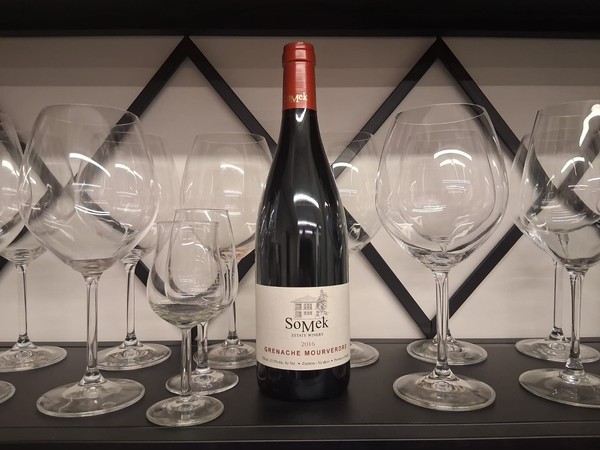
Somek Grenache Mourvèdre
Grenache, often the star of red blends, shines here with a heady aroma of violets, cinnamon, and orange peel. Mourvèdre, its perfect counterpart, adds depth and complexity with subtle smoky notes and hints of tobacco and ripe raspberries.
After aging for 24 months in French oak, Somek Grenache Mourvèdre reveals a palate bursting with juicy red berries and currants, layered with cassis, chocolate, espresso, and tobacco. The long, elegant finish offers firm tannins and a pleasing roundness. Rich in structure, this wine promises to further develop beautifully with age.
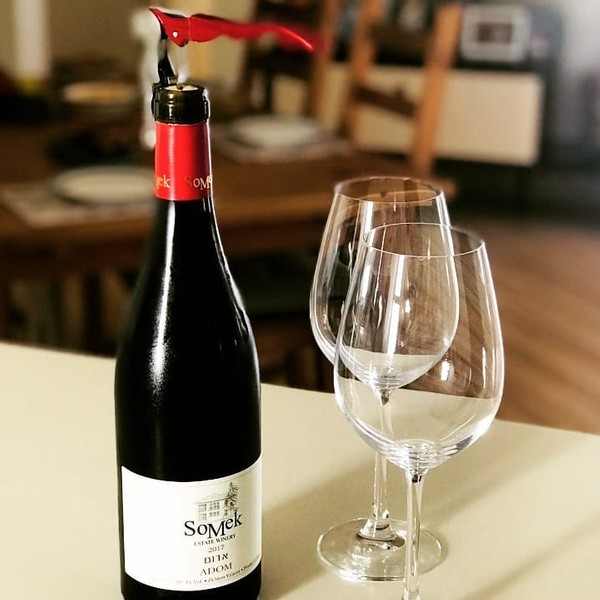
Somek Adom
Somek Adom is a perfectly balanced red blend of Syrah, Mourvedre, and Carignan, aged for 24 months in French oak barrels. This results in a wine with a deep red hue and a captivating bouquet of red fruit, chocolate, currants, Mediterranean herbs, and ripe cherry. Rich and pleasurable on the palate with a long, satisfying finish, it pairs perfectly with red meat, aged cheese, or pasta.
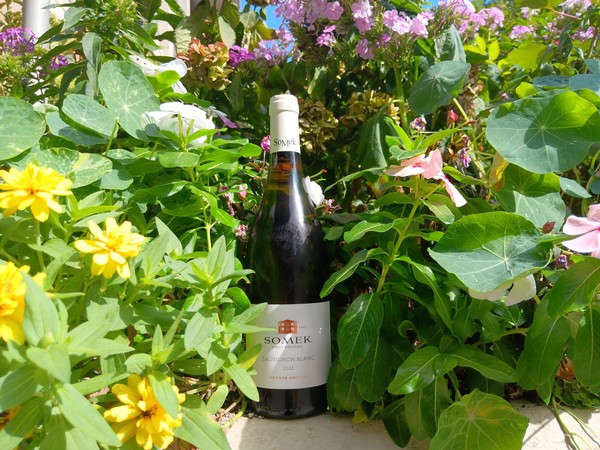
Somek Sauvignon Blanc
With crisp acidity and vibrant aromatics, this refreshing white wine bursts with notes of grapefruit, pear, and green apple, leading to a delightful palate of guava and passion fruit. Cool fermentation in stainless steel tanks preserves the pure expression of this 100% varietal Sauvignon Blanc. Floral, delicate, and delicious, it's the perfect companion to an evening with friends—or simply savor it on its own and let its flavors transport you to the Mediterranean shores of Israel, where history and heritage infuse every sip.
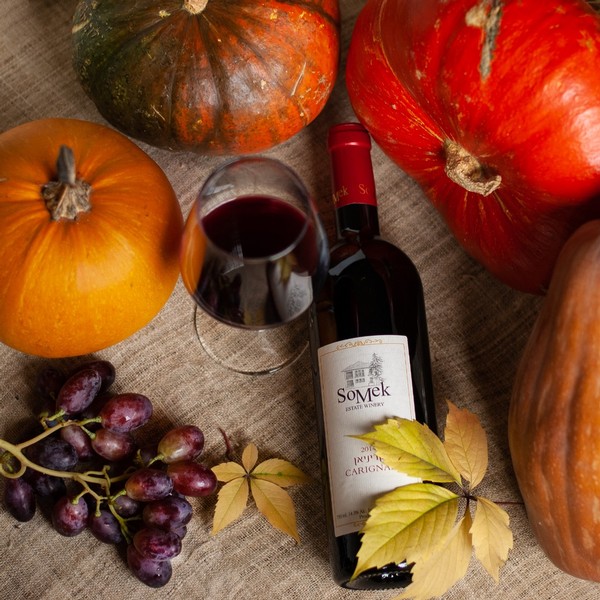
Somek Carignan
Tantalizing aromas of blackberry, black cherry, and an abundance of spices take center stage, accented by hints of vanilla and tobacco. Despite its bold personality, Somek Carignan unveils a surprisingly smooth and balanced character. Silky tannins glide effortlessly across the tongue, leading into a long, peppery finish. Good acidity and a full body ensure a delightful mouthfeel, with lingering hints of orange peel and chocolate.
Decanting for a few hours before consuming unlocks even more layers of red fruit, leather, and earthiness, creating a truly rewarding experience.
Savor this flavorful Carignan alongside a hearty meal – it's a perfect pairing for a juicy steak, tender lamb with herbs, or rich veal roast.
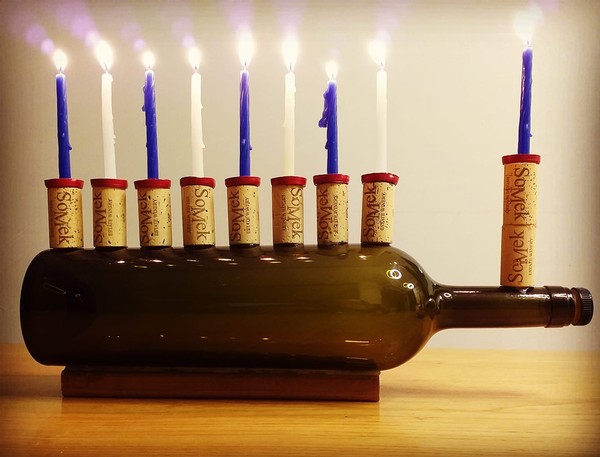
We invite you to experience the unique character of Israeli wines and find the perfect bottle to elevate your next occasion. Begin your journey with Somek wines here.
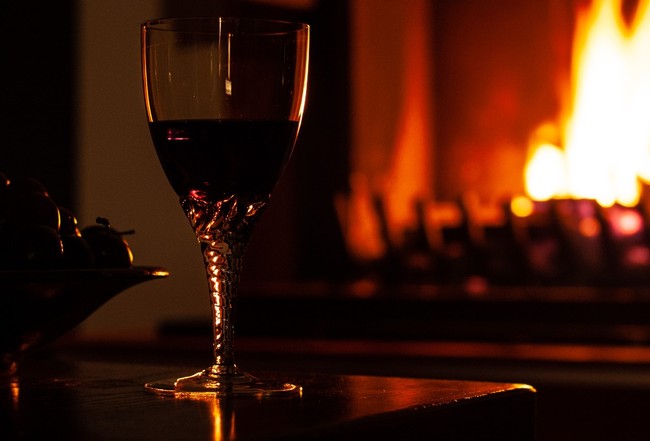
For cozy evenings by the fire or paired with hearty winter dishes, a rich Cabernet Sauvignon is an ideal choice. This robust red wine offers warmth and complexity that perfectly complements the colder months.
Cabernet Sauvignon reigns as the world's most widely planted grape variety, and wines produced from it are among the most popular globally. Its more delicate, yet charming and aromatic cousin, Cabernet Franc, also enjoys a dedicated following. These versatile wines and their blends offer delicious pairings with a wide range of foods. However, to elevate your wine dinner experience, choosing the perfect match is key.
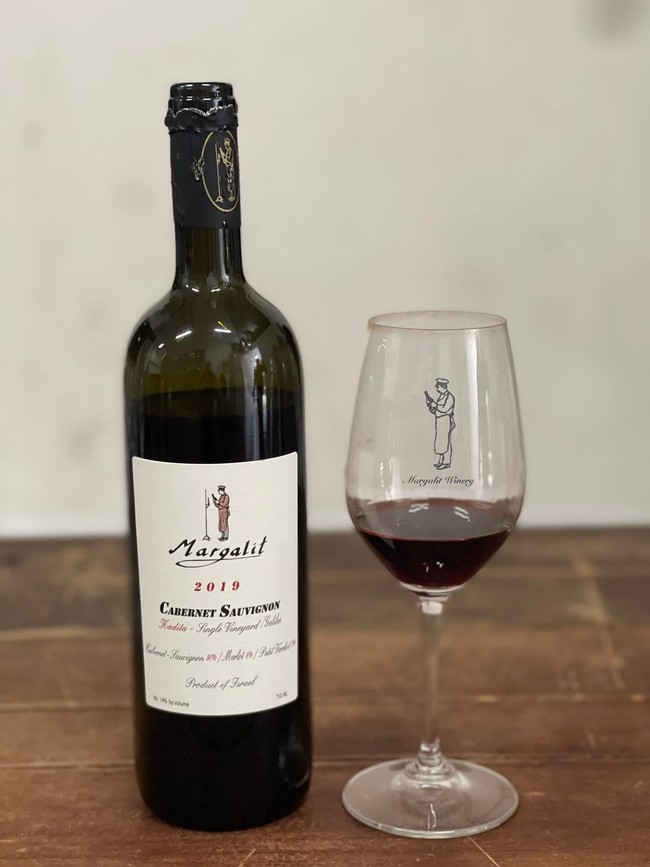
The name Sauvignon likely derives from the French word for "savage". Cabernet Sauvignon, true to its name, boasts bold flavors with a strong, distinctive character familiar to many. Dark fruits and berries such as blackberry, cherry, and blackcurrant take center stage, complemented by the alluring aromas imparted by oak barrels – vanilla, tobacco, and spices. It offers a creamy mouthfeel, with flavors that coat the palate and leave a lasting impression.
Cabernet Franc grapes produce wines known for their fruit-forward character and distinctive herbal notes. Common flavor profiles include black cherry, raspberry, and black pepper. Compared to Cabernet Sauvignon, Cabernet Franc wines tend to be lighter-bodied with a slightly lower alcohol content. This makes them a good choice for those who prefer a more refreshing red wine.
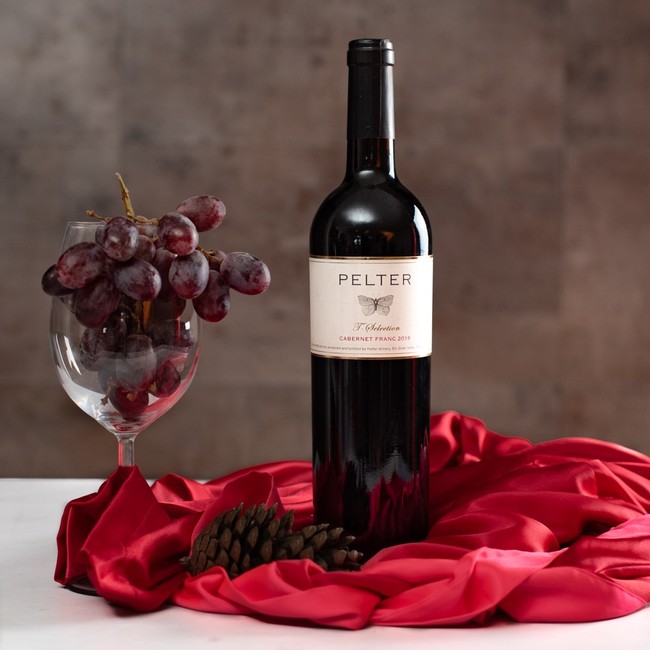
Cabernet's flavor profile can vary depending on the grape's origin. Cooler climates or higher altitudes tend to produce wines with grassy or cedary hints. Conversely, warmer regions with sun-drenched grapes yield denser wines with a more pronounced fruitiness. These variations are worth considering when pairing food with your Cabernet.
Israel exemplifies this concept, with wineries located in both the cool, mountainous north and the hot, arid south. Consequently, Israeli Cabernet can exhibit characteristics of both styles depending on the winery location. Despite these variations, all Israeli Cabernet Sauvignons share some core traits. They are typically full-bodied wines with moderate acidity and noticeable tannins. These characteristics are crucial factors when choosing the perfect food pairing.
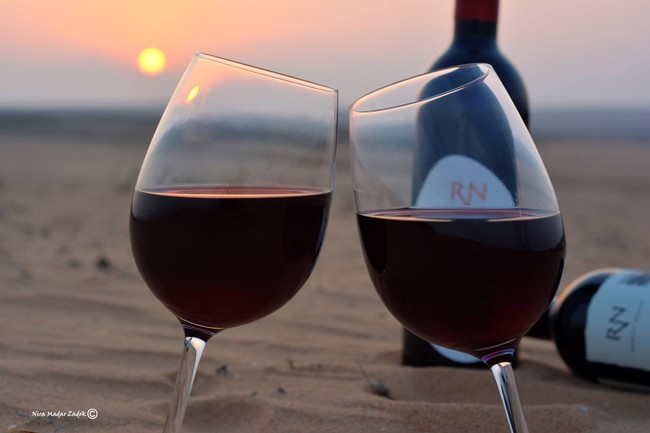
Red Meat Revelry: Cabernet Sauvignon's Savage Sip
Cabernet isn't just a wine - it's a partner in crime for a delicious dining experience. Its bold tannins make it a natural companion for red meat, especially well-marbled cuts of beef or lamb. The richness of these meats helps balance the wine's tannins, while the high acidity of the wine cut through fat, cleansing your palate for a delightful experience with every bite.
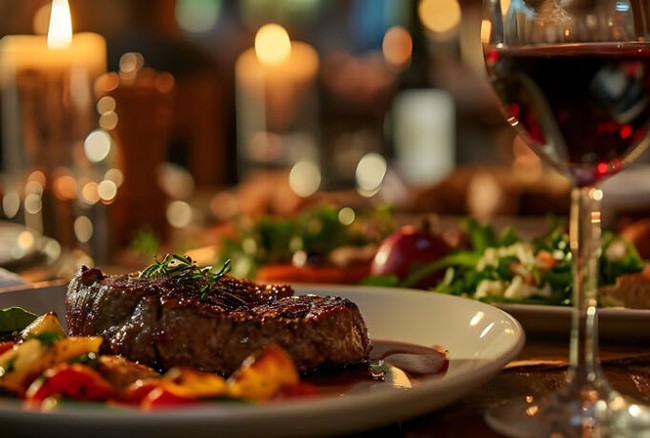
Beef: Your Guide to Cabernet Pairings
New York Strip: This popular steak boasts a robust beef flavor and just enough fat to be a perfect match for Cabernet Sauvignon. Pelter T-Selection Cabernet Sauvignon would be a top contender. This full-bodied wine boasts a very rich fruit flavor, supported by hints of anise, raisins, and earthy minerals. The pairing elevates your enjoyment of both the steak and the wine.
Prime Rib: A hearty dish like prime rib demands a rich red wine, and Cabernet Sauvignon rises to the occasion beautifully. For the ideal flavor combination, opt for steaks cooked rare to medium-rare, allowing the juicy tenderness to shine. Pair this with an aged Margalit Cabernet Sauvignon, and prepare to be swept away by a symphony of flavor in every bite.
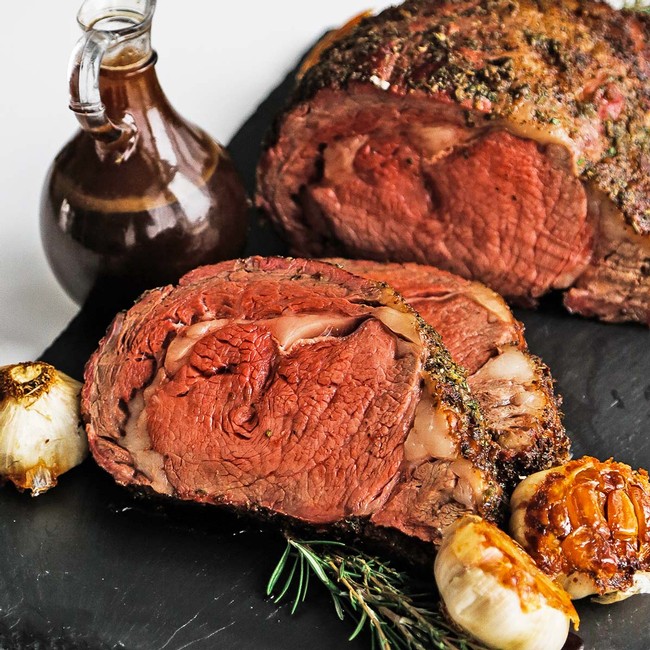
Filet Mignon: Don't shy away from pairing Cabernet with leaner cuts! Choose a lighter style Cabernet like Ramat Negev Cabernet Franc with its full body and softer tannins to complement the delicate flavor of filet mignon. This wine's plush tannins and rich plums and red berries with herbal hint notes will beautifully complement the tender meat. A rich balsamic glaze or a dark mushroom sauce could further enhance this delicious pairing.
Beyond Steaks: Beef Stew
Cabernet Sauvignon isn't limited to just steaks! Beef stew, a hearty and comforting dish, also pairs exceptionally well with Cab. The wine's bold character complements the richness of the slow-cooked stew, creating a delightful harmony. Consider a medium-bodied Cab, like Ramat Negev Kadesh Barnea Cabernet Sauvignon, for the perfect match.
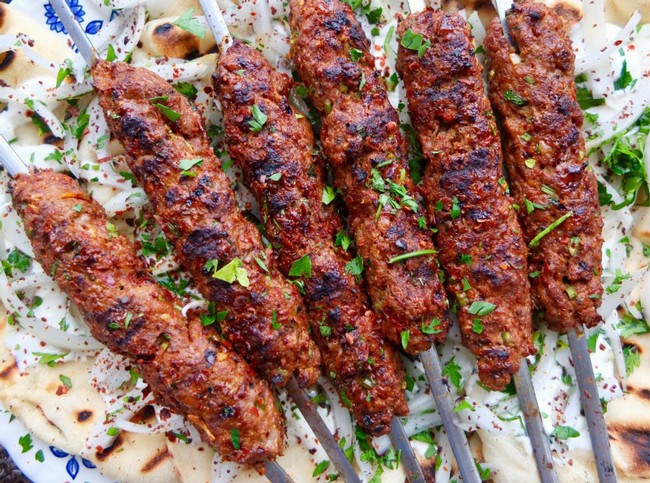
Kofta Kebabs: A Match Made in the Mediterranean
Kofta kebabs, traditionally skewered and seasoned ground meat, pair beautifully with Israeli Cabernet Sauvignon. Whether crafted with beef or lamb, these flavorful kebabs find harmony with the wine's bold character. Accompanied by fresh vegetables and a cool, refreshing tzatziki sauce, with a few sprigs of mint for an extra touch, the dish becomes a symphony of Mediterranean flavors. Somek Bikat Hanadiv, a Cabernet Sauvignon-based blend from the Mediterranean shore winery, exemplifies a perfect match for this delectable dish.
Moussaka: A Mediterranean Duet with Cabernet
Moussaka, a layered masterpiece of eggplant, ground meat (or lentils for a vegetarian option!), creamy béchamel sauce, and spices, creates a delightful harmony with any Israeli Cabernet Sauvignon. Eggplant's slight bitterness can be a virtue when paired with a tannic wine like Cabernet. The two elements balance each other out, leaving you with a smooth and rich wine experience.
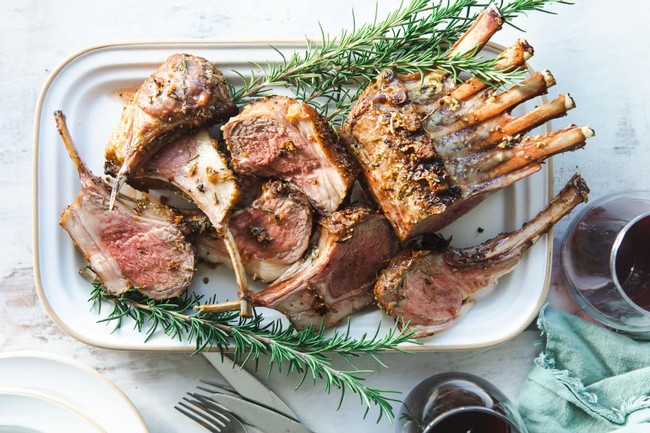
A Flawless Pairing: Lamb & Cabernet
Roasted or grilled lamb is another fantastic companion for Cabernet Sauvignon. Lamb's complex flavors find beautiful balance with the wine's tannins and fruttiness. Similar to beef, lamb's richness and fattiness benefit from Cabernet's structure, while the wine's fruit notes enhance the overall flavor profile. If you're feeling adventurous, try pairing your lamb with rosemary and thyme. These common accompaniments to lamb further enhance this delightful pairing by echoing Cabernet Sauvignon's herbal notes, creating a symphony of flavors that explodes on your palate.
If you're looking for a specific recommendation, consider Ein Teia Talia’s blend from the Golan Heights. This unique blend of Cabernet Sauvignon, Merlot, Syrah and Petit Verdot offers a complexity and depth of ripe fruit flavors with a hint of spice, and its fine tannins are a perfect match for lamb.
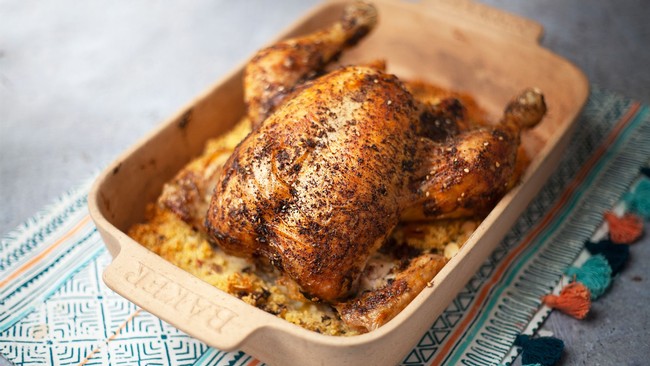
Uncorking Unexpected Delights: Red Wines for Chicken
While white wines are traditionally paired with chicken and poultry, there are ways to make them work beautifully with bold reds like Cabernet Sauvignon, or even better, its slightly more delicate cousin, Cabernet Franc. The key lies in the cooking method - grilling or braising chicken can bring out flavors that complement the bold tannins and fruitiness of red wines.
Mediterranean Matchmaker: Roasted Chicken & Israeli Cab
A perfectly roasted chicken, with its crispy skin and juicy meat, can be a fantastic companion for any full-bodied red wine, including Cabernet. Take it a step further and try a Lebanese-style roast chicken. This dish, popular in the eastern Mediterranean, features a unique blend of spices that beautifully complements the fruit and tannins of Israeli Cabernet. Serve it alongside Israeli couscous for a truly delightful and flavorful pairing.
Cabernet & Chicken: A Saucy Symphony
Chicken dishes featuring tomato-based sauces are another excellent option for Cabernet Sauvignon pairings. The rich tomato sauce adds weight to the dish, creating a better match for the wine's full body. Plus, the acidity in the tomato sauce helps to balance the tannins in the Cabernet. Adding ingredients like mushrooms and peppers further enhances the pairing by introducing additional flavor layers. For an even more robust match, consider a tomato sauce with a strong garlic presence - these bolder flavors can stand up to the powerful character of Cabernet Sauvignon.
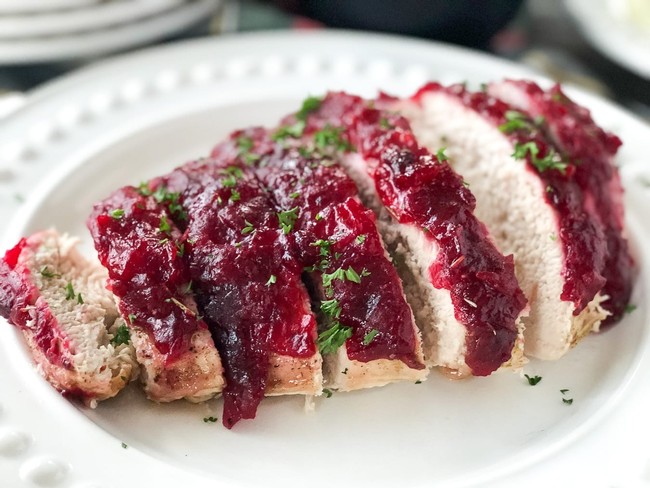
Turkey and Cranberry: A Classic Redefined
Roasted turkey with cranberry sauce might not be the first dish that comes to mind when thinking about Cabernet Sauvignon pairings. However, the bright acidity and sweetness of the cranberry sauce can create a surprisingly delightful match with the wine's fruit notes. For an unexpected and delicious twist, try a medium-bodied Julia Cabernet Sauvignon from Western Galilee. Its softer tannins and aromas of chocolate, cherries, and mint beautifully complement the pairing of turkey and cranberry sauce. The combination is both unexpected and delicious!
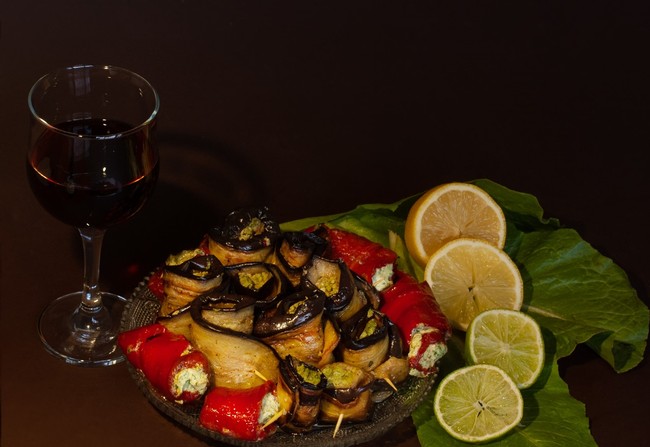
Cabernet Sauvignon: A Vegetarian Delight
While many consider Cabernet Sauvignon a red meat-only wine, it can also be a fantastic companion for vegetarian dishes, particularly those with robust flavors and heartier textures. Think mushrooms or hearty vegetables like eggplant. Here are some delicious pairings to explore:
Eggplant Parmesan: A Match of Textures
Eggplant Parmesan is a fantastic vegetarian option for any Cabernet, especially Sauvignon. Eggplant's slight bitterness and the richness of cheese are both welcome companions to Cabernet. The savory, cheesy, and herbaceous character of this dish complements the wine beautifully. The soft and creamy texture of the eggplant also provides a pleasing contrast to the wine's tannins. Each bite is a symphony of textures and tastes, and Israeli Cabernet elevates the experience even further.
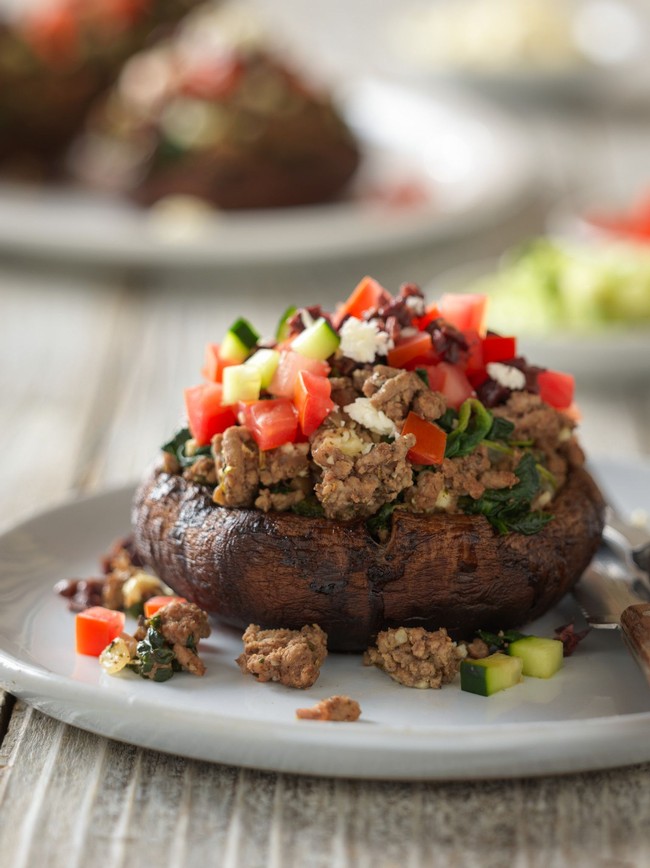
Stuffed Mushrooms Symphony
Grilled or baked portobello mushrooms, bursting with delicious fillings like cheese, butternut squash, tomatoes, and herbs are a culinary delight. To elevate this dish even further, pair it with a complex and aromatic wine like Pelter Cabernet Franc. The full-bodied Cab Franc beautifully complements the savory flavors of the stuffing, while also enhancing the earthy notes of the mushrooms. Packed with aromas of bell pepper, white pepper, pecan, and tobacco, Pelter Cabernet Franc creates a symphony of flavor with every bite.
Mushroom Risotto: Creamy Comfort Meets Bold Wine
Mushroom risotto is another vegetarian gem that pairs exceptionally well with both Cabernet Sauvignon and Cabernet Franc. This luxuriously creamy dish, featuring rice, parmesan cheese, and an assortment of mushrooms, offers a delightful meeting of textures and tastes. The wine's acidity acts like a magic wand, cutting through the richness of the risotto and allowing you to savor every single bite. Meanwhile, the creaminess of the dish helps soften the Cabernet's tannins, creating a harmonious balance. Finally, the bold flavors of the wine beautifully complement the earthiness of the mushrooms, resulting in a truly satisfying and complex pairing.
Garden Harmony: Cabernet Franc & Roasted Vegetables
Cabernet Franc's herbal notes and bright acidity pair beautifully with a wider variety of roasted vegetables, including red peppers, mushrooms, spinach, arugula, and roasted or grilled eggplant.
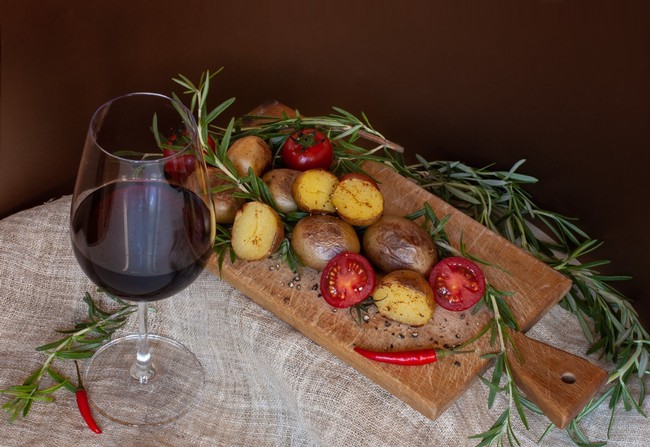
Rosemary Roasted Potatoes: Earthy Delights
Simple yet flavorful, rosemary roasted potatoes are another unexpected vegetarian option that pairs beautifully with Israeli Cabernet, particularly those crafted in cooler regions like the Golan Heights. A specific example is Pelter Trio, a beautifully crafted blend of Cabernet Sauvignon, Cabernet Franc and Merlot. Tossed with olive oil, salt, pepper, and fragrant rosemary, these potatoes offer a delicious contrast to the wine's bold character. Rosemary's pungent, earthy notes beautifully complement the Pelter Trio’s herbal notes, making it a surprisingly delightful combination. Rosemary truly makes almost any dish more red wine friendly!
Salads with a Fruity Twist
While Cabernet Sauvignon might overpower a simple green salad, it can be a fantastic match for salads with bolder ingredients. Salads featuring red fruits or a fruit-based dressing can create a delightful harmony with the wine's fruity aromas and flavors. Think fall options or a classic steak and blue cheese salad – both can be surprisingly delicious pairings for an enjoyable wine like Assaf Cabernet Sauvignon Silver. This wine boasts alluring aromas of plum, blueberries, violets, and a hint of fresh mint and dried figs, the perfect finishing touch to every mouthful of your salad.
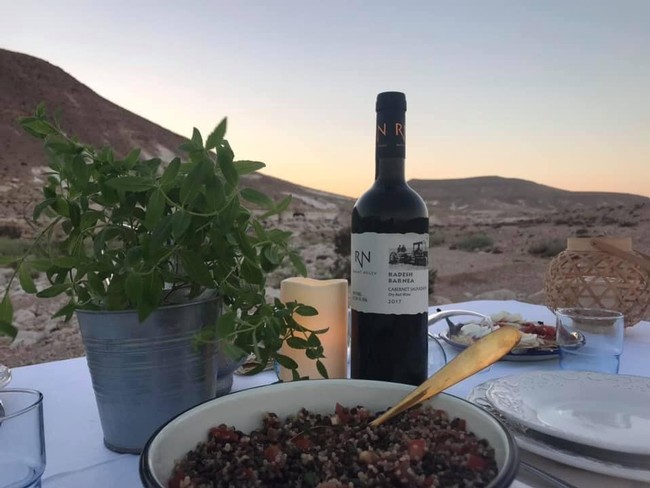
Grains & Grapes
Cabernet can be a delightful match for Middle Eastern grain salads, like a Green Beans and Freekeh Salad with Tahini Sauce. Cabernet Sauvignon’s profile complements the smokiness of freekeh and its nutty texture, creating an intricate impression. Bulgur salads with fresh herbs and vegetables, reminiscent of Yotam Ottolenghi's style, can be a great match with Cabernet Franc, especially with a herb dressing that echoes the Franc's herbal character.
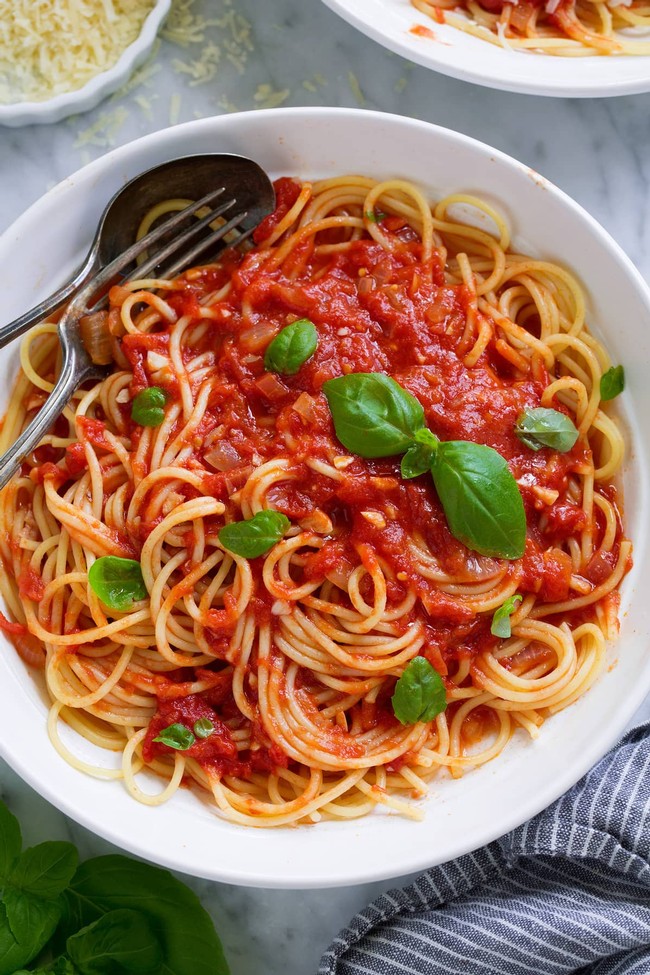
Italian Food
Perhaps it's no surprise that East Mediterranean wines, like Israeli Cabernet, work marvelously well with Italian cuisine. Tomato sauce, a cornerstone of Italian cooking, boasts a natural acidity. To avoid tasting bland alongside the food, the accompanying wine needs a similar level of acidity. This is where Cabernet Sauvignon and Cabernet Franc shine. Their bright acidity, honed by the warm eastern Mediterranean sunshine, beautifully complements the tang of tomato sauce, whether you're enjoying pizza, pasta, or lasagna. This creates a delightful harmony on your palate, elevating your entire Italian food experience.
Pizza Perfection
From classic cheese pizzas to gourmet creations, Israeli Cabernet elevates your pizza experience. This bold red wine pairs exceptionally well with melted cheese. For a vegetarian option, vibrant peppers and mushrooms complement the wine beautifully. Meat lover's pizzas overflowing with savory toppings find a perfect match as well. For a truly delightful surprise, try your pizza with a complex, fruity, and spicy Kishor Kerem Red crafted from Cabernet Sauvignon, Cabernet Franc and Petit Verdot grapes.
Pasta Paradise
Who knew a simple pasta marinara could be elevated by Cabernet Sauvignon? This Italian staple allows the quality of the tomato sauce and the wine to truly shine. Ramat Negev Kadesh Barnea Negev wine, a skillfully crafted blend of Cabernet Sauvignon, Shiraz, and Cabernet Franc, pairs beautifully with marinara. The wine's bright acidity cuts through the tanginess of the tomato sauce, creating a delightful harmony on your palate.
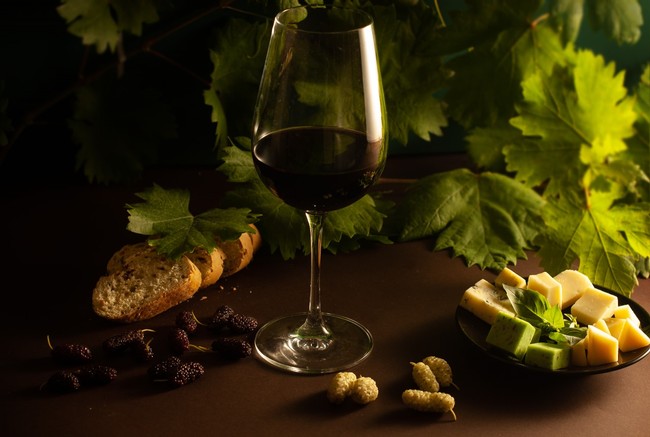
Cabernet and cheese: A Heavenly Match
And last, but not least, we come to the classic wine and cheese pairing. Cabernet Sauvignon makes a perfect sidekick to semi-hard, aged varieties like cheddar, Gouda, and Gruyère. These cheeses boast a high enough fat content, allowing them to balance the tannins in the wine. Additionally, their aging helps to coax out the wine's fruity notes. A stronger blue cheese like Roquefort is a delicious choice, too. It’s tangy, salty, and intense, making it an ideal match for a more intense wine.
Here's a quick guide to finding your ideal cheese match:
Aged Cheddar: Pair a mature cheddar with a similarly aged Cabernet Sauvignon for a powerful flavor combination. For a lighter experience, enjoy a younger cheddar with a younger Cabernet.
Gouda & Gruyère: These semi-hard cheeses offer a delightful balance with most Cabernet Sauvignons.
Blue Cheese: Roquefort is a classic choice, but explore other strong blue cheeses for a unique adventure.
For goat cheese lovers, Cabernet Franc pairs beautifully. It also complements young pecorino and other young sheep cheeses.
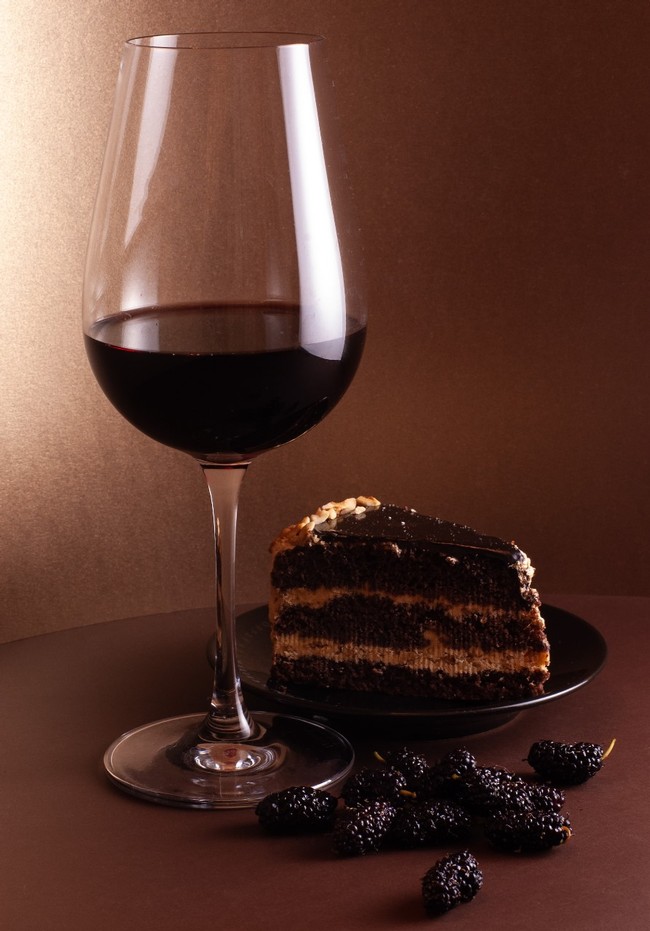
A Bonus Delight: Cabernet's Sweet Seduction
Cabernet Sauvignon has a surprising secret weapon: it can be a delightful partner for decadent desserts, particularly those featuring dark chocolate. The rich, intense flavors of dark chocolate find a beautiful counterpoint in the wine's fruit notes. But not just any Cabernet will do. Look for a rich and dense Cabernet Sauvignon with a pronounced dark berry character, like Margalit Cabernet Sauvignon.
This winery crafts its Cabernet from grapes grown in the Upper Galilee, where volcanic soils and dramatic day-night temperature swings contribute to the wine's unique fruit flavors and high quality. Margalit Cabernet Sauvignon reveals an array of currant, blackberry, and black licorice. These notes are complemented by supple tannins, creating a complex and enjoyable drinking experience. Its combination with a dark chocolate cake creates a symphony on your palate, with the dessert's sweetness balancing the wine's tannins for a truly harmonious experience.
But wait, there's more! Cabernet Franc can also be a delightful companion to certain fruit pies. Look for pies with dark or red fruits like blackberry, blueberry, cherry or strawberry. The wines’ flavors complement the tartness and sweetness of the pie filling, creating a delightful contrast and a truly satisfying finish to your meal.
The key is to choose a pie with a filling that can stand up to the boldness of the wine. This unexpected pairing adds another dimension to the versatility of Israeli Cabernet.
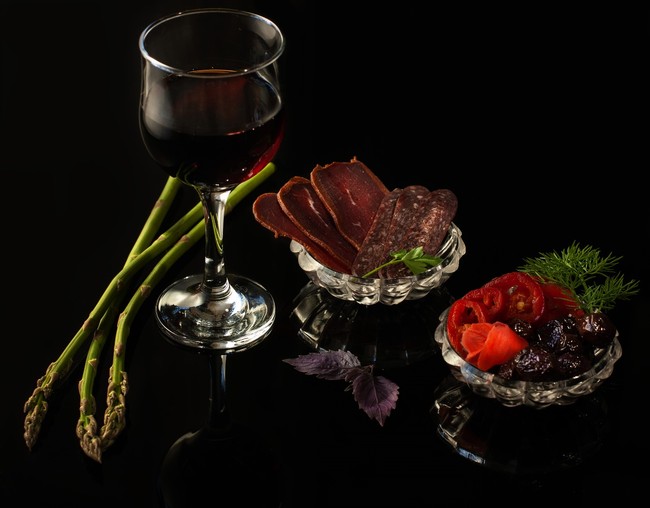
Cabernet pairing principles, summarized:
Finding Harmony: Food and Wine Intensity
For a truly harmonious pairing, food and wine should mirror each other's intensity. A robust wine might overwhelm a subtle meal, leaving the food bland.
However, strategic pairings can create magic. A full-bodied Cabernet Sauvignon, for example, can elevate a flavorful dish. And the right food can unlock hidden notes in the wine, creating a delightful synergy.
Spicy Challenges: Maintaining Balance
For this reason, pairing Cabernet with very spicy foods like Indian curries might not be ideal. Both the wine and the food can intensify each other, leading to an overly spiced dish and a burning sensation in the wine. Remember, not all flavors benefit from being intensified. The goal is to find a pairing that complements the food's existing profile, allowing both the wine and the dish to shine without overwhelming the other.
Acidity and Tannins: The Pillars of Pairing
Acidity and tannins play a crucial role in successful food and wine pairings. Cabernet with high acidity and tannins pairs beautifully with fatty cuts of meat or rich, flavorful dishes.
Temperature Matters: The Finishing Touch
For best results, serve your wine slightly below room temperature, ideally between 55°F and 65°F.
The Best Company: Enjoying the Moment
For even better results, share your delicious dinner and the perfectly paired wine with your loved ones! Israeli wines, bursting with flavor and sunshine, are traditionally enjoyed in the company of friends and family. Just like the people who craft them, these wines reflect a spirit of warmth, generosity, and celebration. Raise a glass, share a laugh, and create memories that will linger long after the last sip.
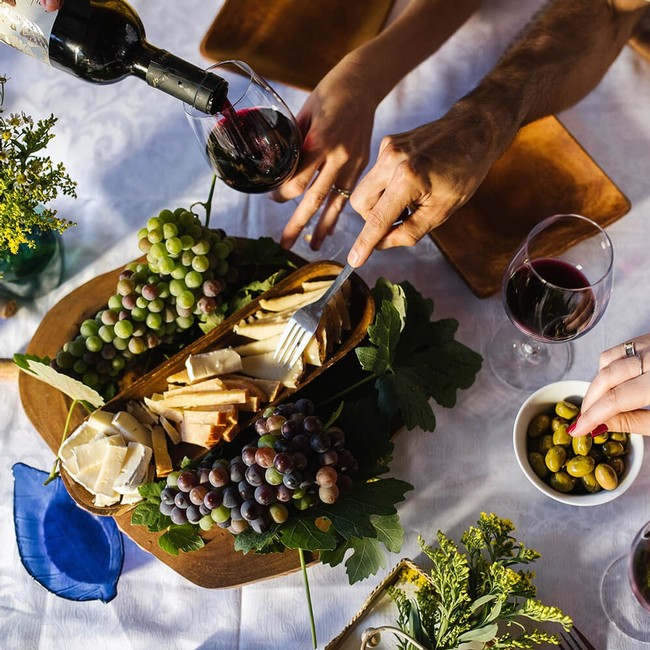
Sukkot, the festival of the harvest, is just around the corner. What better way to celebrate than with a glass of exceptional Israeli wine? These wines, born from the sun-drenched vineyards of Israel, offer a rich tapestry of flavors that perfectly complement the festive spirit of Sukkot.
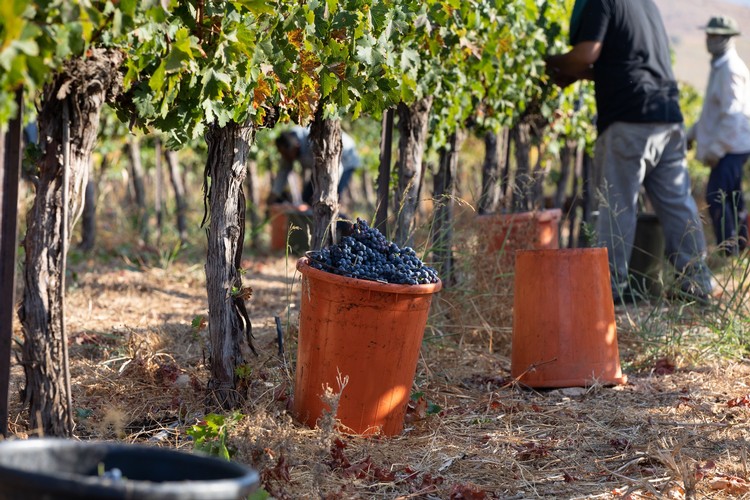
It may come as a surprise, but Israel is one of the oldest wine civilizations in the world. Archaeological evidence points to ancient wine presses dating as far back as the 3rd millennium B.C., scattered across the land. Grapes were cultivated in regions like Judea, Samaria, and Galilee, and Israeli wine was renowned throughout the Mediterranean world long before the rise of French vintages. During the Roman Empire, wine became a significant export and economic mainstay of the region. Numerous ancient wine presses from this era attest to the industry's prominence.
However, this flourishing winemaking tradition was followed by a more than thousand-year hiatus, during which grape cultivation for wine production was virtually nonexistent. It wasn't until the last century that winemaking began to reemerge and thrive in Israel. Today, the country boasts a thriving wine industry, with Israeli winemakers garnering international acclaim. The Mediterranean climate, ideal for viticulture, has once again proven its suitability for producing exceptional wines. Moreover, wine has long been deeply intertwined with Jewish traditions and customs.
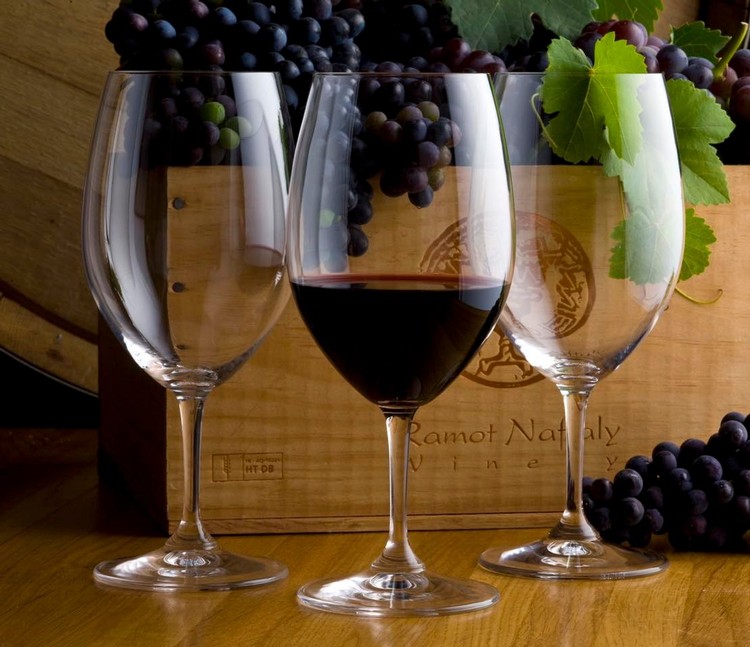
Beyond the large commercial wineries, modern day Israel is home to hundreds of boutique wineries producing exquisite wines in smaller quantities. These hidden gems are the focus of our mission: to introduce you to high-quality Israeli wines that you may not have encountered before. Each bottle tells a unique story, crafted by dedicated families of vintners who are reviving the glory of Israeli winemaking. Despite the challenges they face, these passionate individuals continue to cultivate their vineyards and produce exceptional wines.
One of such boutique family wineries is Ramot Naftaly Winery, nestled in the Moshav Ramot Naftaly of the Upper Galilee. They produce a limited amount of perfect kosher wines. Its vineyards stretch across the picturesque Kadesh Valley, a fertile rift cradled by towering mountains. This ancient wine-growing region has been producing high-quality grapes since ancient times, and the tradition is continued today.
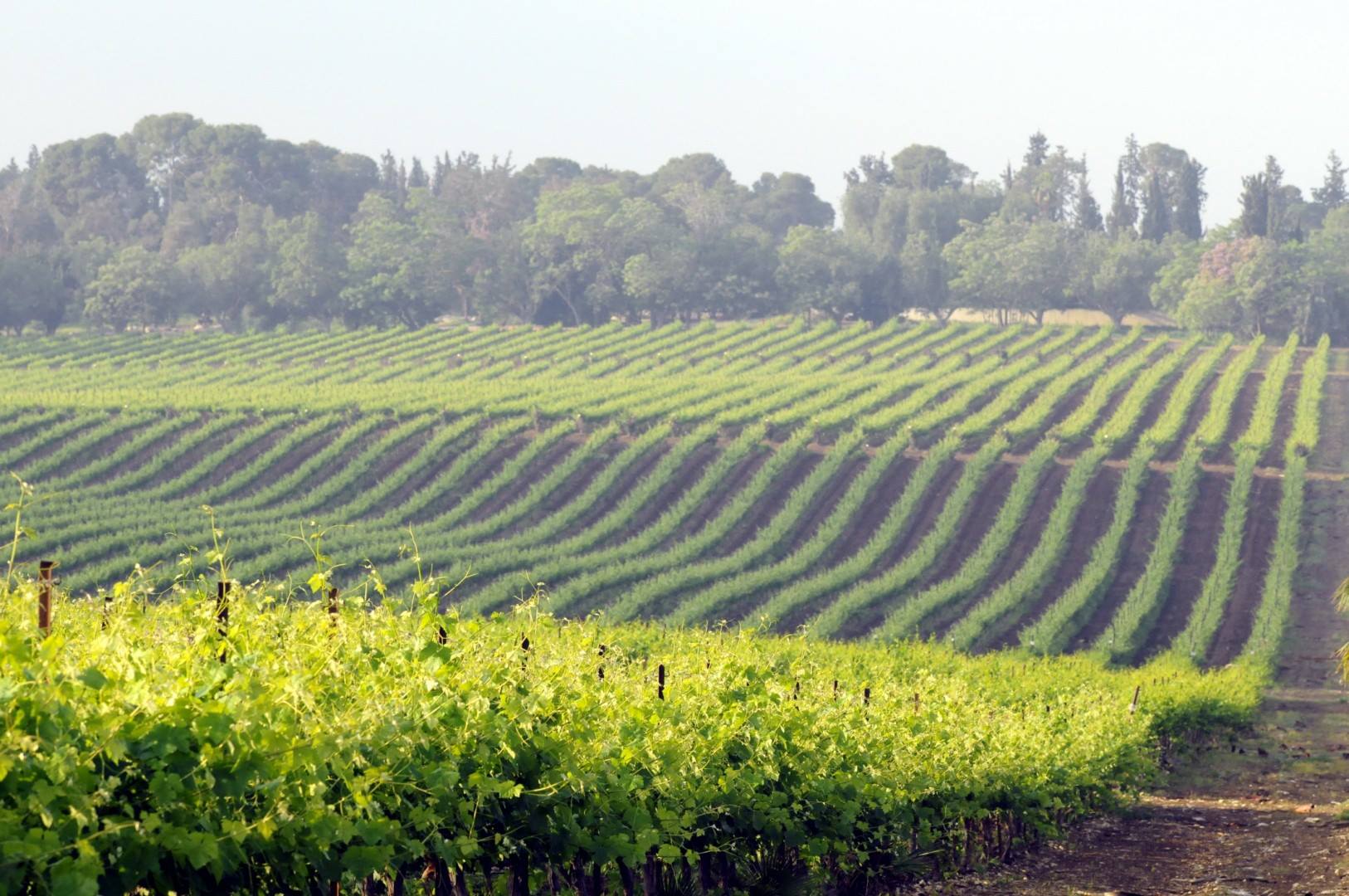
Founded in 2003 by winemaker Yitzhak Cohen, Ramot Naftaly Winery specializes in crafting small-batch, premium wines. Cohen, a former farmer and agricultural cooperative administrator, developed his winemaking skills through experimentation and hands-on learning in Israel. His dedication to quality and innovative techniques reflects the growing sophistication of the Israeli wine industry.
The winery cultivates six red grape varieties: Cabernet Sauvignon, Merlot, Shiraz, Petit Verdot, Malbec, and Barbera. All of their wines have been kosher since the 2009 vintage. Cohen's ultimate goal is to elevate the Kadesh Valley to a premier appellation within the Israeli wine landscape.
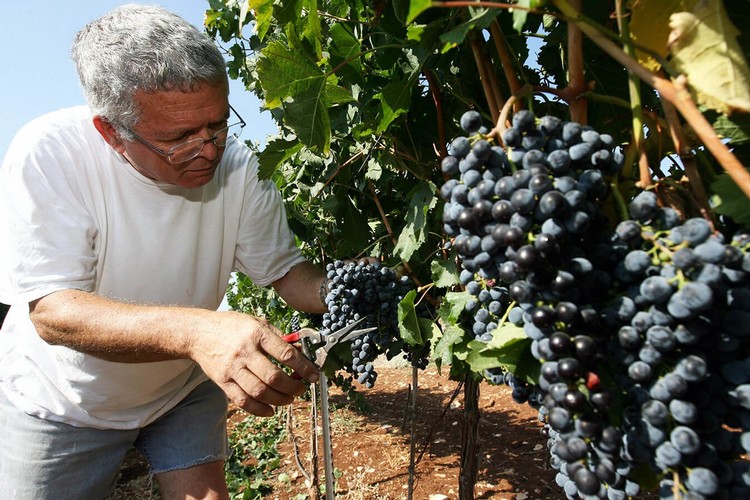
Yitzhak Cohen's parents, Lydia and Joseph Cohen, immigrated to Israel from Benghazi, Libya, in 1949. They settled in Rosh Pina, where Yitzhak was born. In 1963, the family joined a pioneering group that founded Moshav Ramot Naftaly, where they built their new home. With a deep-rooted agricultural background, Yitzhak grew up immersed in the love of land and homeland.
Yitzhak dedicated his life to agriculture and administrative roles within and outside the Moshav. His passion for wine began in 1989, when his managerial expertise led him to become the CEO of Golan Heights Winery, one of Israel's pioneering wineries. This experience ignited his dream of establishing his own small winery.
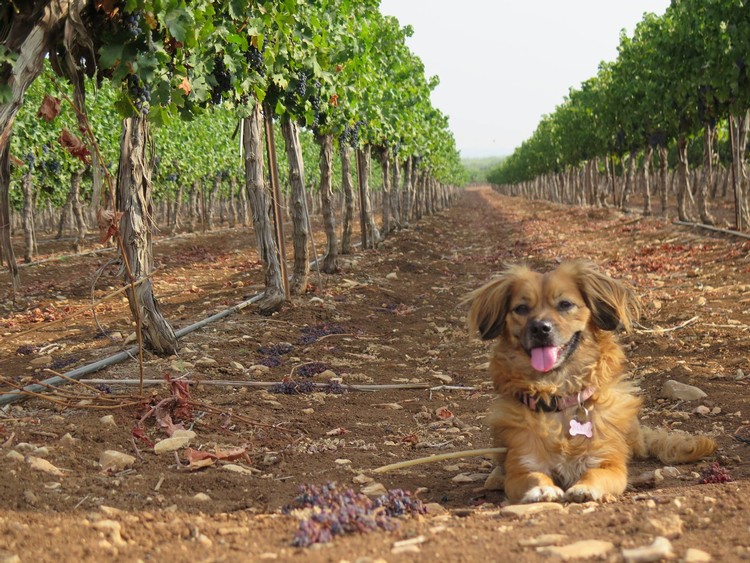
In 2002, Yitzhak embarked on a journey to realize his dream, diligently studying the winemaking process. He attended courses and toured wineries, equipment exhibitions, and wine tastings across Europe, culminating in a cellar master course at Tel-Hai College. Yitzhak's initial wine production began in small quantities in 2003.
Yitzhak's wife and daughters have been integral to the winery's success, actively learning the art of winemaking both academically and professionally. The winery's staff has grown modestly over the years, forming a close-knit family. They are dedicated to nurturing the vineyards, tending to the grapes, and meticulously overseeing the production process.
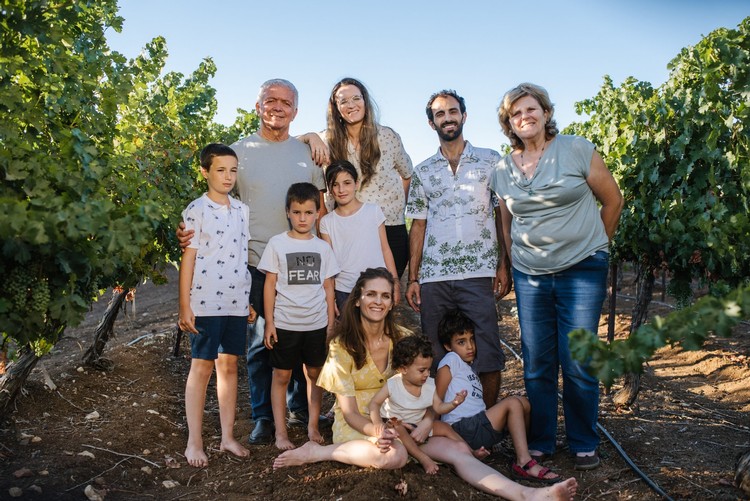
This family believes that exceptional wines are born from exceptional grapes. By cultivating healthy soil, nurturing the vineyards, and maintaining rigorous standards, they consistently produce outstanding wines year after year.
Kedesh Valley grapes produce wines with a distinctive profile. The valley's unique climate, mountainous location, and fertile soil created ideal conditions for cultivating high-quality grapes. Inspired by the soil's potential, Yitzhak and a group of friends planted additional vineyards in the valley.
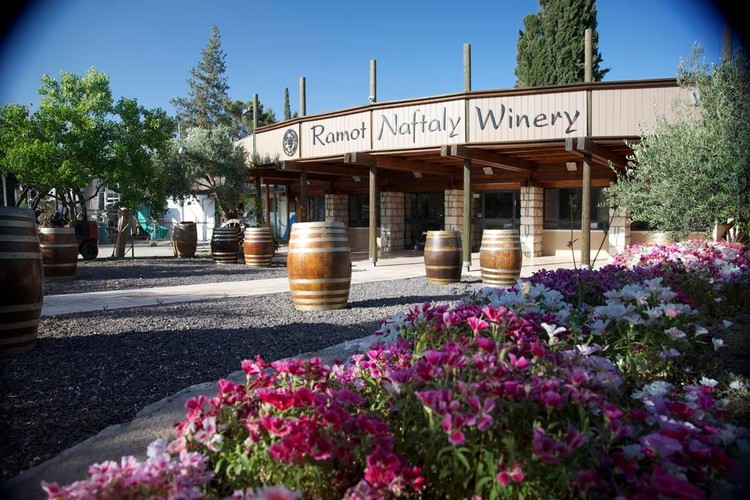
The winery is located in the backyard of a house, surrounded by a meticulously maintained vineyard and garden. During the harvest season, grapes are harvested by hand early each morning and immediately placed in cooling chambers within the winery. Later in the day, the grapes are removed, sorted manually, and then transferred to a small crushing machine. The crushed grapes are subsequently moved to temperature-controlled fermentation tanks.
The winery also features a cooled barrel room where new French oak barrels are stored. After fermentation, the wine is transferred to these barrels for aging, a process that typically lasts between 12 and 24 months.
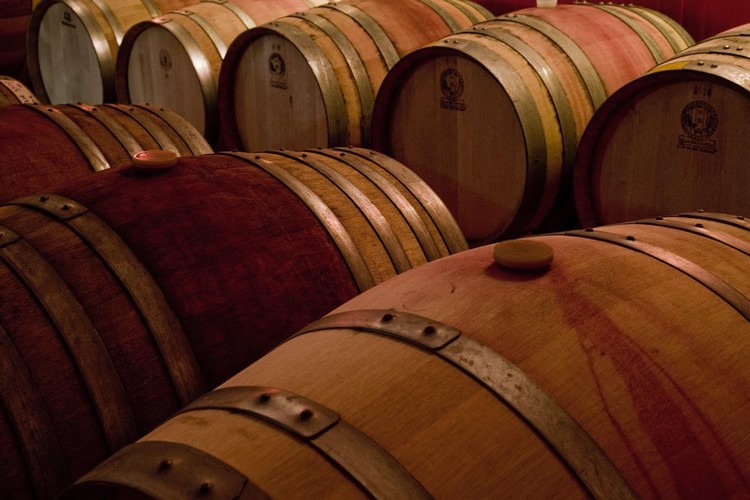
Wooden barrels have long been a cornerstone of winemaking, influencing a wine's color, texture, flavor, and tannins. Their porous nature allows for subtle exchanges between the wine and the wood, contributing unique characteristics.
The size, type, and aging of the barrel can all impact the final product. Larger barrels, for example, offer a slower transfer of flavors, while smaller barrels can impart more intense wood notes. The level of roasting during construction can also influence the wine's flavor profile, adding hints of chocolate, vanilla, or caramel.
The aging process itself is crucial. In the early stages, substances are transferred intensively, while later, slow ventilation affects the wine's phenolic character. A winemaker's decisions at this stage can significantly impact the wine's uniqueness. In 2009, Yitzhak Cohen first started using a 2,000-liter French oak barrel that was made by the Italian company “Garbelotto” especially for the Ramot Naftaly winery. In this barrel, the wood/wine ratio is low, which is beneficial for the wines, which are rich in natural flavors in the fruits, thus lacking the need for wood flavoring.
This approach demonstrates the delicate balance winemakers must strike when choosing and using barrels, allowing them to craft exceptional award-winning wines.
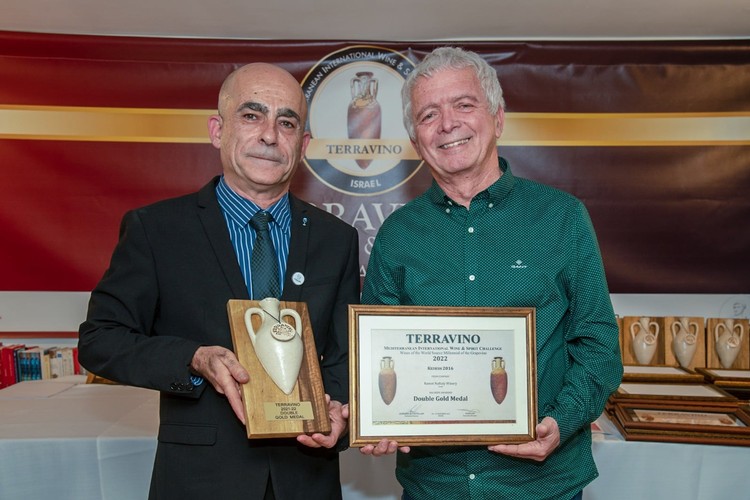
The winery was originally designed to accommodate up to 70 tons of grapes, which would be enough to produce over 50,000 bottles of wine annually. However, the final decision was to limit production to approximately 10,000 bottles per year. This deliberate choice was made to ensure that each bottle represented the pinnacle of quality and craftsmanship.
Equipped with state-of-the-art winemaking equipment, the winery crafts each vintage to a perfection. From the careful selection of grapes to the precise fermentation and aging processes, every step is meticulously monitored to ensure that the final product is exceptional. The winery's commitment to excellence is evident in the rich, complex flavors and aromas of its wines, which are also certified kosher.
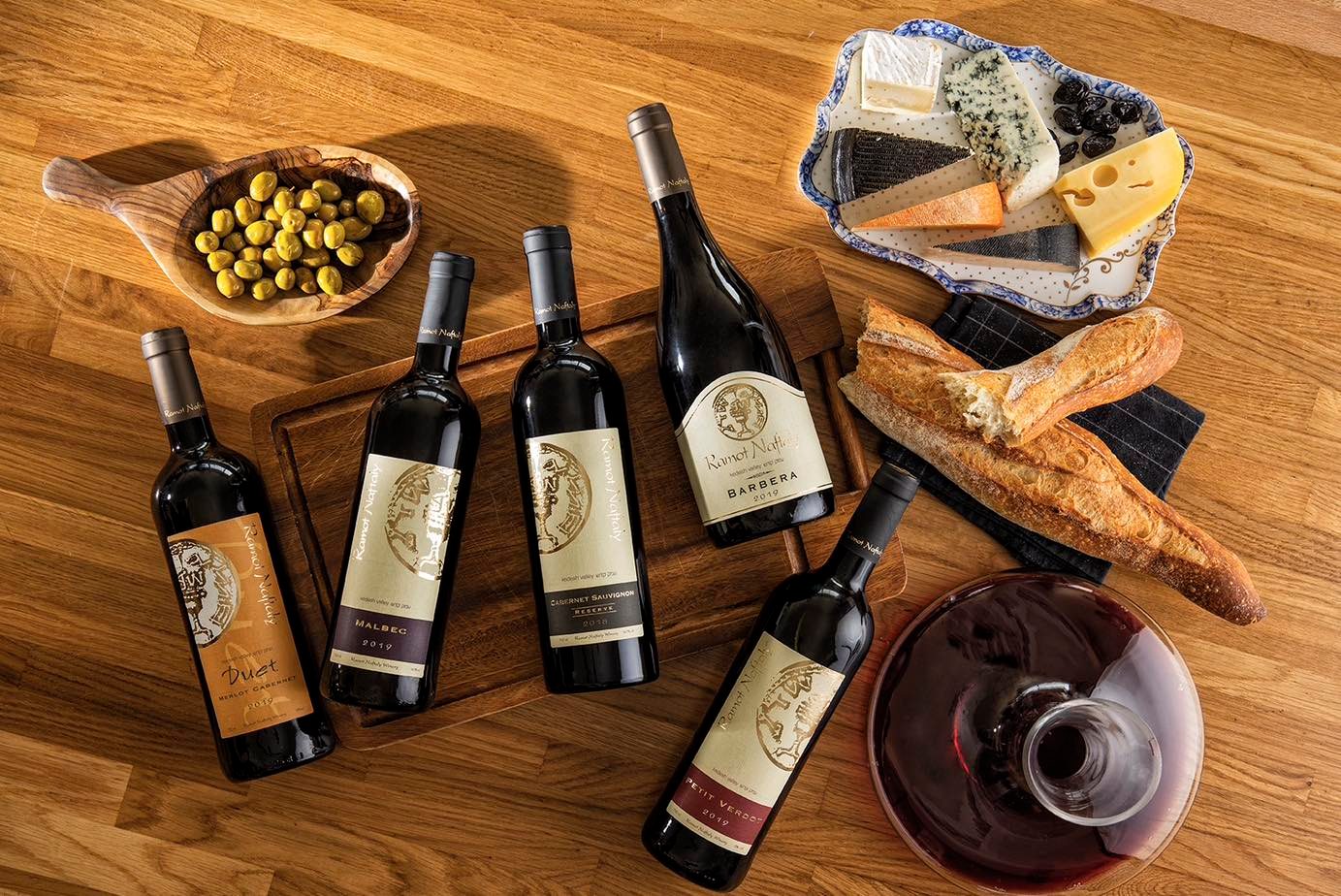
Buy Ramot Naftaly Wines at our online store HERE!
Join us for Wine on Wheels on Sunday, September 8th at City Winery NYC!
We invite all wine lovers in NYC, or those visiting the city, to experience an unforgettable day of wine, fun, and charity. For over a decade, we've been supporting and pouring wines at Wine on Wheels, a beloved charity event. And this year we will certainly be there too, so let’s meet!
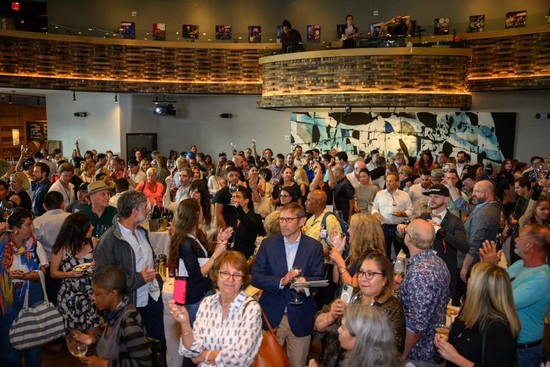
Taste delicious wines, mingle with other wine enthusiasts, and contribute to a meaningful cause. Funds raised will empower people with disabilities to reach their full potential and to promote improved accessibility for those who need it to maintain a more independent, comfortable, and dignified way of life.
This event brings together top wine talents from New York City's premier restaurants and retailers. All of Wine on Wheels' sommeliers volunteer their time, and the wines are donated by friends from various corners of the hospitality industry. The event features a wine tasting, diverse offerings from Michelin-starred restaurants and cherished neighborhood gems, and live and silent auctions featuring rare wines, exclusive experiences, and unique items.
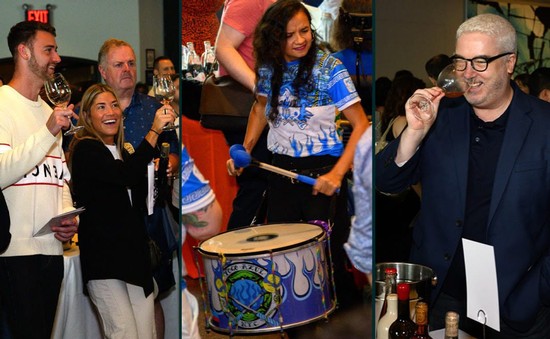
Wine on Wheels was founded by sommelier and disability advocate Yannick Benjamin, who dedicated his life to addressing the unmet needs of the disability community. He is also the co-owner of the groundbreaking, accessible restaurant Contento in East Harlem and the wine retailer Beaupierre Wines & Spirits in Hell's Kitchen, a space of community where inclusivity, diversity, and sustainability thrive.
Fueled by Benjamin's commitment to inclusivity, Wine on Wheels started as a small fundraising initiative but has evolved into a powerful movement supporting organizations that are making a significant impact in our community. It's a vibrant circle of wine enthusiasts and sommeliers united by their shared passion for wine and their desire to make a difference.

Yannick Benjamin, a second-generation restaurateur, always dreamed of following in his family's footsteps. He had the privilege of starting his career under the guidance of his experienced family members. His French heritage fueled his love of wine. However, at the height of his enthusiasm and career, a car accident left him paralyzed. Being quite young when the accident happened, Benjamin didn’t want to give up on chosen career and was eager to re-enter the wine and fine dining industries. Although there was no established path for a person with disabilities to follow in this field, Benjamin was determined to work with restaurants and wines.
After his injury, he faced the social barriers that people with disabilities often encounter but others may not even consider. As he himself says, change often occurs when someone has personal experience or a connection to someone experiencing something. Like Michel Chapoutier's decision to add braille to his wine labels, inspired by a conversation with a blind friend who complained about not being able to choose a bottle of wine in the shop, personal connections can be powerful catalysts for change. Benjamin and his partners opened their restaurant on the core values of accessibility and adopted the tagline "accessible for all." And his Wine on Wheels project is designed to support people with disabilities in leading active, fulfilling lives.
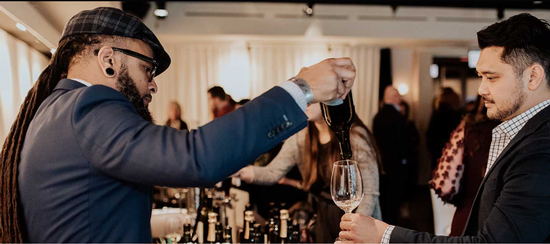
Yannick Benjamin is a shining example of how one can overcome all odds to pursue their passion, inspiring others to join him in his love of fine wines and his dedication to helping others. Proceeds from Wine on Wheels ticket sales and auction bids benefit projects that provide resources to people with disabilities and promote healthy, active lifestyles for them.
Professionals from numerous restaurants and wine retailers are generously donating their time and wines to Wine on Wheels. Hosted at the iconic City Winery NYC, this event will feature familiar faces from local hospitality leaders who believe in the important work that Benjamin and his team are doing. All participants not only have extensive knowledge of best wine and food but also share Benjamin's passion for making a positive impact on people's lives.
More than 30 top sommeliers from New York’s finest restaurants will present their handpicked selections, offering you the chance to explore some of the most exquisite wines in the world. Whether you’re an aficionado or just beginning your wine journey, Wine on Wheels is crafted to delight and inspire.

Don't miss out on this incredible event where you can enjoy fine wines and contribute to a meaningful mission! Join us, it’ll be fun!
There are a number of excellent Israeli restaurants in New York City, where you can not only savor delicious Israeli dishes but also enjoy superb Israeli wines.
One of the oldest and coziest of these is 12 Chairs.
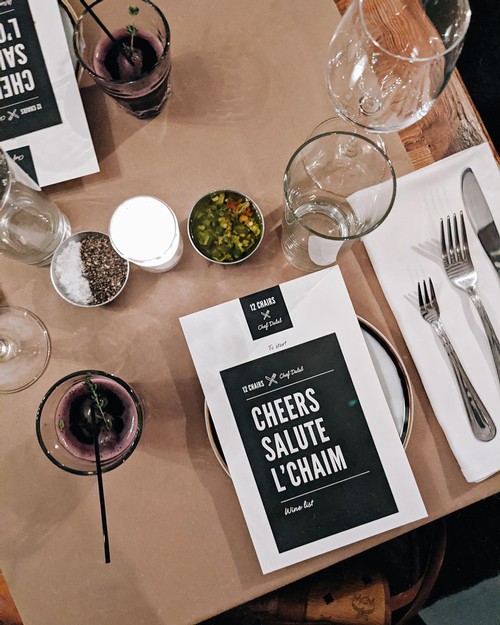
12 Chairs is more than just a restaurant; it's an immersive experience. This neighborhood gem has been serving up authentic Israeli cuisine for over two decades. Born in the heart of Soho as a small café, it has evolved into a beloved destination for locals and visitors alike, with a second location in trendy Williamsburg.
The restaurant's unwavering commitment to fresh, homemade food shines through in every dish. Prepared to order, each creation is a testament to quality and flavor. From the creamy, garlicky hummus served with warm pita to the weekend-only Jachnun, a Yemenite bread baked overnight with date honey, the menu is a celebration of Israeli culinary traditions.
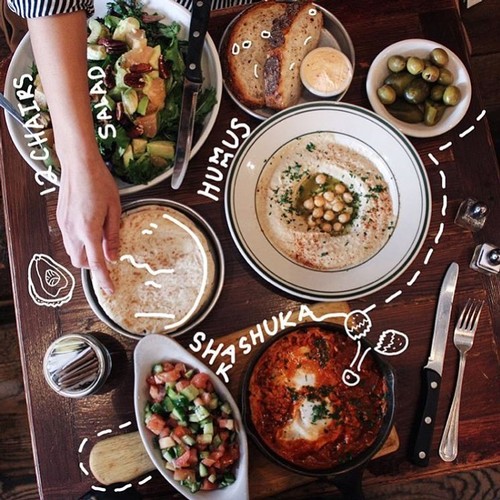
12 Chairs offers a diverse range of dishes reflecting the rich tapestry of Israeli cuisine. Indulge in crispy falafel, savory sabich, or the flavorful shakshuka. For heartier appetites, try the stuffed cabbage or tender, slow-cooked brisket. Don't miss the restaurant's homemade Israeli salad, a refreshing blend of cucumbers, tomatoes, onions, and fresh herbs. You'll also find Eastern European influences, like hearty borscht and delicate blintzes, alongside the vibrant Mediterranean flavors.
But it's not just the delicious food and Hebrew street signs that create the authentic Tel Aviv vibe. A carefully curated selection of Israeli wines perfectly complements the restaurant's authentic dishes. Be sure to try one of our wine pairings for an unforgettable experience.
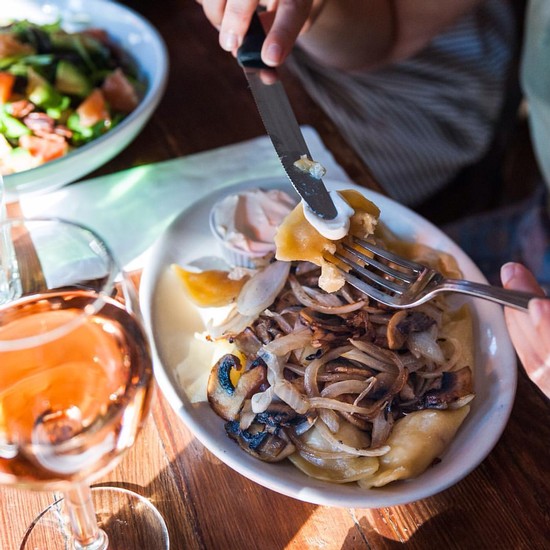
A rare find, Ramat Negev Neve Midbar Orange is an Israeli orange wine produced from Pinot Gris and Semillon grapes cultivated in the Ramon Negev highlands. Unlike traditional white winemaking, where grapes are typically fermented without skins, this wine undergoes a unique process. The grape must was fermented and soaked with peels for two weeks, resulting in a wine with intense color, aroma, and flavor.
On the palate, you'll discover a complex interplay of nutty undertones, citrus peel bitterness, and refreshing acidity. The wine's robust character is complemented by intense tannins and a rich finish.
This extraordinary wine pairs exceptionally well with grilled halloumi cheese, falafel served over tomato tahini or delicious mushroom pierogis with sour cream.
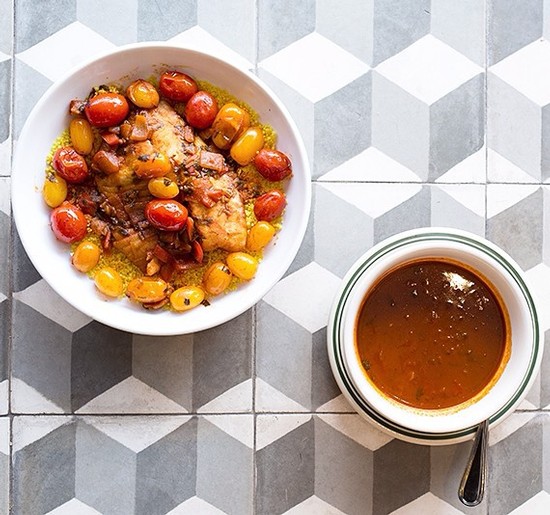
No wine could better pair with 12 chairs fish dishes, such as Moroccan Fish or Sea Bream A La Plancha, than Pelter Sauvignon Blanc. This fun, fruity, and crisp wine is the perfect complement to the delicate flavors of sea bream filet, whether it’s cooked in spicy Moroccan tomato sauce or pan-grilled and served with fresh herbs salad and harissa lemon sauce. Bursting with a vibrant bouquet of green apple, wild flowers, and citrus notes, this lively white offers a clean, dry palate and a delightful balance of acidity and fruitiness.
With its light to medium body and complex fruit and floral profile, Pelter Sauvignon Blanc enhances the fish's natural flavors, adding a bright and invigorating dimension to your meal. The wine's crisp finish leaves a refreshing taste on the palate, perfectly complementing the sea bream's delicate texture.
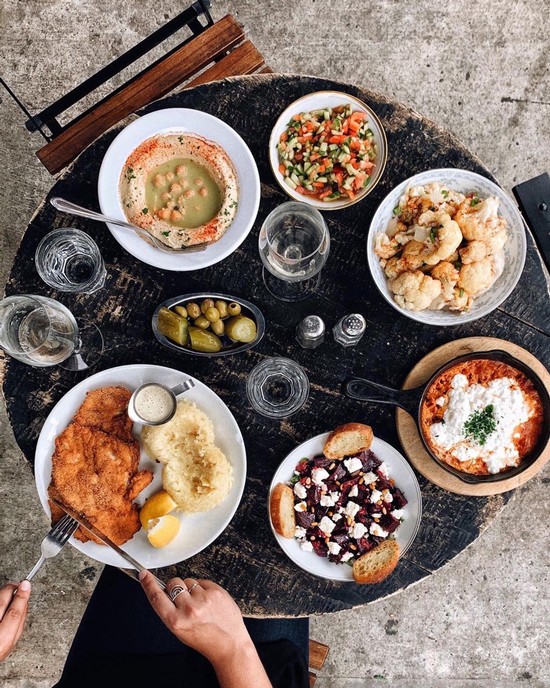
Another great pairings are 12 Chairs chicken schnitzel or grilled chicken with Pelter Unwooded Chardonnay.
Unlike traditional Chardonnays, Pelter Unwooded Chardonnay forgoes oak aging, allowing pure fruit flavors to take center stage. This unique wine is characterized by tropical aromas of pineapple, pear, and grapefruit, with hints of lime zest and honeysuckle. This Pelter wine is rich and complex, with almost buttery undertones, yet it maintains a crisp, refreshing character and subtle green notes.
The Unwooded Chardonnay’s crisp and lively character with mineral undertones complement the chicken texture and honey mustard dressing, creating a harmonious pairing.
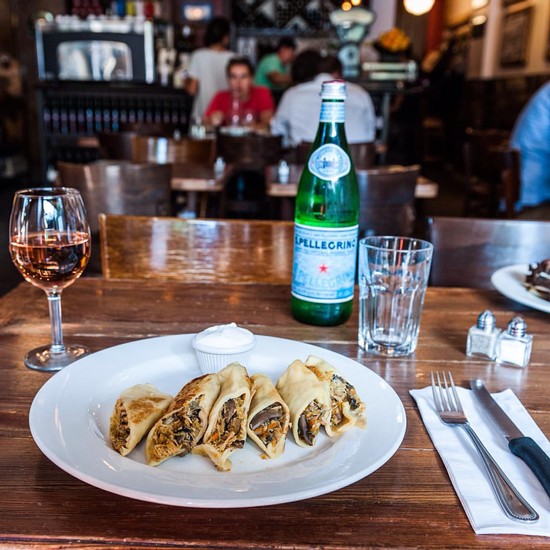
A versatile Rosé from the Upper Galilee's Kishor Winery is a delightful complement to many light dishes. Its luminous salmon hue instantly evokes summer. Bursting with vibrant flavors of strawberry, cranberry, and grapefruit, the wine is enlivened by sun-kissed Mediterranean herbs and a crisp mineral edge. Enjoy its pleasantly dry, easy-drinking character with a variety of stuffed blintzes. It’s also great with hummus – choose the style to your taste!
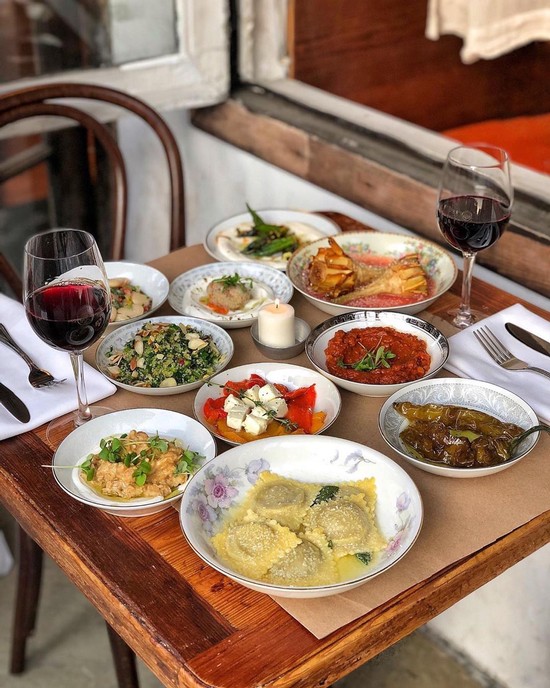
And for red wine lovers, we recommend a stunning blend crafted by a small boutique winery from the Upper Galilee and Golan Heights: Ein Teina Talia's Blend. A harmonious composition of Cabernet Sauvignon, Merlot, Syrah, and Petit Verdot, this wine offers a complex and deep profile of ripe fruit flavors with subtle spicy undertones. Aged for 13 months in French oak barrels, it develops layers of elegance and power.
A testament to the winemaker's artistry, particularly a woman's touch, Ein Teina Talia's Blend embodies a symphony of dark berries, blackberries, and hints of licorice. The wine's full body is supported by refined tannins, leading to a smooth and lingering finish. Subtle notes of vanilla and toasty warmth are imparted by the French oak aging.
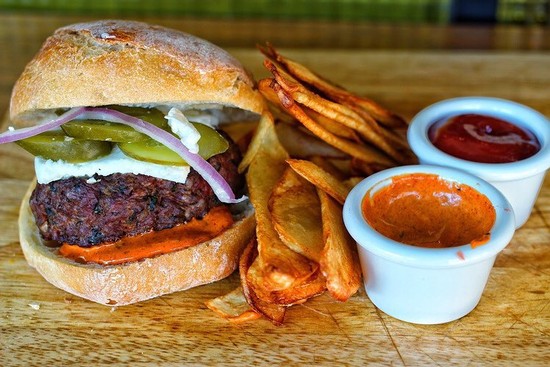
This versatile wine pairs exceptionally well with a variety of Israeli dishes. It complements classic Middle Eastern fare like Arayes - grilled pita filled with minced lamb - or even heartier options such as 12 Chairs famous Lamburger with its enticing blend of spices.
Vegetarians could enjoy this flavorful wine with spicy and aromatic vegetarian couscous. It’s also a pairing made in heaven.
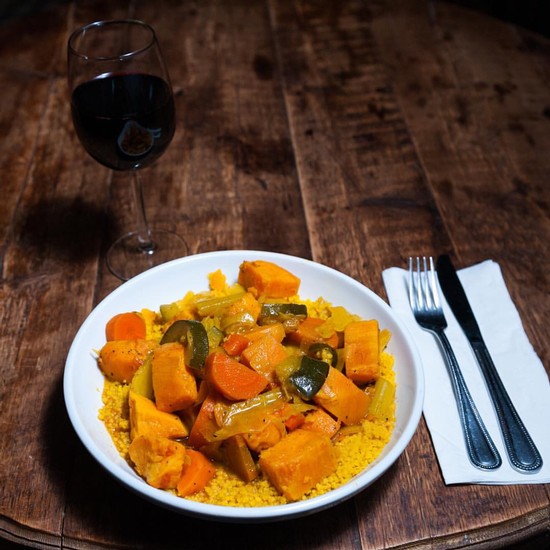
These are just a few suggestions from the dozens of delicious options offered at both 12 Chairs locations. Pair these exceptional Israeli wines with the perfect dishes and find your favorite combination!
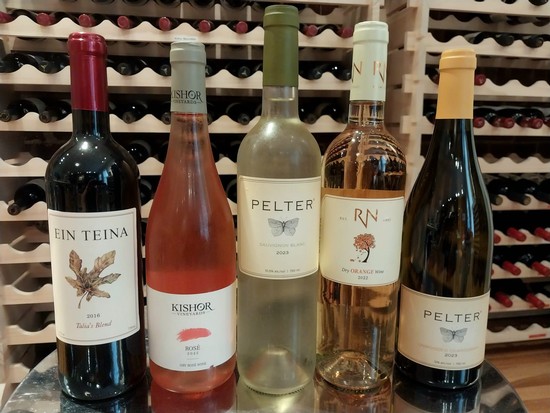
Discover more Israeli culinary gems in this in this great article by JTA.
Roussanne, a grape with a russet-colored skin (roux in French, hence the name), is a gem originating from the Rhône Valley in France. While still primarily cultivated there, it has found success in various wine-growing regions of the New World, such as South Africa and Australia, as well as in Mediterranean regions like Tuscany and Spain. The Roussanne varietal also thrives in the Eastern Mediterranean, in Israel, where a unique terrain with shores and mountains and valleys permits the cultivation of exceptional Roussanne grapes that meet or exceed standards.
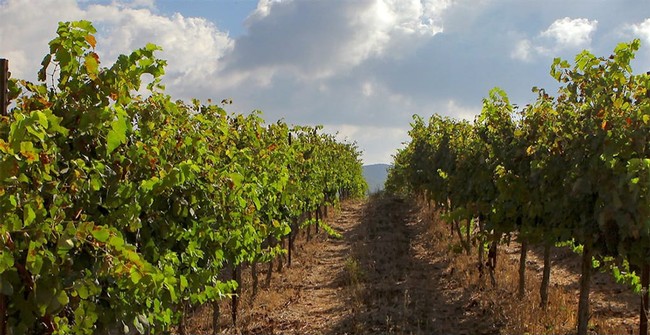
It's not the easiest grape to grow, being susceptible to powdery mildew, but it rewards winemakers with beautifully aromatic and elegant wines. Roussanne is a key ingredient in white wine blends, mostly with Marsanne, but also with varietals like Viognier, Sauvignon Blanc, Chardonnay etc., which complement it and elevate the taste to the next level. All these varietals are also successfully cultivated in Israel, thanks to its unique climate and terrain.
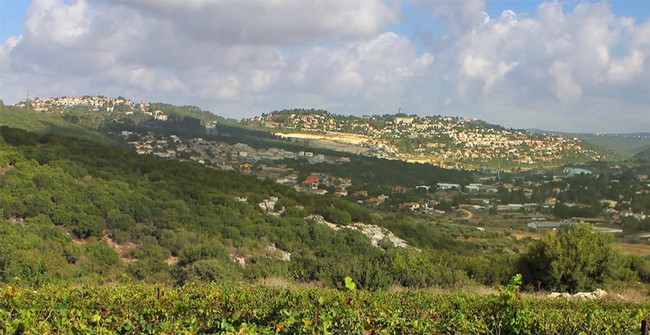
Aromatic Profile and Characteristics
Roussanne-based blends boast a captivating bouquet. Roussanne on its own is characterized by herbal, tea-like aromas, with a delightful mix of fruity notes like apricot and lime, intertwined with honeysuckle and iris. On the palate, it typically shows pears and honey with notable intensity. When blended with Marsanne, it provides aromatic intensity, complementing its richer counterpart's structure and body.
The taste profile reflects this varietal's noble character, offering a good balance of acidity and a captivating aroma. Depending on the origin and harvest time, the acidity can range from medium to high, and Roussanne-based wines are typically light in sweetness.
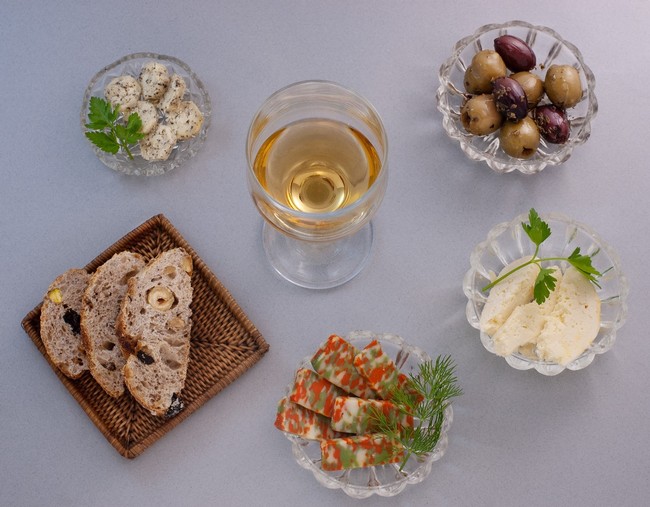
Despite its limited size, Israel packs a surprising punch when it comes to Roussanne diversity. This is thanks to the unique variations in climate and soil types found across its various regions. Furthermore, the diverse craftsmanship of Israeli winemakers allows them to showcase their unique styles in every bottle.
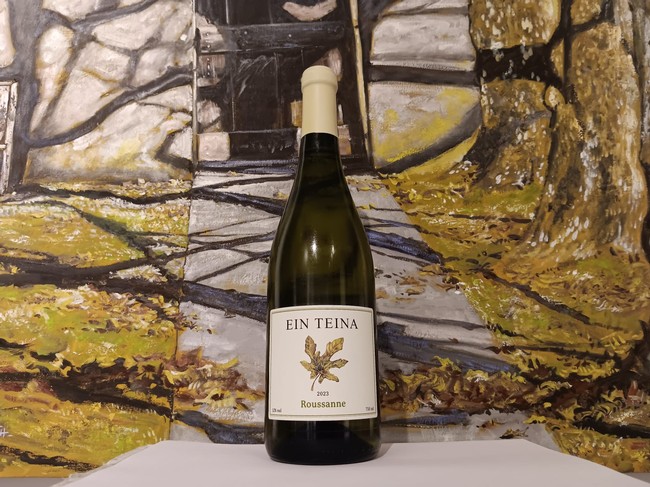
Our newest arrival: Ein Teina Roussanne, a wine never before imported to the States! A pure unblended Roussanne is a rare find, as Roussanne grapes are challenging to cultivate and more often used in blends.
This unique wine comes from a small boutique winery and was meticulously crafted using two harvests of the same grape varietal to achieve perfect balance. The first harvest produced grapes with lower sugar levels, resulting in a wine with vibrant acidity, crucial for its structure. Two weeks later, a second harvest brought riper grapes bursting with varietal character.
These grapes hail from the Southern Golan, known for its deep volcanic soil. This soil acts like a natural reservoir, retaining water during the hot summer months and preventing vine stress. This allows for crucial "hang time" – the extra time grapes spend on the vine to their final maturation, fully developing their flavor profile.
The wine undergoes several months of aging "sur lie" with batonnage. This technique enriches the body of the wine and adds complexity. The result is a stunning aromatic wine with an elegant fruity-herbal character. It strikes a balance between freshness and ripeness, avoiding an immature dilution or overly tropical character.
Please note that Ein Teina is a non-Kosher winery.
This food-friendly wine is intended to complement your meal, letting the flavors of your dish shine. Don't miss your chance to be among the first in the U.S. to try Ein Teina's Roussanne – we highly recommend it!
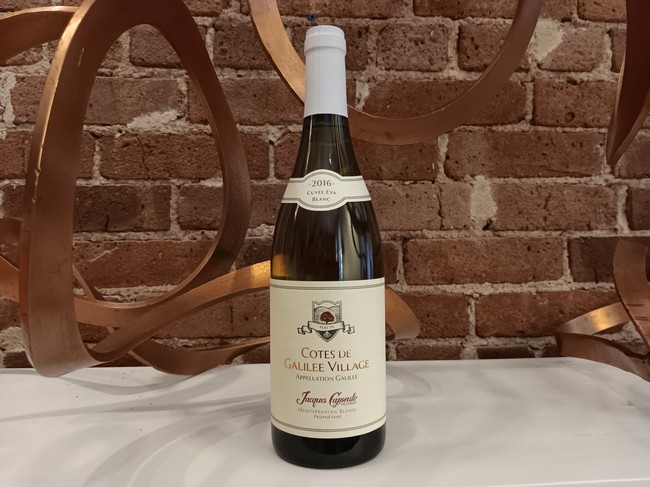
With the exception of Ein Teina winery's unique unblended Roussanne, most Israeli Roussanne expressions come in blends. This reflects the country's rich tradition of crafting blends for all palates, drawing on the creative visions of vintners and the diverse grape qualities produced in Israel's distinct wine regions.
Restaurateur Jacques Capsouto’s concept was to grow French-originated varietals of grapes in the Western Galilee, and make blends in the Southern Rhone style, less fruit-forward, with strong minerality. These are classic blends that feature Roussanne and Marsanne alongside other French varietals. The resulting Roussanne blends turned out to be elegant and refreshing, easy to drink and versatile food companions, particularly with French cuisine.
We recommend two Capsouto Roussanne blends – Albert Grand Vin Blanc and Eva Blanc. These wines are kosher.
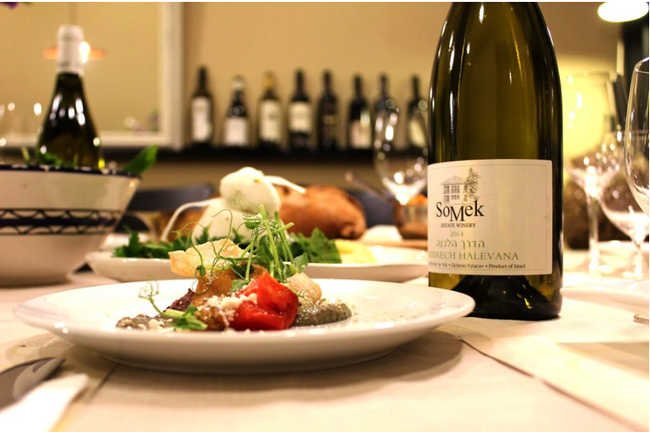
A boutique winery Somek, located in one of Israel's oldest wine-making regions on the Mediterranean coast, takes a completely different approach with Roussanne. Led by its fifth-generation vintner, the winery crafts a rich and almost creamy Roussanne blend called “Hadereh Halevana” (White Road) bursting with intense fruity aromas and hints of ginger and honey. A year spent in oak barrels followed by two years in the winery results in a velvety smooth taste with notes of pine, roasted sesame seeds, and a lingering caramel aftertaste.
Somek wines are certified vegan.
They are non-kosher.
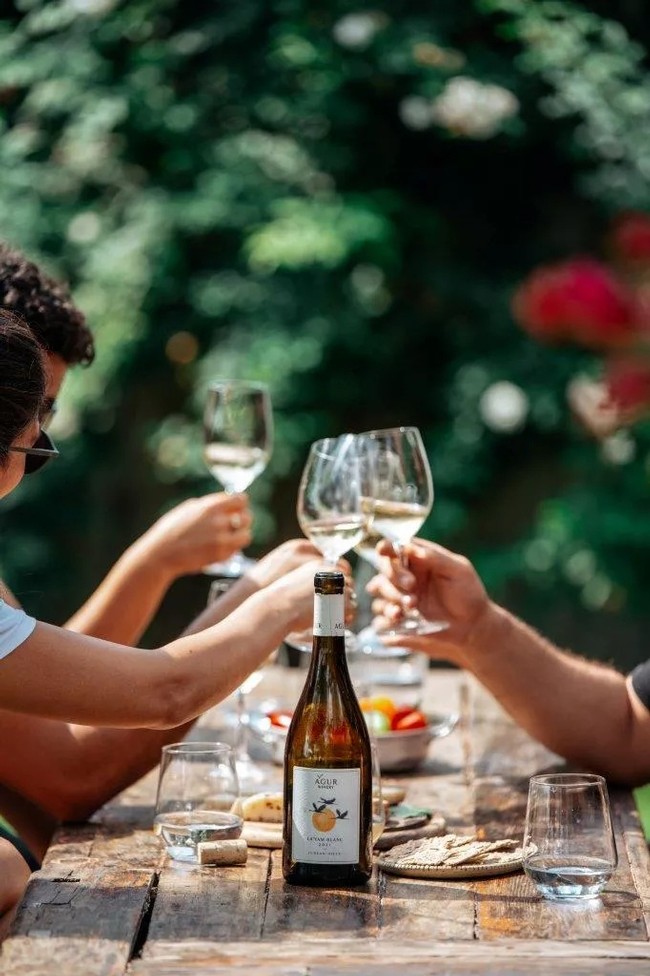
Another small but outstanding Israeli winery, Agur, is situated in the historic Elah Valley, where David famously defeated Goliath. Here, they craft Roussanne blends with yet another distinct style. These wines are complex and rich, yet balanced by a refreshing, crisp minerality – a true reflection of the local terroir through the blend's different varietals.
Agur wines are kosher.
Each of these diverse Roussanne expressions finds its perfect food pairing, waiting to be discovered.
Roussanne: A Culinary Canvas
All Israeli Roussanne blends are beautifully aromatic and food-friendly wines. Unoaked styles boast a lighter body and bright acidity, while oaked versions develop a richer texture. Let's explore how to unlock different Roussanne blends potential through delicious pairings.
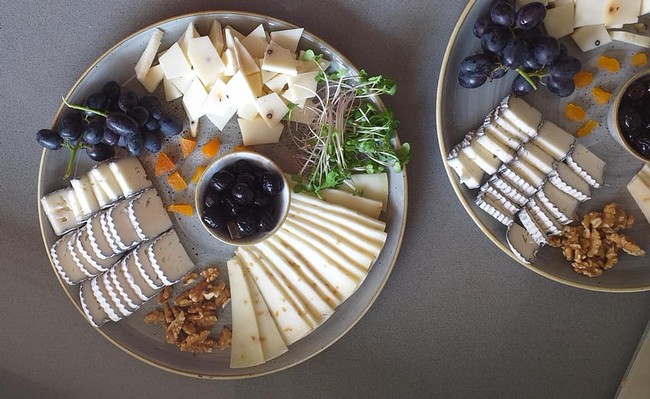
Cheeseboard Delights
Roussanne complements a delightful range of cheeses. Soft and creamy options like Brie or Camembert create a luxurious contrast with the wine's acidity. For a bolder pairing, explore hard cheeses like Gruyere, a young cheddar, or even a tangy Comté.
Forget the struggle to find the perfect cheese pairing with white wine. Look no further than Agur Layam Blanc. This Roussanne-led blend, featuring Sauvignon Blanc, Chardonnay, and Viognier, boasts a luxuriously complex character.
The secret lies in its nine-month slumber in barrels, where fermentation and aging on lees imbue it with richness. This depth of flavor makes Agur Layam Blanc a fantastic match for a variety of cheeses. Holding its own against strong cheeses without overpowering delicate varieties, it becomes an ideal choice for a cheese plate featuring a diverse selection.
Enjoy it with milder options like cheddar, Brie, Monterey Jack, or Triple Crème. It beautifully complements herb-coated goat and sheep milk cheeses as well. But Agur Layam Blanc doesn't shy away from bolder options. Its richness stands up to the sharpness of Parmigiano-Reggiano, creating a harmonious balance on the palate.
Don't forget crusty bread – its texture adds another dimension to the experience and allows the flavors of both the cheese and the wine to linger on the tongue.
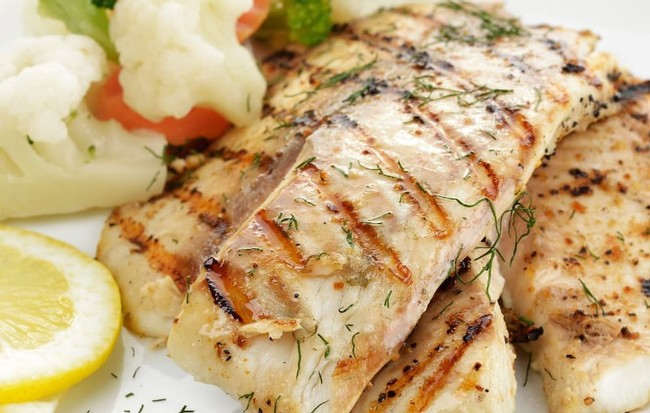
Fish And Seafood
Beyond cheese, all Roussanne wines shine alongside white fish.
Elegant Roussanne blend Capsouto Cuvée Albert Grand Vin Blanc could be a great match for various fish dishes. This "Grand Vin Blanc," named after the winemaker's brother Albert, a Tribeca restaurateur, is primarily Roussanne with addition of Clairette and Marsanne varietals. The Roussanne undergoes aging in French oak barrels, adding complexity to the wine. Roussanne blended with Marsanne is the classic pairing for a reason. Marsanne contributes richness and body, lending a weight that complements Roussanne's natural elegance. Its subtle sweetness also helps balance the bright acidity of Roussanne, creating a harmonious and complex wine.
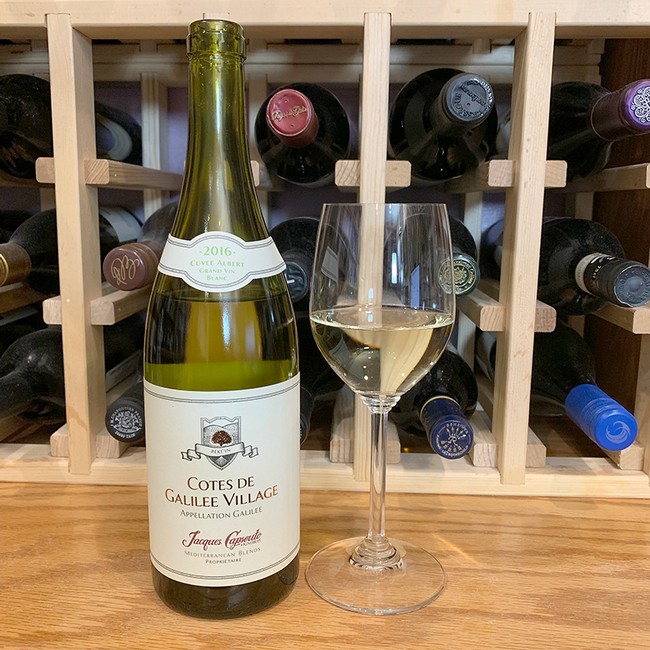
Medium-bodied with a long finish, Capsouto Cuvée Albert Grand Vin Blanc unfolds a complex bouquet. Mineral aromas mingle with green apple, pear, white flowers, and white tea. This perfectly balanced, old-world blend showcases a symphony of tart peach and apricot on a lingering finish, where the minerality echoes with hints of flint and stone. The wine's complex interplay of flavors create a beautiful pairing with lobster bisque, echoing the dish's own depth. Grilled scallops with saffron cream sauce or steamed crab legs dipped in clarified butter are other delightful accompaniments.
It would also shine alongside various white fish, from the delicate flavors of cod or halibut to the heartier texture of grouper. Pan-sear your fish with a touch of butter and lemon for a classic pairing, or experiment with a light poaching method for a lighter experience.
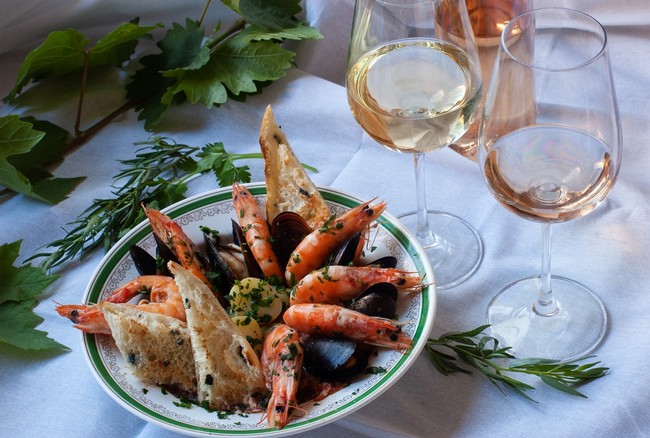
A lighter Ein Teina Roussanne might just be the ideal partner for bouillabaisse, the jewel of French Mediterranean cuisine. This rich seafood stew, simmered with fish, shellfish, onions, tomatoes, olive oil, garlic, herbs, and a hint of saffron, explodes with flavor. Each ingredient becomes a delightful dance partner for this versatile Roussanne. Its floral and fruity notes complement the broth's flavors beautifully. It would enhance the delightful flavors of the bouillabaisse without overpowering it.
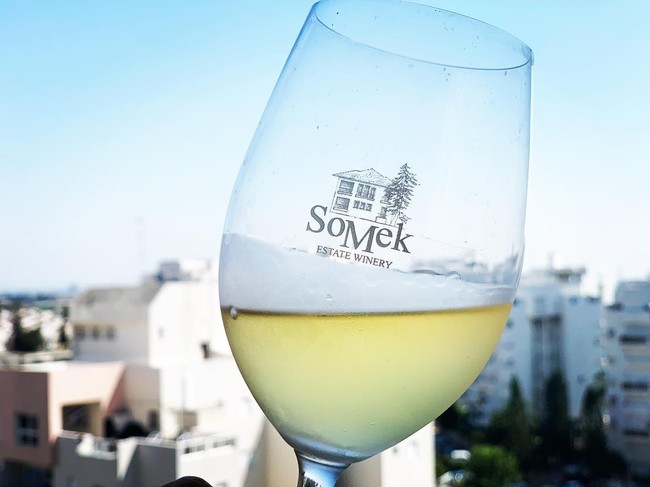
Poultry Perfection
Roussanne is a natural partner for poultry. Season your chicken with fragrant herbs like thyme or oregano, allowing the wine to complement both the dish's flavor and aroma.
Rich poultry dishes like Chicken Francese, with its tangy lemon pan sauce, find a beautiful match in a mature oaked Roussanne like Somek White Road. This harmonious blend of Roussanne, Viognier, & Chenin Blanc comes from vineyards cultivated by the same family since 1882! A year in oak barrels followed by two years in the winery imbues the wine with remarkable complexity.
The wine’s vivacious interplay of blossoming orchard, tart nectarine, pear, grapefruit, and lime, is accompanied by notes of ginger, honey and Meyer lemon. A touch of minerality refreshes the aftertaste, inviting you to savor the moment. Somek White Road's creamy yet fresh character creates a dream pairing for chicken with lemon. Wine’s citrus notes echo the dish’s lemon zest, while its subtle hint of buttery richness complements the sauce. Slight note of hazelnuts in the wine adds another layer of complexity, creating a truly harmonious pairing that elevates both the food and the wine.
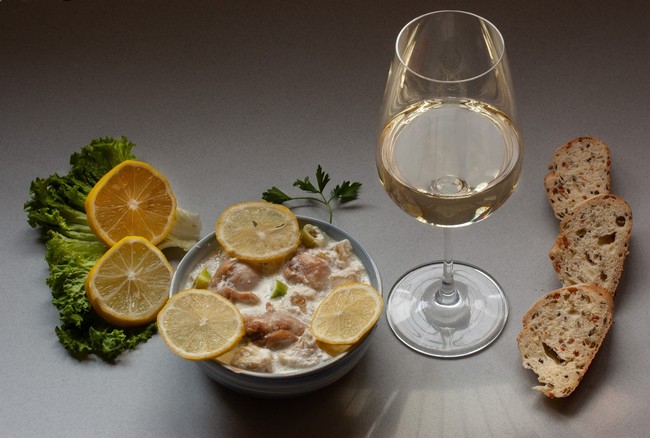
Beyond Chicken
Roussanne also elevates other poultry dishes. Try a rich duck confit or indulge in a luxurious goose roasted with caramelized onions and apples. For a festive occasion, pair a mature Roussanne with a turkey roasted with herbs and vegetables.
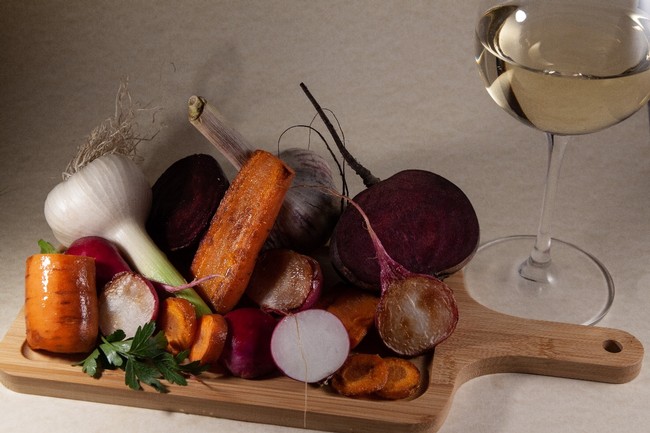
Vegetable Symphony
Roussanne doesn't shy away from vegetables!
Pair light or medium-bodied Roussanne with roasted root vegetables like parsnips and carrots. Toss them with olive oil, thyme, and a touch of honey for a touch of sweetness. Winter squashes roasted with a dash of cinnamon become an even more delightful match.
For a richer experience with more mature Roussanne, explore creamy vegetable dishes. Butternut squash ravioli with a sage and brown butter sauce or a creamy cauliflower gratin with Gruyere cheese become showstopping companions.
Roussanne's versatility extends to vegetarian delights. Risotto with butternut squash or pumpkin becomes a luxurious main course when paired with oaked Roussanne. The wine's richness complements the creamy texture of the risotto and the sweetness of the squash.
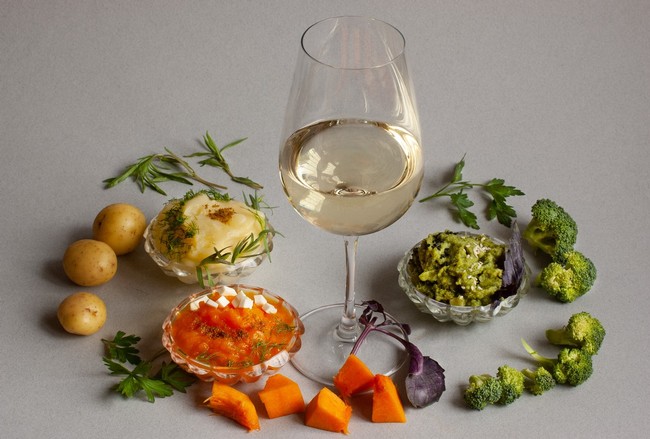
Yam and Potato Pairings
Don't overlook the humble potato or yam! Mashed potatoes with roasted rosemary chicken and a splash of cream in the mash become an elevated comfort food experience when paired with a lighter Roussanne like Ein Teina’s. For an even richer experience, try creamy potato or yam purees infused with herbs like chives or roasted garlic.
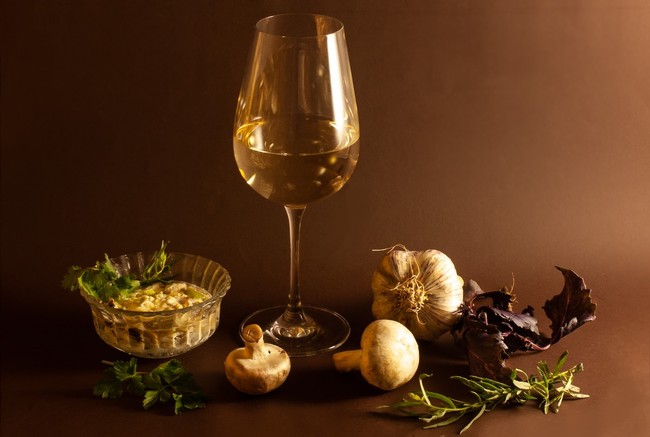
Soups and Roussanne: A Symphony of Comfort and Flavor
Roussanne's versatility extends to the comforting world of soups! Its bright acidity creates a delightful harmony with creamy textures, making it a perfect partner for a variety of dishes.
Creamy Delights
Indulge in a luxurious pairing with creamy mushroom soup. The wine's acidity cuts through the richness of the mushrooms, allowing their earthy notes to truly shine. Similarly, explore a creamy cauliflower or broccoli soup, where Roussanne's vibrant character complements the subtle sweetness of the cauliflower or broccoli.
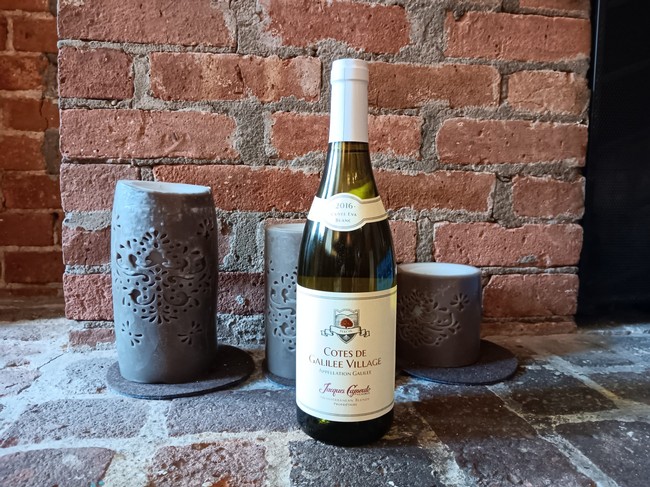
Unexpected Brilliance: French Onion Soup
For those seeking a more adventurous pairing, Roussanne blends can be a delightful partner for French onion soup. We suggest trying it with Capsouto Cuvée Eva Blanc, a wine made mainly from Grenache Blanc, balanced with a smaller amounts of Clairette, Roussanne, and Marsanne. This Southern Rhône-style white wine, named after the winemaker's mother in a gesture of love and respect, is crafted with remarkable skill and elegance. It boasts a soft nose of white peach and lemon zest, followed by flavors of peach, apricot, fennel bulb, and a hint of rye on the palate. It is fresh, with good acidity and a well-balanced finish.
The wine's acidity acts as a refreshing foil to the soup's robust flavors. Imagine juicy citrus and hints of Mediterranean herbs dancing across your palate, cutting through the richness of caramelized onions, melty cheese, and savory broth. Despite its boldness, the soup's texture finds harmony with Roussanne's creamy character. Most surprisingly, the grassy and herbaceous notes, a signature contribution of the Roussanne in this blend, find a hidden connection with the savory onion flavors, creating a delightful experience. This unexpected pairing showcases Roussanne's versatility and ability to elevate classic dishes, even when it plays a supporting role in the blend.
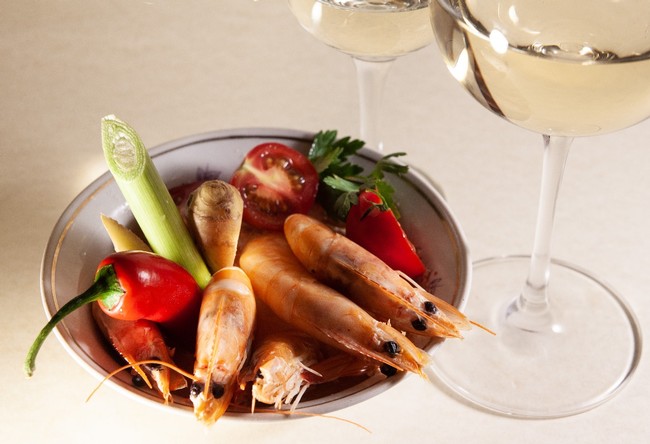
A Spicy Adventure: Thai, Curries and Creole
Roussanne boasts a surprising talent: it can handle spice beautifully! Take, for example, Agur Blanc, an aromatic and beautifully structured blend of Chenin Blanc, Roussanne, and Viognier from the Judean Hills. This wine exemplifies this strength, standing up to the bold aromatics like lemongrass and ginger common in Southeast Asian cuisine. Its crisp character acts as a refreshing counterpoint, cutting through the richness and cleansing your palate, preventing that heavy feeling you can get from spicy dishes.
Dive into the world of Thai curries. Focus on lighter options like yellow curries featuring chicken and vegetables, or green curries with shrimp and bamboo shoots. These dishes will allow the nuanced flavors of Roussanne to shine.
Travel down to Louisiana and explore an unexpected match for Roussanne blends: the bold flavors of Creole and Cajun cuisine! This pairing might be for the more adventurous, but with the right Roussanne, it can be truly rewarding. Gumbo is a complex dish with a rich, spicy personality. It demands a wine that's bold enough to stand up to the gumbo's intensity, yet nuanced enough not to overpower its unique flavors. Oaked Roussanne blend like Somek White Road or Agur Layam Blanc step up to the challenge. Their balanced acidity cuts through the gumbo's richness, while not overwhelming its flavor.
Balance is key to a perfect pairing. Opt for dishes with a medium spice level to avoid overwhelming the delicate flavors of Roussanne. This allows the aromatic spices to shine alongside the wine, revealing the magic of this versatile white.
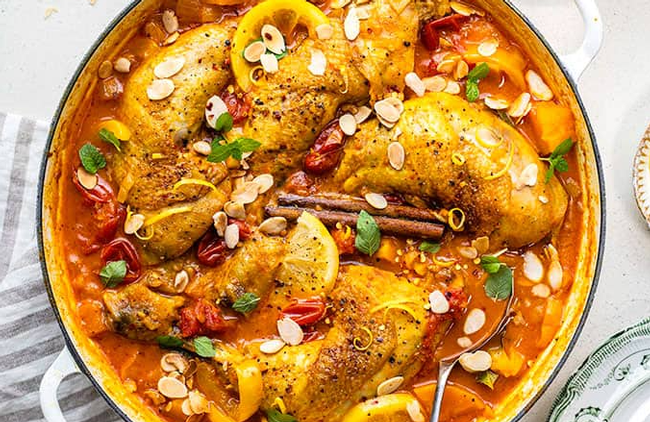
Aromatic Adventures: Tagines and the Middle East
Roussanne's affinity for bold flavors extends to the Middle East. Its savory notes find a delightful echo in dishes featuring cilantro, cumin, ginger, and garlic. Don't miss pairing Roussanne with tagines, especially those featuring poultry. Moroccan chicken tagines simmering with apricots, almonds, and a touch of cinnamon become a true symphony of flavor when paired with a Roussanne blend. The wine's crisp acidity cuts through the sweetness of the dried fruit, while harmonizing with the warm spices that grace tagines. Explore other dishes from the region, like grilled chicken or fish with herb rubs, or eggplant dishes, or creamy hummus, to discover a world of exciting new pairings.
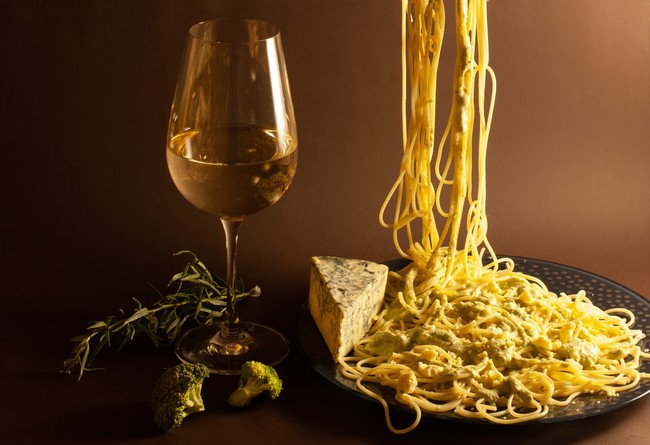
Roussanne's Italian Journey
Creamy pasta dishes and risottos are practically begging for a perfect partner. Look no further than Somek White Road with its rich texture and notes of tart fruit, sweet butter, and a hint of honey. It beautifully complements the cheesy richness of these meals, while the wine's subtle floral notes playfully dance with the fragrant herbs often used in Italian cooking.
So, next time you're exploring Italian cuisine, don't be afraid to reach beyond the typical Pinot Grigio. Look for a flavorful Roussanne blend from the Israeli Mediterranean shore, and discover a world of flavor pairings waiting to be explored.
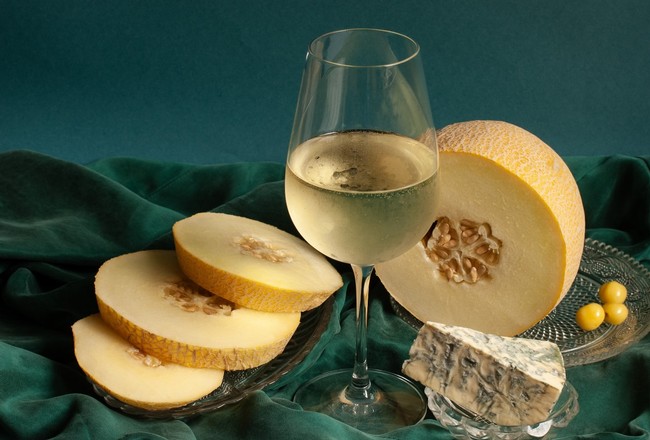
Roussanne's Rendezvous with Melon
One more gourmet pairing to tempt your palate: lighter Roussanne blends, like Capsouto Cuvée Eva Blanc, with a delectable melon. Delicate notes of spice and honeysuckle in the wine complement the aromatic fruit, creating a harmonious and refined dessert duo.
~~~~~~~~~~~~~~~~~~~~~~~~~~
A Few Words on Wrong Pairings
While Roussanne is wonderfully versatile, there are a few exceptions to keep in mind. Avoid extremely smoky or charred dishes, as the smokiness can overpower the wine's delicate charm. Excessively spicy dishes with overpowering chilies can also be a mismatch, as the heat can overwhelm the wine's flavors. Very light and simply prepared dishes might get lost against a full-bodied oaked Roussanne blends. Finally, avoid overly sweet dishes. The wine's acidity can clash with the sweetness, creating an unpleasant imbalance on the palate. With these small considerations in mind, you're ready to embark on a delicious adventure with Roussanne!
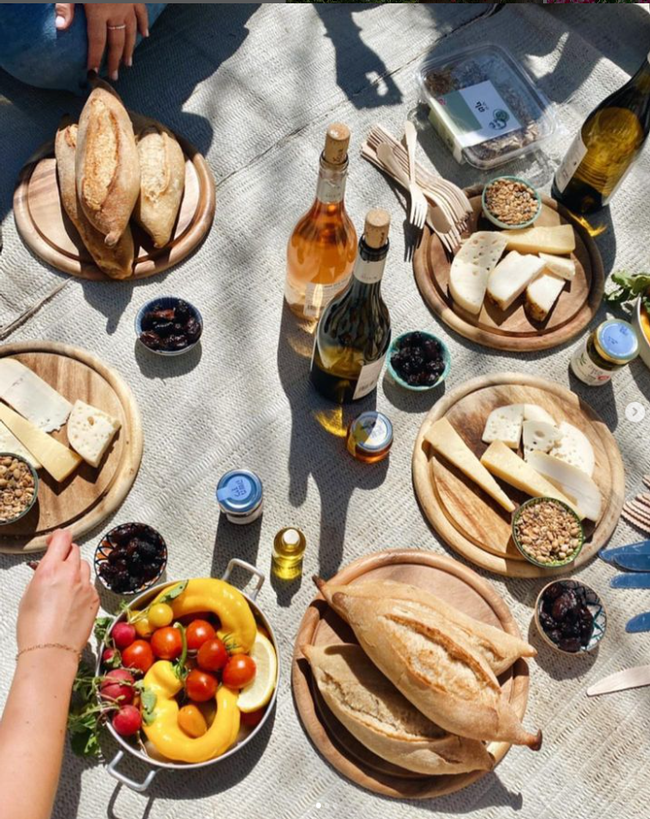
In Conclusion
Roussanne is a food-lover's dream, waiting to be explored. From cheese plates to fish dishes, creamy pastas, spicy adventures, and flavorful global cuisine, this versatile wine offers a delightful pairing for every palate. So, raise a glass and embark on your own delicious journey with Israeli Roussanne!
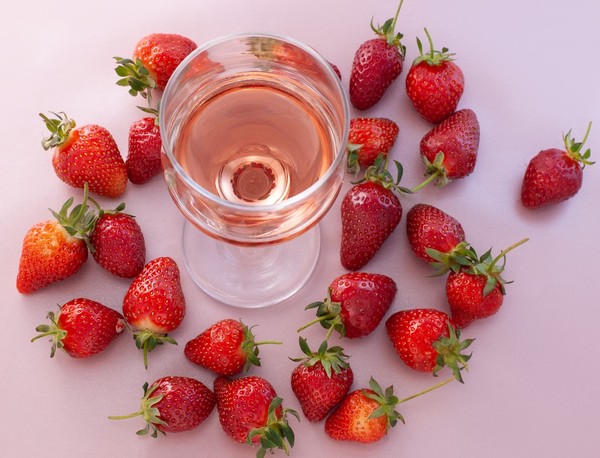
Summer is the perfect time for Rosé wine: beautiful, refreshing, and bursting with flavors of fresh strawberries and other delicious fruit. It's a fantastic complement to light dishes, making it a popular choice for warm-weather gatherings.
Rosé has become a global phenomenon, attracting a devoted following. But how many of these fans are truly familiar with the vast diversity of Rosé? There's a whole world to explore within this seemingly simple pink drink. Different types of Rosé exist, with a spectrum of shades ranging from the palest blush to a deeper, more pronounced pink. The grape varietals used can vary greatly, and the winemaking techniques employed to craft Rosé can be quite diverse as well.
Mastering these factors opens the door to a world of delicious discoveries. Each rosé style offers a unique taste adventure waiting to be explored. What delicious dishes will unlock the magic of different Rosé styles, creating a perfect summer feast?
And finally, the age-old question: who deserves our gratitude for this delightful "drink of the gods"? Let's delve deeper and discover the fascinating world of Rosé!
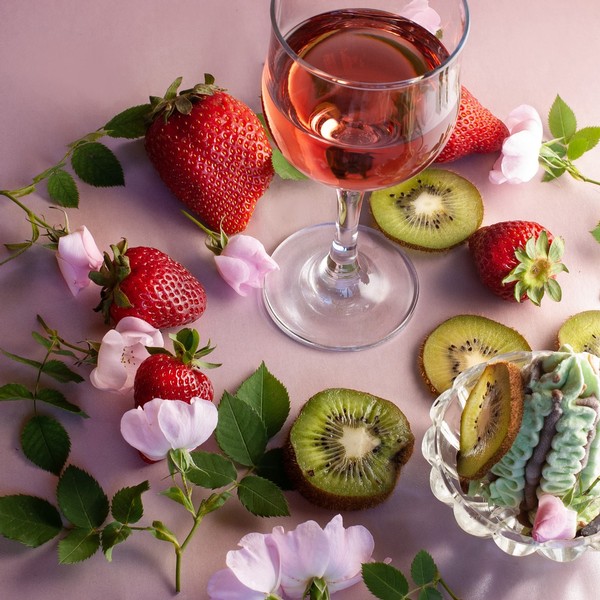
Beyond the Blush: Unveiling the Colors of Rosé
Unlike what many believe, the captivating pink color of Rosé doesn't directly indicate sweetness. It's all about the relationship between red grape skins and the juice during fermentation. The briefer the contact, the paler the pink. Conversely, longer contact results in deeper shades. This delicate dance unlocks a fascinating spectrum of Rosé styles:
Pale Pinks: Imagine a summer breeze carrying refreshing notes of mint, grapefruit, and strawberries. These characteristics are hallmarks of pale pink Rosés, often crafted from Pinot Noir, Carignan, or Zinfandel grapes. Their light body makes them perfect companions for grilled vegetables, lighter seafood dishes, or simply enjoying a sunny afternoon.
Blush Pinks: Merlot, Grenache, and Sangiovese grapes lend their personality to blush pink Rosés. These wines boast enticing flavors of sweet cherries, raspberries, and blood oranges. Their slightly fuller body allows them to stand up to richer dishes like creamy pastas, grilled chicken, or even lighter red meat stews.
Darker Pinks: For those seeking bolder flavors, darker pink Rosés crafted from Cabernet Sauvignon or Tempranillo grapes offer a delightful surprise. Dark berry notes mingle with hints of spice, creating a complex flavor profile. These robust Rosés can hold their own against grilled meats or poultry.
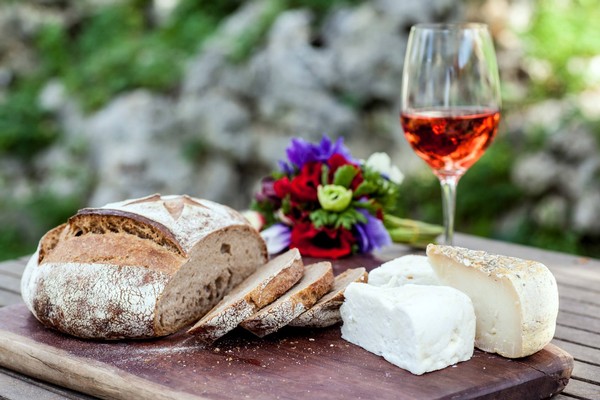
Making Rosé: Exploring the Techniques
The final shade of a Rosé isn't just about the grape varietals used. Winemaking techniques have a major impact on the color. Let's explore the four main ways Rosé is made:
Maceration: This popular method involves allowing red grape skins (called “must”) to rest briefly with the clear juice. This "soaking" extracts color, flavors, aromas, and structure from the skins, resulting in a deeper pink wine with bolder personalities and pronounced flavors.
Direct Press: In this speedy approach, the red grape skins have minimal contact with the juice, similar to making white wine. A hint of color remains, creating the lightest-colored Rosés, like pale-salmon, with refreshing citrus notes and delicate strawberry hints. Specific flavors can vary by grape type.
Saignée (or "Bleeding"): This less common technique borrows from red wine production. During the early stages, some juice is "bled" off, or simply extracted, and used to create Rosé in a separate vat. This method can yield unique rosés with distinct personalities, often resulting in some of the best-aging Rosés as well as the darkest and most tannic ones.
Blending: While seemingly simple (red + white = Rosé!), blending fermented red and white wines is prohibited in most European wine regions (AOP) with strict regulations. The exception? Champagne! Here, blending is the preferred method for crafting their iconic Rosé Champagne. In some New World regions with less rigid rules, blending can also be used to create Rosés, offering a range of styles.
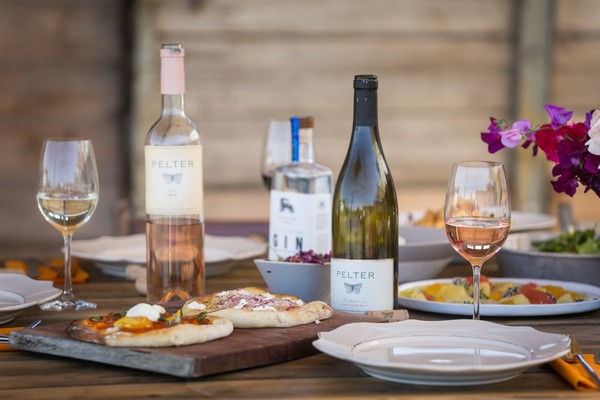
A Culinary Chameleon: Rosé's Unexpected Pairing Power
Rosé's versatility extends far beyond its refreshing summer appeal. Its ability to pair beautifully with a wide range of foods makes it a true culinary chameleon. Here's a glimpse into the world of food and Rosé pairings:
Light and Fresh: Take your next barbecue to the next level! Lighter-bodied Rosé styles complement grilled vegetables, fresh salads, and delicate seafood dishes like seared scallops or grilled salmon.
A Touch of Spice: Don't shy away from bolder flavors! Rosés can handle the heat of spicy cuisine. Experiment with Indian curries, Thai stir-fries, or even Mexican dishes.
Mediterranean Match: Rosé shines alongside the vibrant flavors of the Mediterranean. Explore pairings with Greek moussaka, Lebanese mezze platters, Israeli falafel, or a simple plate of hummus and grilled vegetables.
Beyond Summer: While Rosé is a perfect wine for warm weather, its versatility extends year-round. Explore pairing darker Rosés with stews, roasted vegetables, or even grilled lamb.
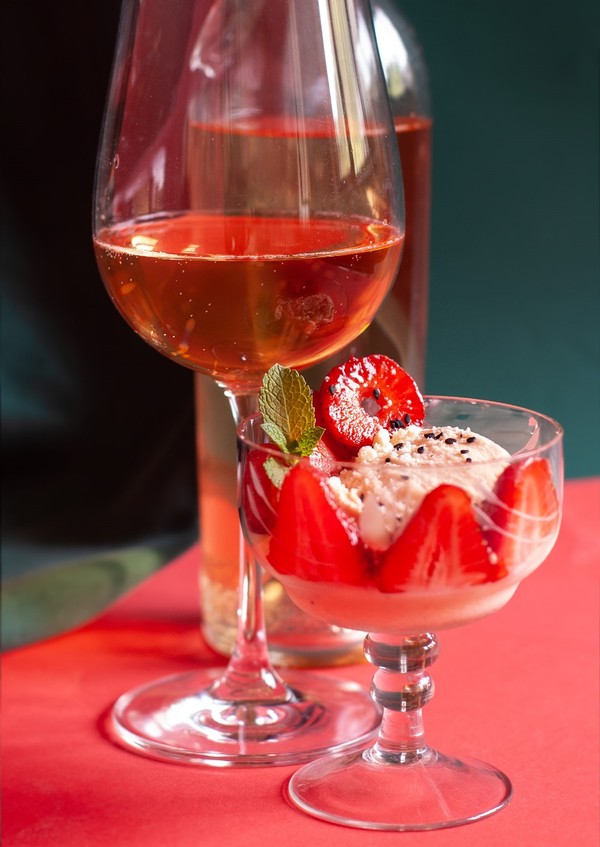
Respecting the Chill
To fully appreciate the delicate flavors and aromas of Rosé, temperature matters. Treat Rosé like a white wine, serving it between 44-55°F. This allows the wine to unfold its complexities, ensuring a delicious experience with every sip.
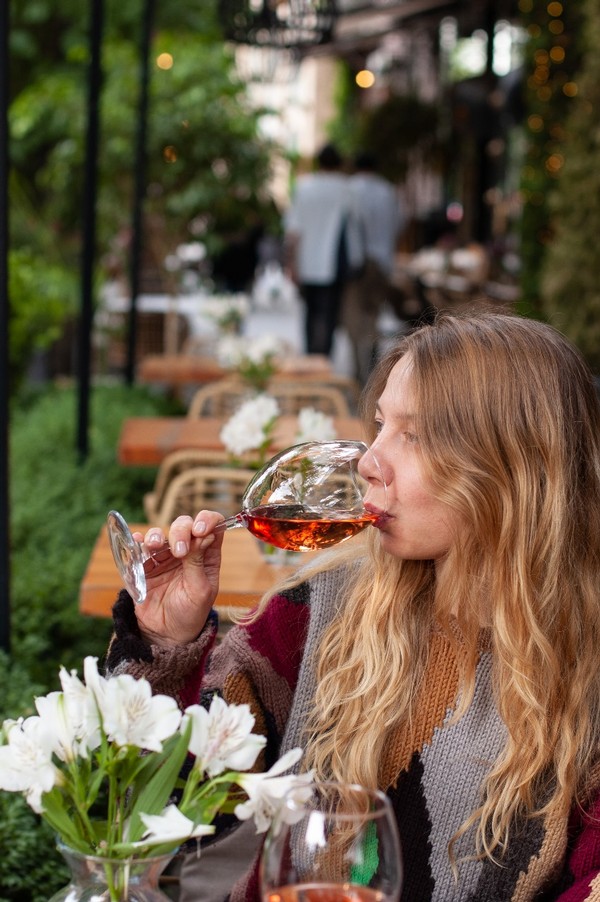
Uncork the joy of summer with a glass of Rosé! Unlike many red wines, Rosé is meant to be savored young, bursting with vibrant flavors and enticing aromas. Think of it as a bouquet of freshly picked flowers.
Vintages 2022 and 2023 are your prime targets! Rosé's popularity means these may not last until winter. So, embrace the season and embark on a delightful Rosé adventure.
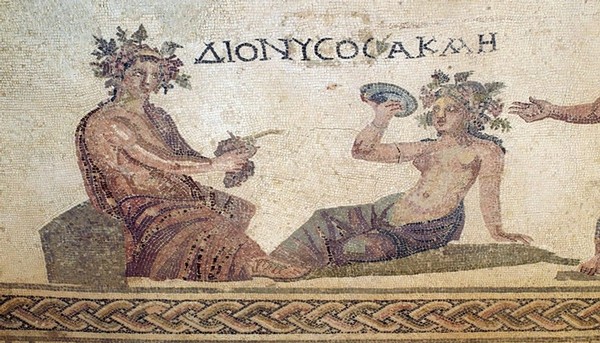
A Toast to the Past: The Enduring Legacy of Rosé
Uncorking the history of Rosé takes us on a journey that may stretch back millennia, possibly to the very beginnings of wine itself. Some scholars believe the earliest wines, made by simply fermenting grapes with the skins on, were inherently pink. While it's unlikely they tasted like the refined Rosés we know today, it hints at Rosé's claim as one of the most ancient forms of wine.
The documented history of Rosé wine begins with the Greeks from Phocaea (ancient Ionian Greek city, modern-day Turkey) bringing wine grape vines to Massalia (modern-day Marseille in southern France) in the sixth century BC to make Rosé wine. They believed that pale pink wine was superior to either red or white. The people of the region now known as Provence embraced this new style of wine, further refining the methods and laying the groundwork for the region's long-standing reputation for Rosé production.
From Provence, Rosé's popularity spread throughout the Mediterranean. Winemakers in other countries experimented with this new style, and even the Romans, known for their love of full-bodied reds, found themselves captivated by Rosé's charm. This early adoption by Mediterranean cultures helps to explain why the region continues to be a source of some of the world's most exceptional Rosé wines today.
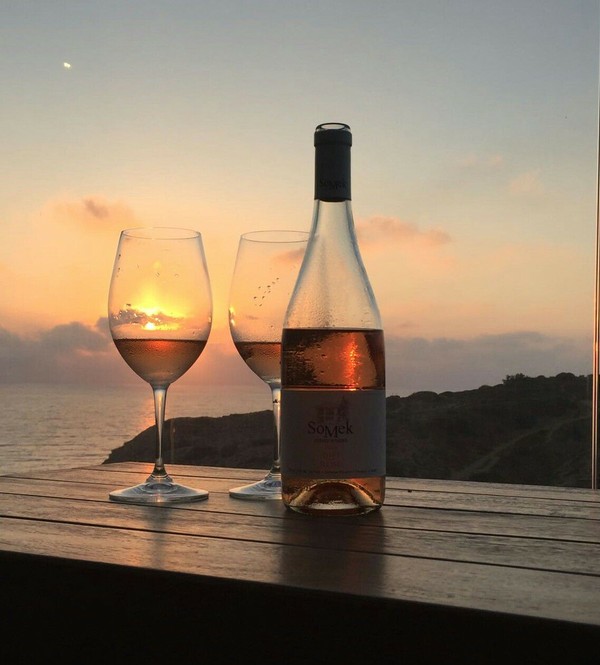
Beyond Provence: A World of Rosé Delights
While Provence may reign supreme in the world of Rosé, the sun-drenched shores of the Mediterranean hold a treasure trove waiting to be discovered. From Spain and Italy to Greece, the origin of Rosé, a tradition of crafting this ancient wine continues. Now, Israel, another sun-kissed Mediterranean nation with a rich winemaking history, is stepping into the spotlight with its own captivating selection of Rosés.
From vineyards nestled in Israel's high altitudes to those gracing the slopes overlooking the sparkling Mediterranean Sea, and even extending to the heart of the desert, Israel offers a diverse range of growing conditions. This variety results in unique and captivating Rosés, each with its own story to tell.
Here are five Israeli Rosés to tempt your taste buds, with options ranging from light and fruity to richer styles perfect for food pairings:
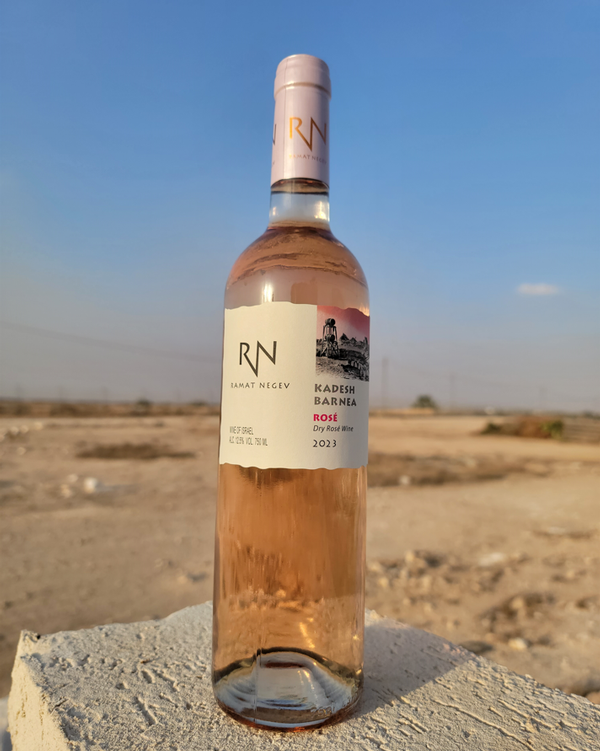
Ramat Negev Kadesh Barnea Rosé (Light & Fruity)
Made from 100% Cabernet Franc grapes, boasting a beautiful light pink-orange color.
A burst of strawberries with hints of grapefruit, raspberry, cranberry, and green apple.
Lively acidity keeps it refreshing, with a delightful mellow finish and a whisper of peach.
Perfect for fish, chicken, well-seasoned dishes, cheese platters (especially blue cheese), and even desserts!
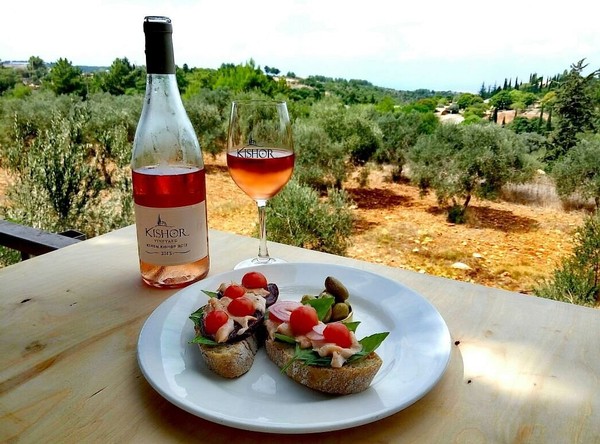
Kishor Rosé (Dry & Elegant)
Crafted from 100% Grenache grapes, offering a dry, graceful, and lively taste.
A beautiful salmon color with refreshing fruit notes.
Hints of summer red fruit, citrus, sun-kissed Mediterranean herbs, and a touch of minerality for perfect balance.
Ideal for appetizers like smoked salmon, cream cheese, and fresh puff pastry.
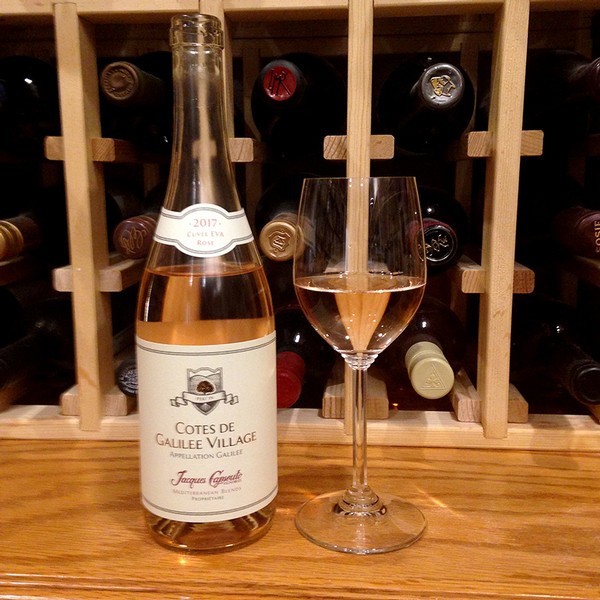
Capsouto Cuvée Eva Rosé (Provence-style)
This charming light-bodied Rosé evokes the essence of Provence with its beautiful salmon color and delicate flavors of berry fruit, apricot, pear, and pineapple.
Crisp acidity keeps it incredibly refreshing.
Pairs well with grilled or roasted vegetable dishes such as ratatouille, salads with fruit, and grilled seafood such as salmon or tuna.
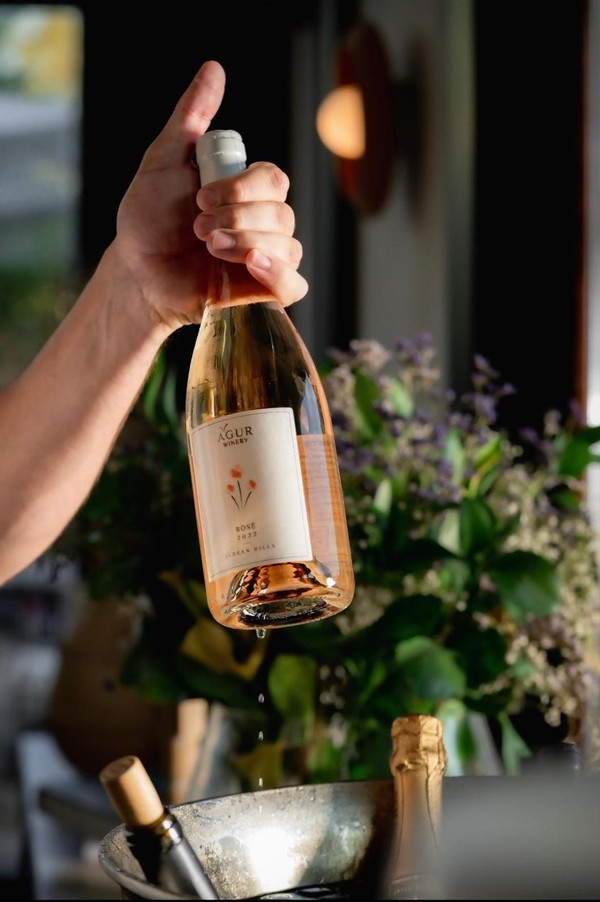
Agur Rosé (Rich & Food-Friendly)
A blend of Mourvèdre, Grenache, Marselan, and Cabernet Franc, it boasts a medium body with fresh acidity.
Expect aromas of orange and lemon peel, Rosé petals, and minerality, followed by flavors of pear, peach, citrus, and red fruits.
Perfect for a wider range of dishes, from meat and fish to simply enjoying on its own near the pool.
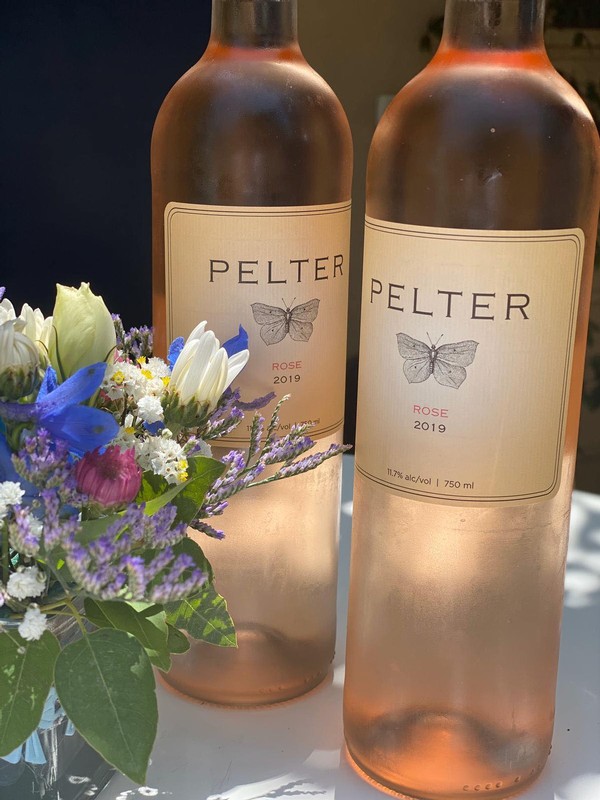
Pelter Rosé (Light & Refreshing)
Produced from Grenache, Sinsaou, and Counoise grapes, Pelter Rosé offers a light and refreshing drinking experience.
Delicate pink in color, it bursts with aromas and flavors of red grapefruit, strawberry, and lemon.
The soft, long finish makes it a perfect patio sipper.
A delightful partner to: seafood, salads, fresh fruit, and sweet pastries.
We're thrilled to announce a new shipment of fresh Rosés has just arrived!
Ready to explore? Discover all available Israeli Rosés here.
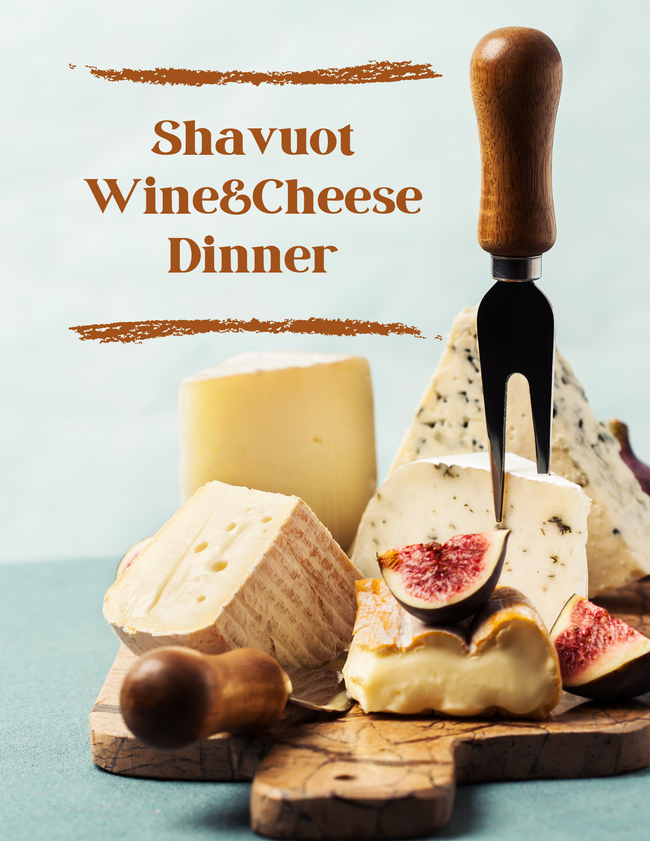
Shavuot, a holiday commemorating the receiving of the Torah at Mount Sinai, falls this year from sundown on Tuesday, June 11th, to Thursday night, June 13th. Though often overshadowed by its fellow pilgrimage festivals, Passover and Sukkot, Shavuot holds a special place in Jewish tradition
Observed seven weeks after Passover, Shavuot coincides with the spring harvest. Traditionally, this harvest season was marked by a pilgrimage to Jerusalem, where Israelites offered their first fruits to God in thanksgiving.
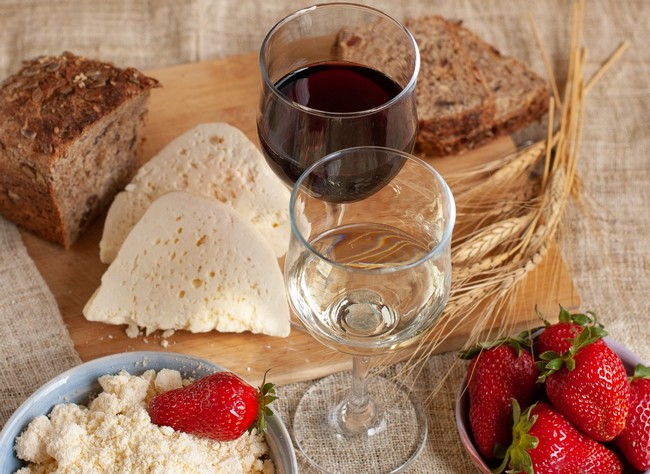
Shavuot also features a unique custom: enjoying dairy foods during the holiday. There are several explanations, but a popular one connects it to the Promised Land, a land "flowing with milk and honey." Blintzes, kugel, cheesecake, ice cream, and of course, cheese, are all popular Shavuot dishes!
While unlike Purim and Passover where drinking is a mitzvah, Shavuot doesn't have a specific requirement for alcohol. However, a fascinating medieval European custom involved keeping a beer barrel in synagogues during all-night Torah study session on Shavuot. Perhaps this practice reflects the belief that a little refreshment can enhance learning!
Wine, a symbol of joy and abundance in Jewish tradition, is a natural accompaniment to Shavuot meals. The lighter-bodied profile of white and rosé wines pairs beautifully with the dairy-rich dishes. These wines are typically made from grapes harvested in May and June, so they perfectly reflect the season of Shavuot.
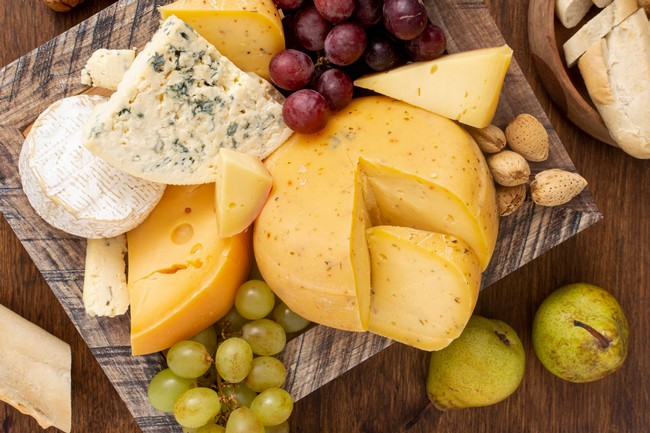
Cheese is a cornerstone of any Shavuot celebration, and this holiday offers a wonderful opportunity to elevate your experience with perfectly paired Israeli Kosher wines. While red wine and cheese are a classic combination, white and rosé wines offer a world of delightful flavor pairings waiting to be explored. To help you create unforgettable combinations on your Shavuot table, we'd like to share a few suggestions for pairings featuring delicious Israeli Kosher white and rosé wines, along with some cheese recommendations that will create delightful flavor experiences.
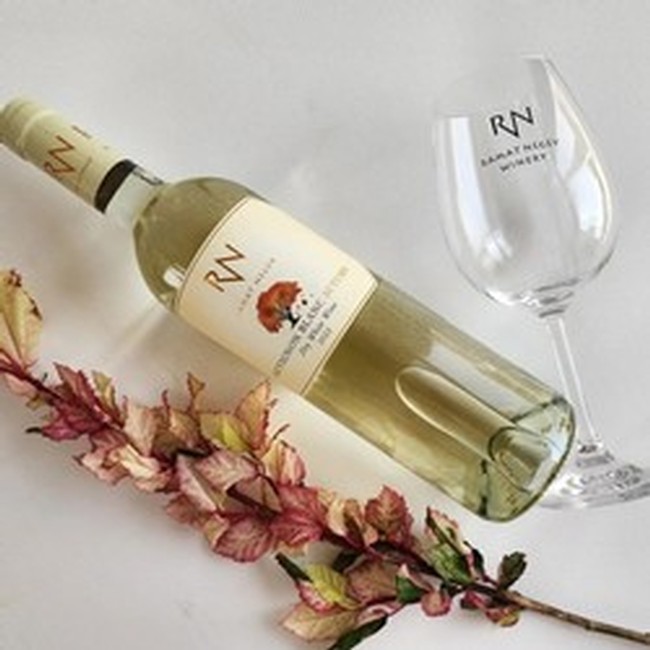
Ramat Negev Neve Midbar Sauvignon Blanc is a young white wine that boasts bright citrus notes and subtle herbal hints, making it a versatile companion for your cheese board. It gracefully elevates the flavors of creamy Brie, Gouda, Gruyère, or feta.
For a bolder pairing consider Asiago. Its strong aroma finds a delightful counterpoint in the lightness and dryness of the Ramat Negev Neve Midbar Sauvignon Blanc. The wine's acidity cuts through the cheese's richness, creating a balanced and refreshing taste.
Love goat cheese? Plain goat cheese with its rich tart flavor is also great with this versatile white. The Sauvignon Blanc's citrus notes will complement the cheese's tanginess, creating a harmonious pairing.
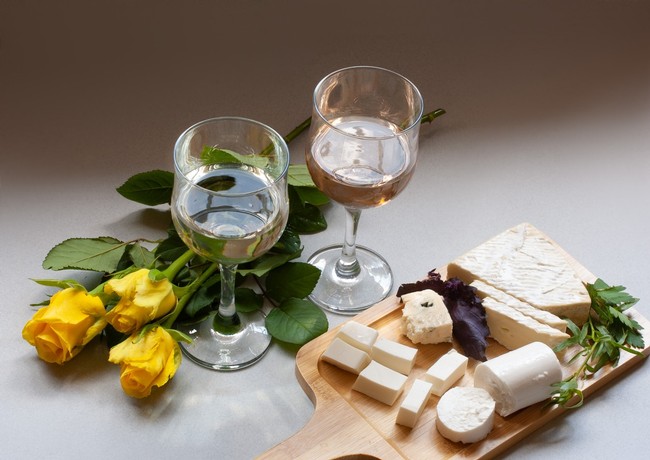
Ramat Negev Neve Midbar Chardonnay: Fresh and crisp with a wonderful combination of apple, pear, lemon, and pineapple flavors – no wonder these Ramat Negev wines from the desert are perfect for summer! This Chardonnay pairs beautifully with mild, semi-soft cheeses like gouda or a mild blue cheese. Fresh figs and nuts would be a delightful accompaniment!
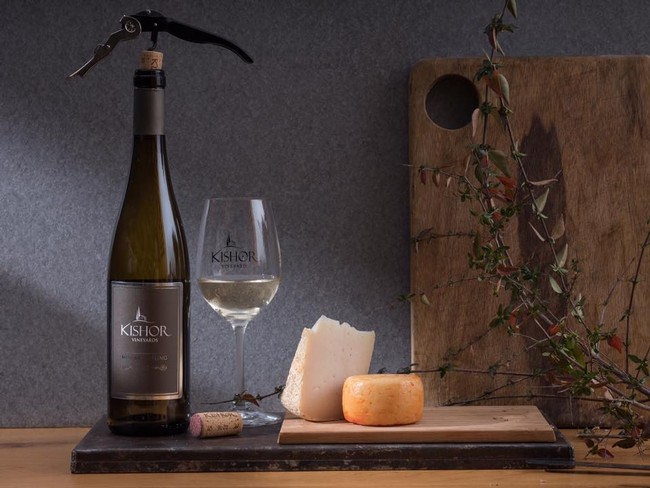
Kishor Misgav Dry Riesling is a lively wine bursting with aromas of exotic fruits, refreshing jasmine, and bright citrus. Soft cheeses like Brie and Camembert are classic pairings, but consider exploring harder, mild washed-rind cheeses like Emmentaler or Appenzeller for a delightful contrast with this elegant wine. For a softer yet equally delicious option, French Munster cheese is a match made in heaven. Its earthy funk dances playfully with the Kishor's fruitiness, while the creamy texture provides a luxurious counterpoint to the wine's refreshing acidity. Each bite becomes a symphony of flavor, leaving you wanting more.
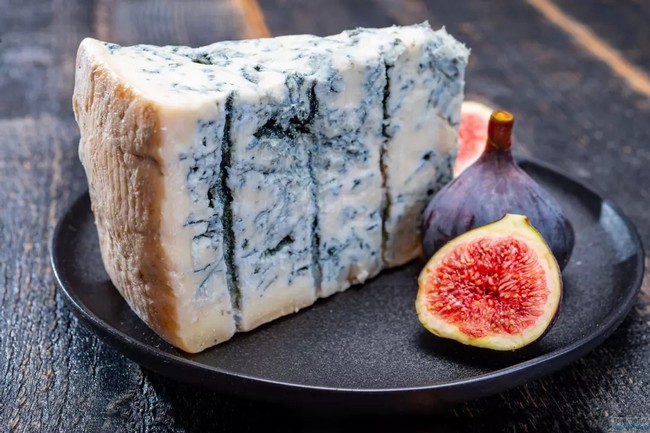
Kishor Viognier: This exceptionally well-balanced white wine boasts a luxuriously rich texture and a touch of buttery roundness. It's an ideal companion for creamy and buttery cheeses. Freshly baked bread with a crispy crunch adds another delightful dimension to the experience.
For a bolder pairing, consider piquant cheeses like gorgonzola. The Kishor Viognier's intriguing bouquet of orange blossom and ginger notes dances alongside the cheese's bold aroma. Meanwhile, the wine's flavors of melon, pear, honeyed orange, vanilla, and cream create a delightful counterpoint, harmonizing beautifully with the cheese's richness.
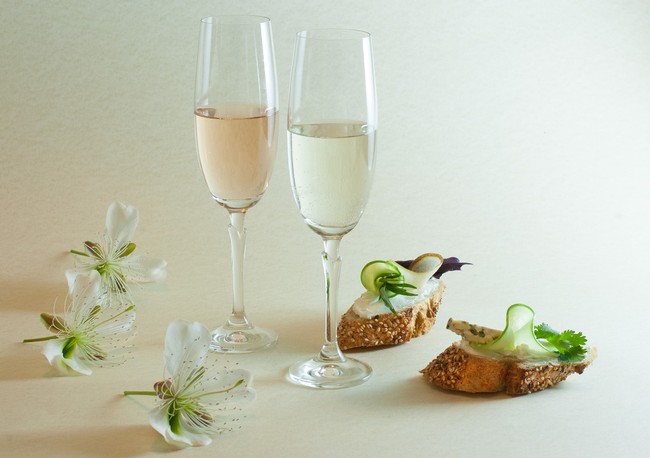
Kishor Kerem White: This beautifully golden and elegant blend of Sauvignon Blanc, Chenin Blanc, and Viognier offers a crisper profile than pure Viognier, with more citrus aromas. Its balanced character makes it a great companion for most soft to semi-firm cow's milk cheeses, such as triple-cream Brie, Gruyère, and cream cheese.
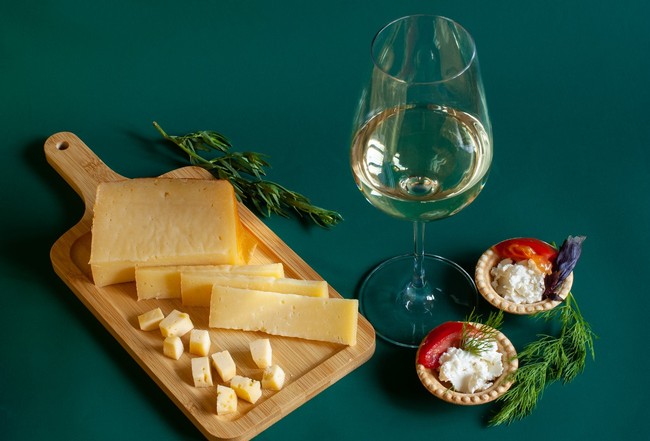
Agur Layam Blanc: This Roussanne-based blend with Sauvignon Blanc, Chardonnay, and Viognier offers a velvety complexity. The wine undergoes fermentation and aging on its lees in barrels for nine months, resulting in a rich profile. It beautifully complements cheeses like mild cheddar, Brie, and herb-crusted goat and sheep milk cheeses. The richness of this wine makes it a perfect partner even for Parmigiano-Reggiano, allowing the cheese's sharp notes to be balanced by the wine's body.
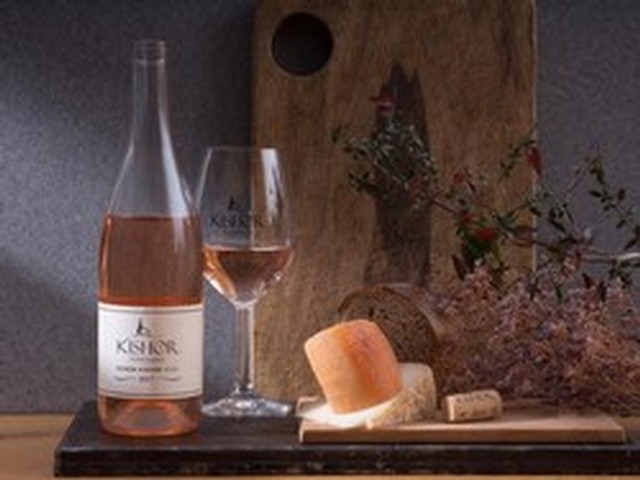
Kishor Rose is an elegant rosé crafted from 100% Grenache grapes. Dry, graceful, and lively on the palate, it boasts hints of red fruit, citrus, and herbs. This versatility makes it an ideal companion to a variety of cheeses. Enjoy it with cream cheese, or balance its bright acidity with the salty tang of fresh cheeses like feta or halloumi (don't forget a fresh ciabatta for dipping in olive oil!). Kishor Rose also complements young and even semi-firm cheeses, pairing well with baby Swiss or a young Cheddar.
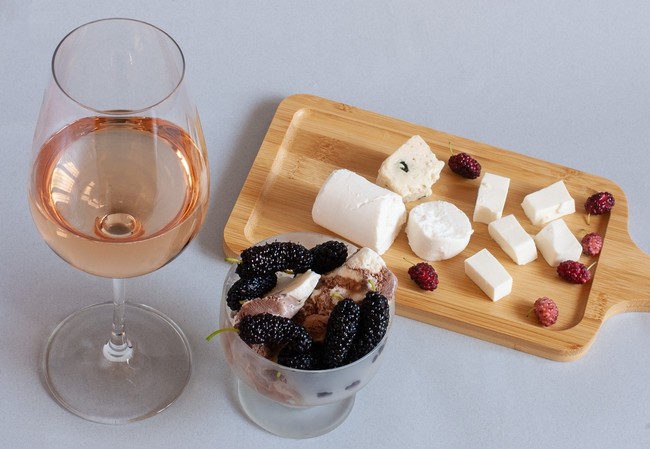
Provence-style Capsouto Cuvée Eva Rosé unfolds like a smooth and easy-drinking rosé, whispering its story through subtle, light-bodied characteristics. Delicate flavors of berry fruit, apricot, pear, and pineapple dance on the palate, their nuanced nature contributing to a silky texture. Crisp acidity adds a refreshing edge without becoming harsh, ensuring a balanced and harmonious experience. This smooth operator complements creamy textures beautifully, making it a perfect match for fresh goat cheese, Cantal, or Brie, where the wine highlights their gentle aromas.

Ramat Negev Kadesh Barnea Rosé is crafted from 100% Cabernet Franc grapes, boasting a beautiful light pink-orange hue. A lively acidity keeps it refreshingly crisp, leading to a delightful, mellow finish with a whisper of peach. Perfect for cheese platters, especially those featuring piquant blue cheeses! It also complements fresh fruit and rich cheesecake beautifully, elevating every course on your Shavuot table.
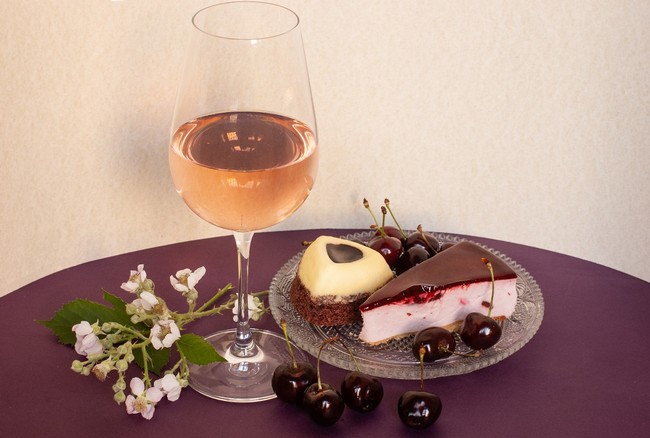
Final Touch
For an optimal wine and cheese pairing, temperature matters. Serve white and rosé wines slightly chilled (45-55°F) to enhance their crisp flavors. And for cheese, let it come to room temperature to enjoy its full flavor and texture.
Now, raise a glass, savor the delicious pairings, and celebrate the bounty of Shavuot with friends and family!
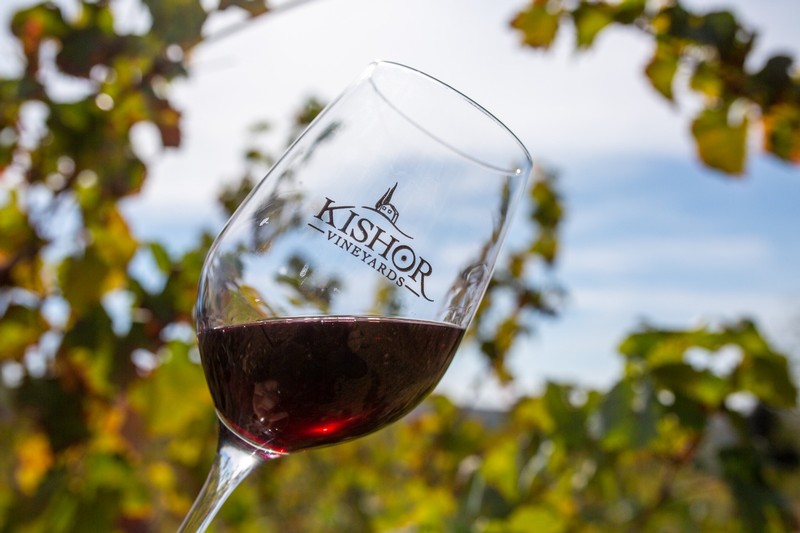
Nestled amidst the breathtaking beauty of the Upper Western Galilee, Kishor Winery transcends the ordinary vineyard experience. Founded in 2010 within Kfar Kishorit, a village for people with special needs, Kishor offers a unique tapestry woven with delicious Kosher wines, a rich history, and a deeply inspiring mission.
Echoes of a Forgotten Legacy
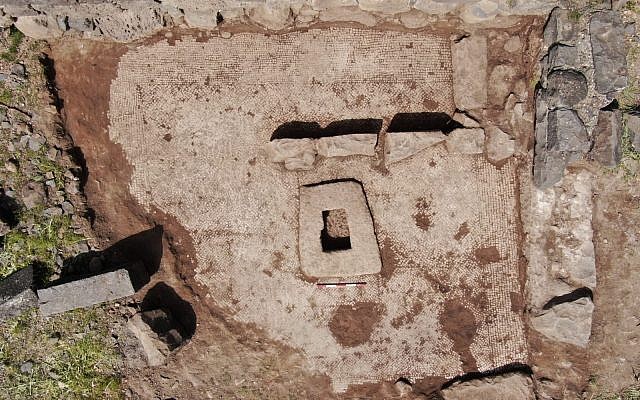
The land upon which Kishor Winery stands whispers tales of a bygone era steeped in winemaking. Standing proudly amidst the vines are ancient winepresses, unearthed testaments to a thriving industry that flourished over a thousand years ago. Imagine a magnificent wine route snaking through these very mountains around 1000 AD, dotted with vineyards and bustling with activity. Sadly, with the departure of the Crusaders and the Islamic conquest, the vineyards disappeared, leaving the land silent for centuries. Not a single vine graced these slopes for over a thousand years.
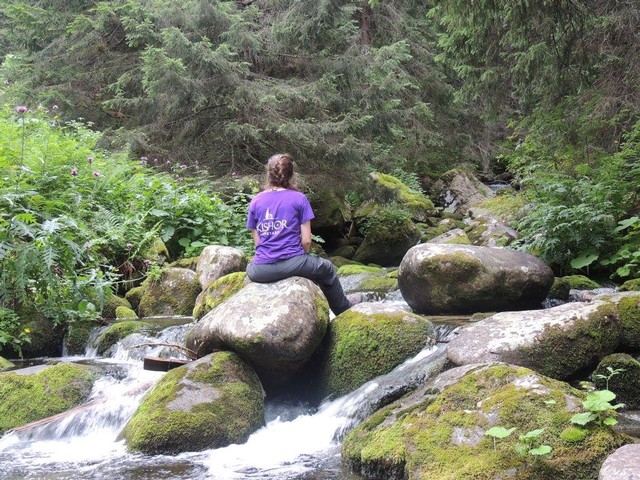
But today, the Galilee became the Tuscany of Israel. It is the most beautiful wine region of the country, with mountains, plunging valleys, stony ridges, running streams and thick forests. In the summer of 2007, a remarkable decision breathed new life into the land around Kfar Kishorit. Inspired by this unearthed legacy and a desire to empower their village members, the residents of Kfar Kishorit made a bold choice: to revive the age-old tradition of winemaking. Led by Richard Davis, the Professions Manager, and Itay Lahat, the Oenologist and Wine Expert, the team planted their first grapevines in 2007 and had their first harvest in 2010.
For such young vineyards, the quality of the grapes is extraordinary. This is no doubt a result of the expertise of Mr. Davis and Mr. Lahat, the dedicated work of all the Kishor employees, but also of the particular terroir of the Western Galilee, which contributes significantly to the grapes' excellence.
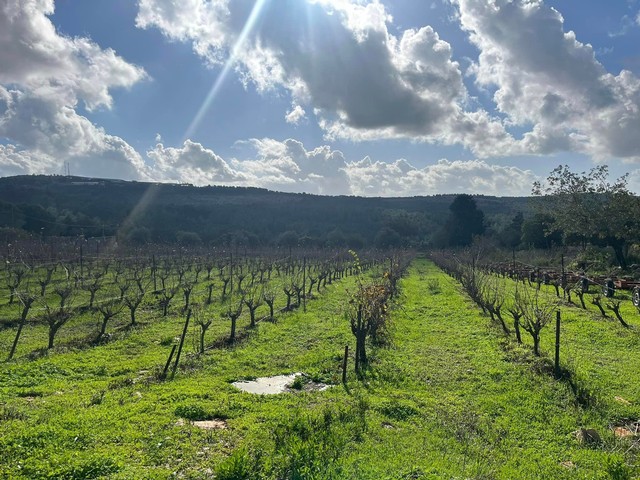
More Than Just Grapes: Cultivating Purpose
Today, Kishor boasts over 60 acres of meticulously cared-for vineyards. But what truly sets them apart is the deep and meaningful involvement of the village members in the entire winemaking process. From the meticulous pruning of the vines to the critical harvest at the perfect moment, and all the way to bottling and labeling the finished product, Kishorit residents are active partners in bringing Kishor wines to life.
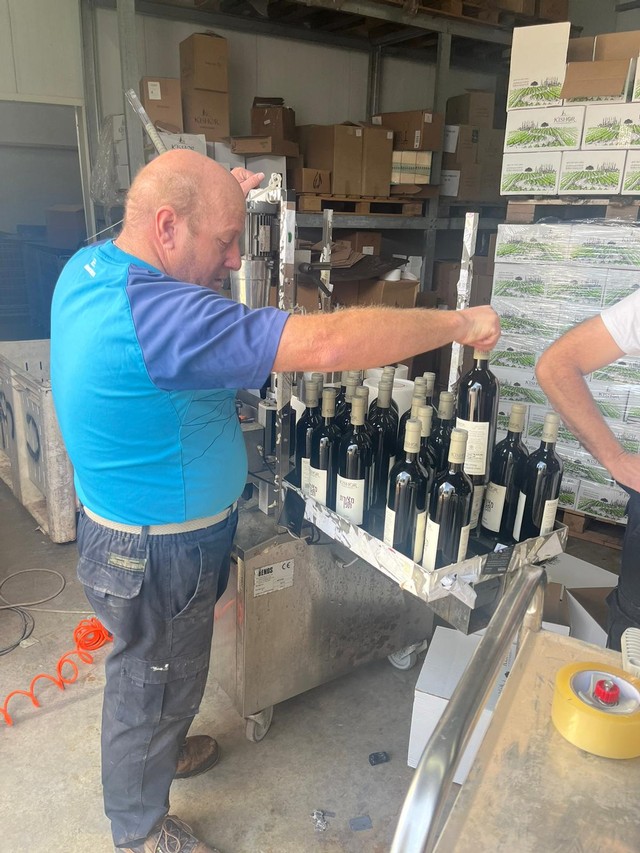
This involvement fosters a profound sense of belonging and purpose, while also providing valuable skill development opportunities. It transcends the act of winemaking, becoming a bridge that breaks down barriers and fosters understanding. Visitors from around the world are drawn to this unique connection, creating a beautiful tapestry of inclusion and empowerment.
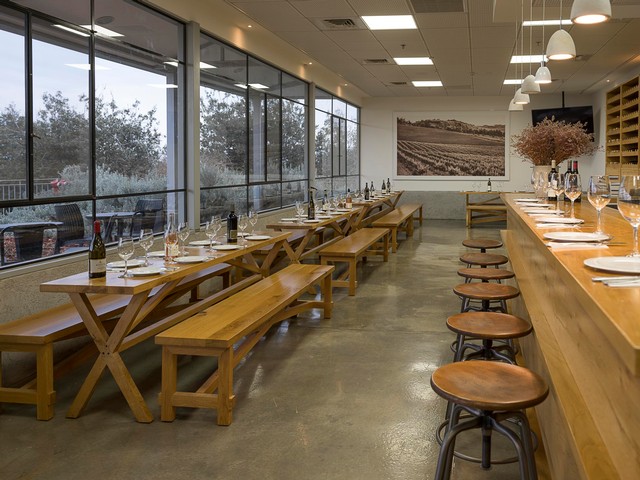
A Perfect Terroir for Exceptional Wines
The vineyards bask in the unique climate of the Galilee, experiencing dramatic temperature shifts between day and night. This diurnal rhythm, coupled with the characteristically rocky terrain, creates the perfect environment for slow and even grape ripening. Imagine cool nights preserving the grapes' natural acidity, while warm days coax forth intense flavors and sugars. This slow maturation process allows the grapes to develop a depth of flavor and complexity that translates beautifully into the finished wines.
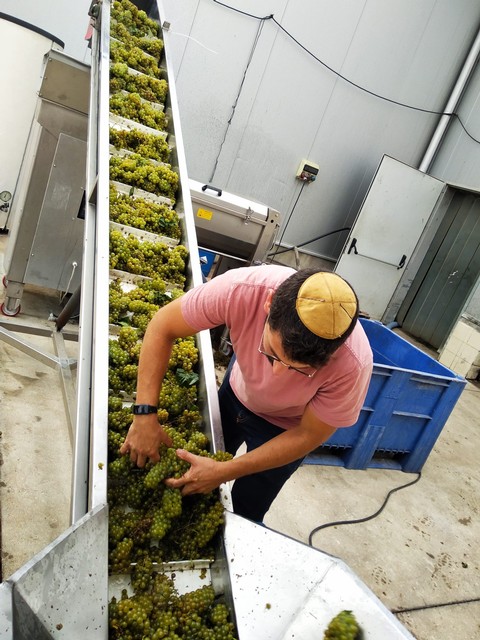
The Terra Rosa soil, rich in limestone deposits, provides the perfect mineral composition for flourishing grape varietals like Cabernet Sauvignon, Cabernet Franc, Petit Verdot, Syrah, Grenache, Sauvignon Blanc, Viognier, and Riesling. This diverse selection thrives in the Kishor vineyards, permitting the crafting of exceptional blended wines alongside single-varietal expressions like their award-winning Viognier. Each bottle is a testament to the dedication and skill that goes into Kishor's winemaking process.
Flagship Wine
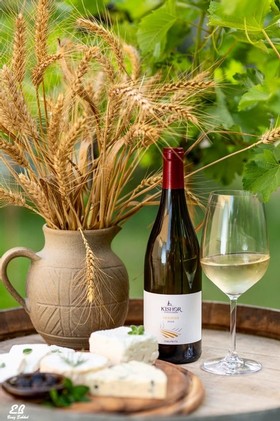
Unveiling one of the winery's most celebrated offerings, the Kishor Viognier, is a revelation for the senses. It’s an exceptionally well-balanced pale-gold wine, boasting a luxuriously rich texture with a touch of buttery roundness. It’s a symphony of white peach, orange blossom, and a touch of ginger on the nose, and flavors of melon, pear, and honeyed orange peel mingle together, accented by a touch of citrus on the palate. Light notes of vanilla and cream add a layer of complexity, while a whisper of herbal and mineral character lends elegance to the overall profile. The finish is exceptionally smooth, lingering pleasantly and leaving you wanting more.
This medium-bodied Viognier is not simply a delightful solo experience. Alive with crisp, vibrant acidity, it pairs beautifully with roast chicken or poached salmon, allowing the flavors to complement each other perfectly. Creamy and buttery cheeses and freshly baked bread find an equally delightful companion in Kishor Viognier. A true crowd-pleaser, this wine is sure to impress all wine drinkers, from novices discovering the world of Viognier to connoisseurs seeking a truly exceptional expression of the grape.
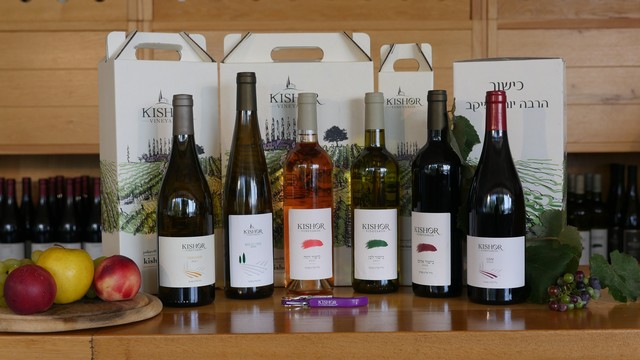 A Diverse Selection for Discerning Palates
A Diverse Selection for Discerning Palates
Beyond Viognier, Kishor Winery offers a diverse selection of wines to tantalize your taste buds:
One of the finest Kosher Rosés you'll ever encounter!
Kishor's GSM blend, a harmonious marriage of Grenache, Syrah, and Mourvèdre, that boasts intense fruitiness with a hint of spice.
Kishor Tefen Red, a Bordeaux-style blend that features earthy, green, and smoky-meaty notes.
Refreshing and delightful Rieslings.
And much more!
